
O
THE M A GAZINE TH AT KEEPS Y OU AT THE F ORE F RON T BUSINESS | INVESTMENT | FINANCE | POLITICS | SATIRE www.forerunner.co.za 3rd Quarter 2022 | ISSUE 1 ENERGY Eskom, comeback or burnout BUSINESS Future of mining Transport sector under attack POLITICS & SATIRE Ramaphosa’s re-election SA’s new national anthem INVESTMENT The art of investment art
F
R E R U N N E R


Providing





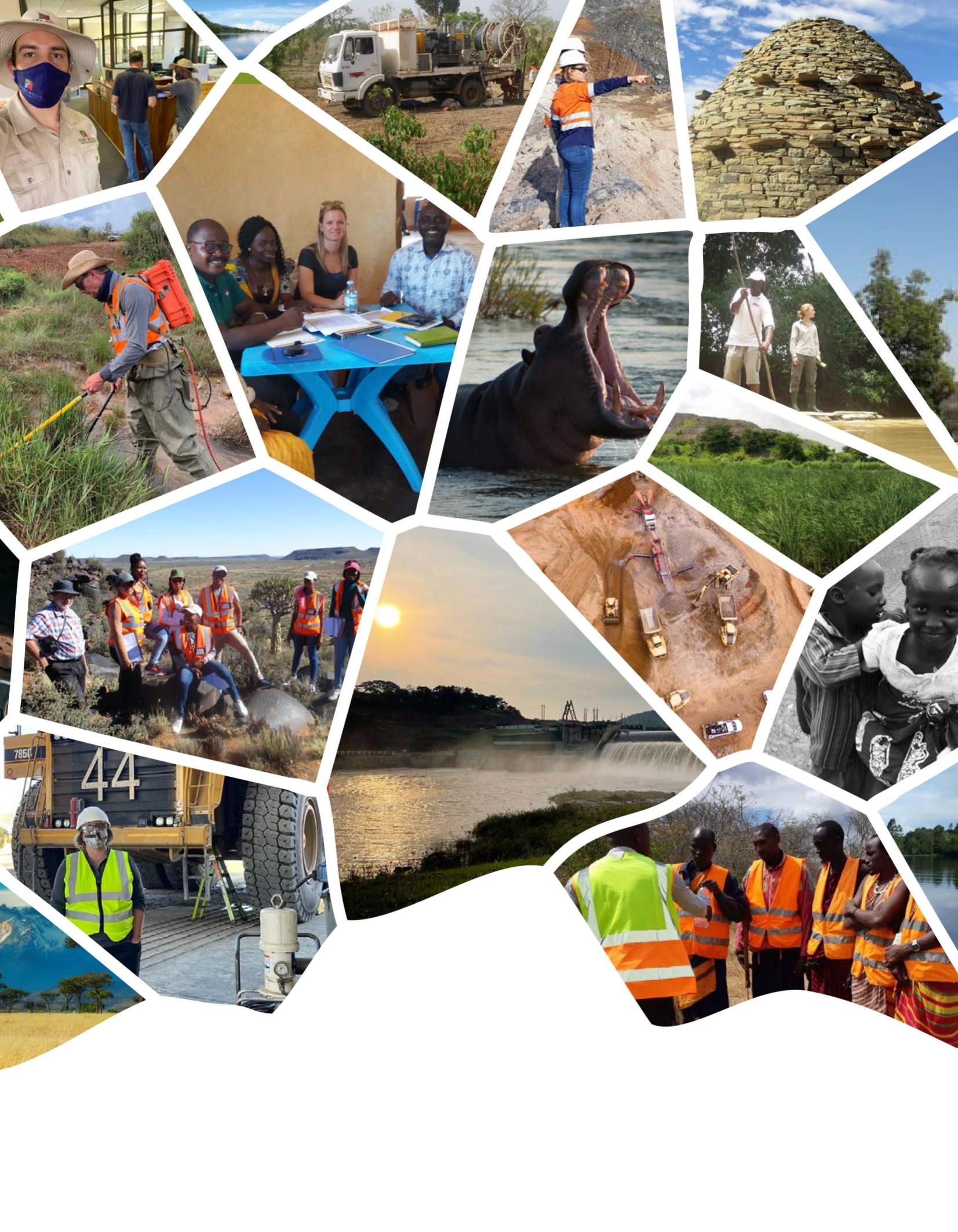
e environmental, social and
the
info@digbywells.com | www.digbywells.com
sustainability solutions to
resources, infrastructure, energy and agriculture sectors globally.





COVER STORY 20 ENERGY 1 - ESKOM…COMEBACK OR FINAL BURNOUT 28 ENERGY 2 - THE ESKOM TIMELINE… DISASTER IN THE MAKING REGULAR FEATURES 10 BOARDROOM BUZZ A SATIRICAL LOOK AT SOME BOARDROOM TALK 36 THE INTERVIEW ROGER BAXTER, CEO OF THE MINERALS COUNCIL, ANSWERS THE QUESTION, WHERE TO SOUTH AFRICAN MINING? 52 THE SPOTLILGHT KANONKOP BLACK LABEL PINOTAGE 2019 AND MUKWA RIVER LODGE 67 FROM THE PRESIDENT’S DESK A SATIRICAL NEWSLETTER 70 POLITICUS A NEW NATIONAL ANTHEM FOR SOUTH AFRICA & OTHER SATIRICAL THINGS 10 20 36 52 70 FORERUNNER | www.forerunner.co.za | Issue 1 | 5
THREE INTRINSIC VALUES: ACCURACY, RELIABILITY AND EASE OF USE. THE 6X ®. OUT NOW!

Admittedly, at first glance, you can’t tell what’s inside the new VEGAPULS 6X radar sensor: A high-precision level instrument that doesn’t care if its measuring liquids or bulk solids. Only its colour gives you a hint that it’s going to be great to use.




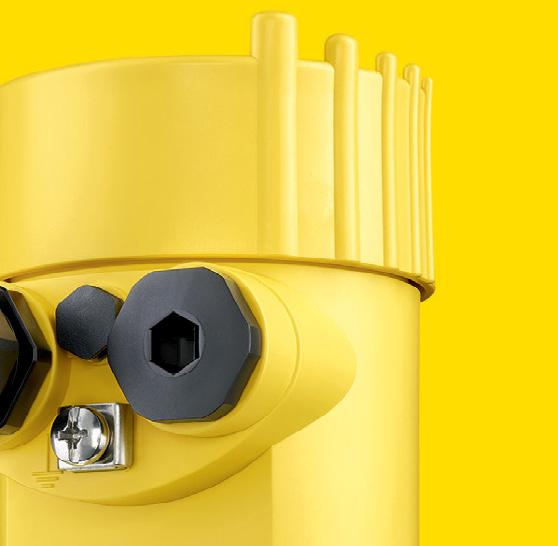
VEGA. HOME OF VALUES. www.vega.com/radar

In this issue
PUBLISHER
TTL Media www.forerunner.co.za
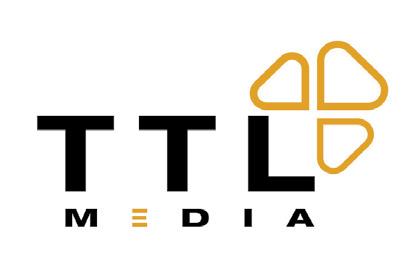
MANAGING DIRECTOR : Michael Keys
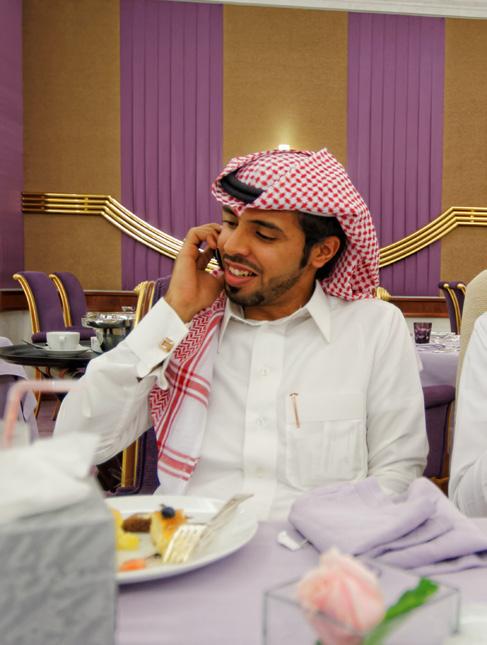
EDITOR: Stef Terblanche Phone: 076 647 8235
SALES MANAGER: Marc Wessels
SALES EXECUTIVES: Vera Valentine - sales2@ttlmedia.co.za
Sachin Brown - sales3@ttlmedia.co.za
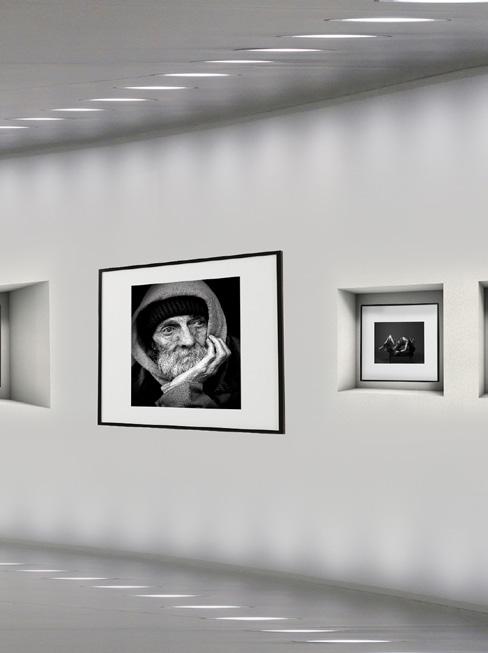
Marco Gibbs - marco@ttlmedia.co.za
Marc Wessels - marc@ttlmedia.co.za
Kim Jeneke - kimjen@ttlmedia.co.za
ACCOUNTS:
Tania Johnson tania@ttlmedia.co.za
OFFICE MANAGER: Sumaya Abrahams sumaya@ttlmedia.co.za
DESIGNED BY: KCDA - Design Agency Jaco Kotze - jk@kcda.co.za www.kcda.co.za - 021 981 6333

PRINTED BY: F A PRINT CC Phone: 021 510 5039 Fax: 021 510 5038 Email: faprintcc@yahoo.com
DISCLAIMER
Views expressed in articles are those of the author and not necessarily those of FORERUNNER MAGAZINE. The publisher accepts no liability of whatever nature arising out of / or in connection with contents of the publication. Copyright subsist in TTL MEDIA & FORERUNNER MAGAZINE and, in the case of freelance photographers and writers, in the individual concerned. Material in this publication may not be reproduced in any form without the permission of the editor
14 Luxury guest villas WHERE KINGS AND OIL BILLIONAIRES COME TO STAY 32 TRANSPORT CRIMINALS ARE KILLING SOUTH AFRICA’S VITAL TRANSPORT SECTOR 44 INVESTMENT THE SATISFYING AND REWARDING ART OF INVESTING IN ART 58 POLITICS WILL PRESIDENT CYRIL RAMAPHOSA WIN A SECOND TERM? MOSES MUDZWITI SHARES HIS THOUGHTS 63 ECONOMY LESSONS FROM SAUDI ARABIA FOR SOUTH AFRICA
14 44 63 F O R E R U N N E R THE MAGAZINE THAT KEEPS YOU AT THE FOREFRONT BUSINESS | INVESTMENT | FINANCE | POLITICS SATIRE
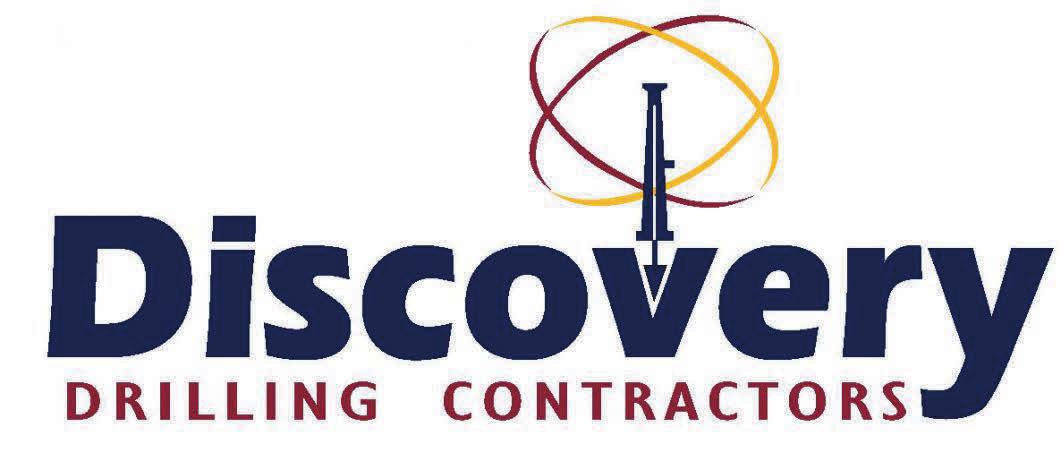
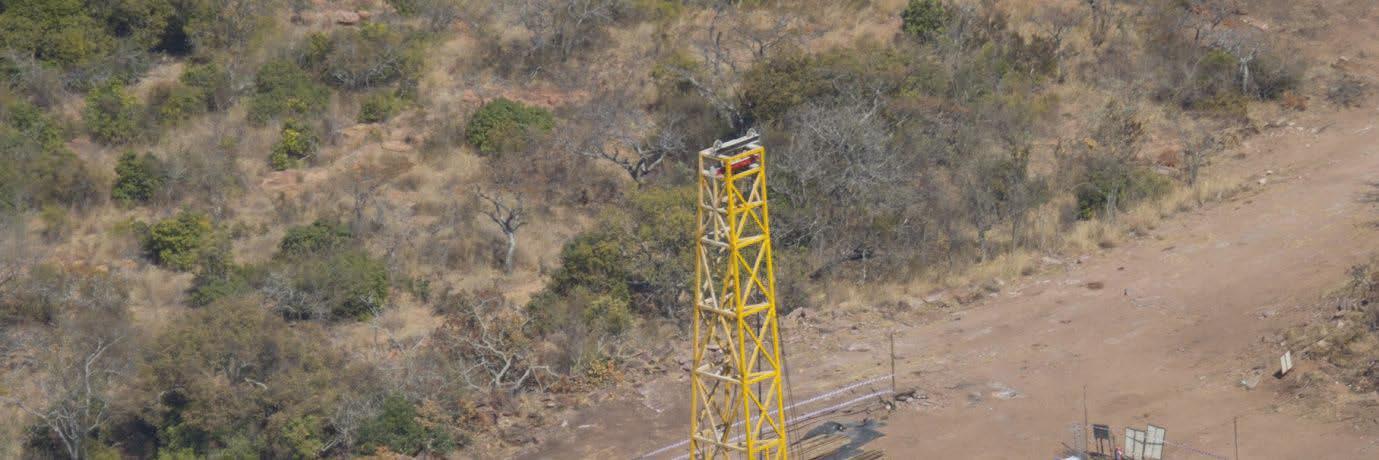

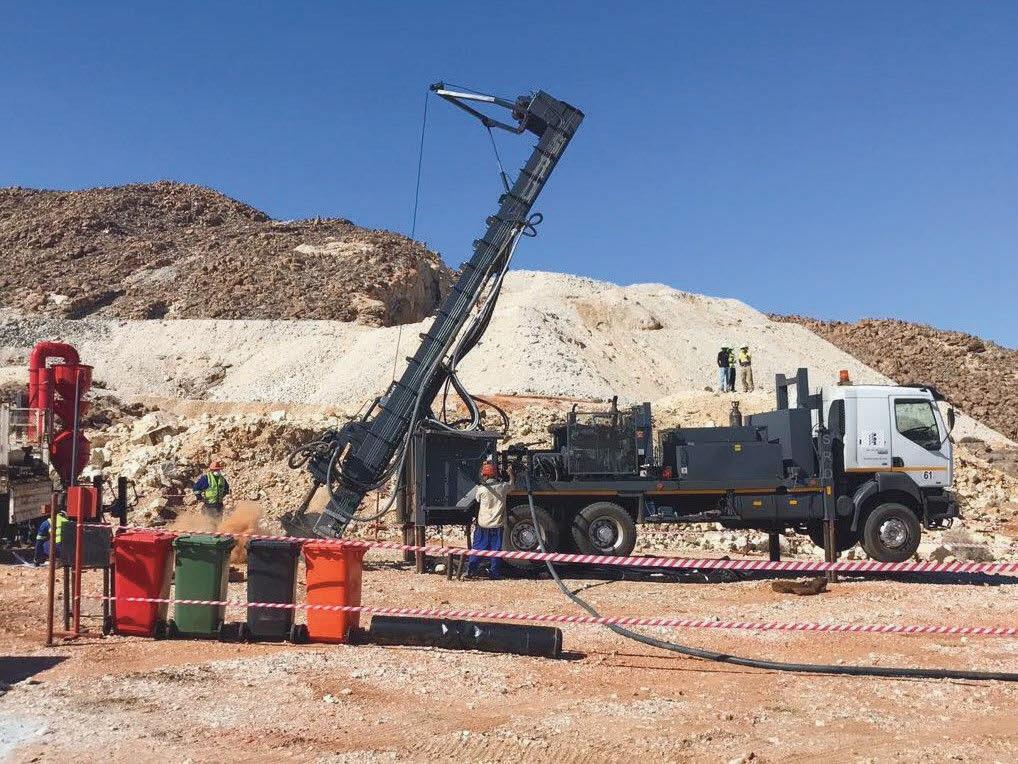
SOUTH AFRICA Tel: +27 14 573 3444/666 E-mail: admin@discoverydrilling.co.za www.discoverydrilling.co.za BOTSWANA Tel: +26 7 396 0053 Fax: +26 7 396 0143 E-mail: kowie@discoverydrilling.co.bw
EDITOR from the
Starting a fresh new conversation
It is with much pride and joy that we present to you…Forerunner.
This is the launch edition of our brand-new magazine that strives to bring a fresh new conversation to the South African debate with news, views, interviews and more.
In due time, having earned the right, I trust Forerunner will have become the quintessential go-to publication in the South African market for the best and latest on business, finance, investment, politics, government, satire, and rounded off with a dash of lifestyle and leisure. As our name implies, we want to keep you, our readers, at the very forefront of everything important happening in South Africa today.
With Forerunner we endeavour filling a vital void in South Africa’s toplevel decision-making environment, bridging the communication and information gap between the public and private sectors with our definitive analyses, articles, thought leader pieces, satire and interviews.
In this, our very first edition, Eskom and South Africa’s energy crisis were an easy choice as our cover story. More than anything else, the precarious situation around Eskom’s broken electricity provision threatens
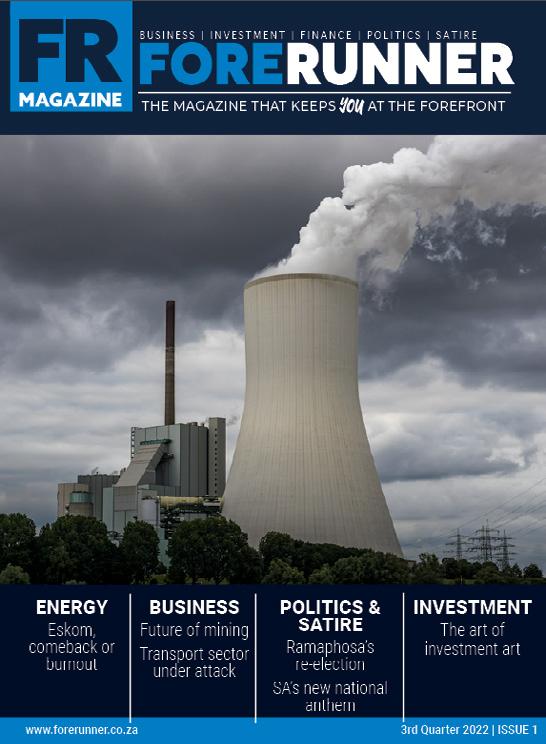
our economy and our society. We pose the question whether government will be able to fix it.
And in an in-depth interview with Roger Baxter, CEO of the Minerals Council South Africa, we delve deep into the current state and future prospects of mining in South Africa. Once the cornerstone of the South African economy, mining has evolved through many transitions to where it is today – still as important a sector as ever before. But it also faces some significant challenges.
From mining we go to the transport industry – with October being Transport Month - and analyse how criminals are sadly busy destroying this vital economic sector across all modes of transport. But it’s never too late, and much can still be done to return the sector to its former health, allowing it to fully play its critically important economic role.
On the investment front, we join two experts on an eye-opening, aesthetically pleasing journey into the fascinating world of investment art. Our guest writer, Moses Mudzwiti, shares his take on Cyril Ramaphosa’s chances of winning a second term as ANC president. Then there’s a piece on how Saudi Arabia, as the fastest recovering and growing post-Covid economy, can provide some important lessons to South Africa.
On the leisure and lifestyle side, we look at some magnificent villas to rent, as well as shining a spotlight on the 2019 Kanonkop Black Label Pinotage and the exclusive new Mukwa River Lodge on the banks of the Zambezi River. Finally, we round things off with a light-hearted, satirical look at business and politics in our regular columns - Boardroom Buzz, From the President’s Desk, and Politicus.
Please feel free to send us your opinions and ideas – you’ll find all our contact details on the credits page. And with that, I truly hope you will enjoy our maiden edition.
Yours sincerely
Stef Terblanche
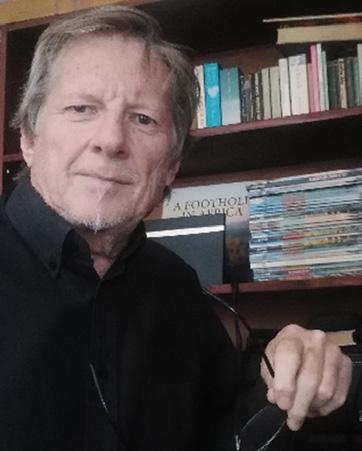
FORERUNNER | www.forerunner.co.za | Issue 1 | 9
BOARDROOM BUZZ

B attle of the billionaires and their nomdeplume companies
All political parties in South Africa are strapped for cash, none more so than the governing ANC perhaps. The latter cannot even pay its staff… for many months now. And making their lives even more miserable – if misery can be a condition that afflicts political practitioners – is the 2018 legislation they all supported that requires disclosure of their donations and places a cap on them.
What a wonderful law that is, for now we know who’s giving how much money to which political party, although we still have to guess why. Maybe that’s what Cyril Ramaphosa hoped to do with those dollars stashed in his furniture before they got stolen? Who knows, because he refuses to tell Parliament, last time we checked at least.
10 | Issue 1 | www.forerunner.co.za | FORERUNNER
Nonetheless, against this legal background we have just learnt of the battle of the billionaires – that is, who is giving the largest donation to which party. But we still have to be good sleuths to find out just who exactly is behind some of the biggest donations. A little whispering birdie told us that some donors who prefer staying in the nameless shadows are using a loophole in the Political Party Funding Act to make use of different commercial or legal entities to donate in the name of those entities and above the annual threshold of R15-million donation per person. That’s cap-busting anonymity for you! Clever trick.
It’s no surprise then that our battling billionaires also made use of this loophole. Here they are: the largest donors to South Africa’s two largest political parties are billionaires Michiel le Roux and Patrice Motsepe. Le Roux, founder of Capitec Bank in which he has an 11% stake, donated R15-million to the DA via an obscure company registered by him and Johan le Roux and called Fynbos Ekwiteit (Pty) Ltd. What a flamboyant name for a company that doesn’t seem to do any business at all. Outdone by Le Roux, Motsepe – brother-in-law of our stolen-dollars President – only managed to bankroll the ANC to the miserable tune of R10 million, and did so in the name of his company, Botho-Botho Commercial Enterprise (Pty) Ltd.
Botho Botho is not to be confused with Batho Batho Trust, which is invested in petroleum giant Shell’s exploration business, and which donated R15-million to the ANC last year. Batho Batho Trust in turn has a majority stake in Thebe Investments, the local empowerment partner of Shell SA. Quite recently our intrepid Minerals and Energy Minister Gwede Mantashe wanted nothing more than to give lucrative offshore gas exploration rights to Shell, even pleading their case in two courts when those nasty environmentalists and affected communities successfully tried to stop them. A wounded Mantashe accused these environmental groups of “harassing” Shell and said their objections amounted to “apartheid and colonialism of a special type”. What type would that be, we wonder – the political party funding type
perhaps? You can be sure that’s not what the late Joe Slovo had in mind when he coined that phrase.
Meanwhile Herman Mashaba’s Action SA party came in with a measly R750,000 split between two donations - R600,000 from Style Eyes of California (Pty) Ltd and R150,000 donated by Shave & Gibson Group (Pty) Ltd. A few lesser-known businesspeople are behind those. The Patriotic Alliance revealed a donation totalling R310,000, made up of two separate amounts, both donated unashamedly by party leader and convict-turned-businessman Gayton McKenzie. If he also used nom de plume companies is not quite clear.
Meanwhile, whether Motsepe does not trust his brotherin-law to keep the ANC in power and is hedging his bets is also not clear, but his African Rainbow Minerals (ARM), and Harmony Gold Mining in which he has a large stake and of which he is the chairman, together donated an amount of almost R2.2-million to Julius Malema’s Economic Freedom Fighters (EFF). Yes, that’s economic freedom of a different type all right. But Motsepe’s long and generous ARM also gave the DA a big wad of notes. That’s right Mr Motsepe; keep all the bases covered, just in case.
So, there you have it. Whether these gentlemen just love these parties for sentiment’s sake, have family connections, prefer their policies, or want one of them to rule until Jesus comes, is open to speculation. But
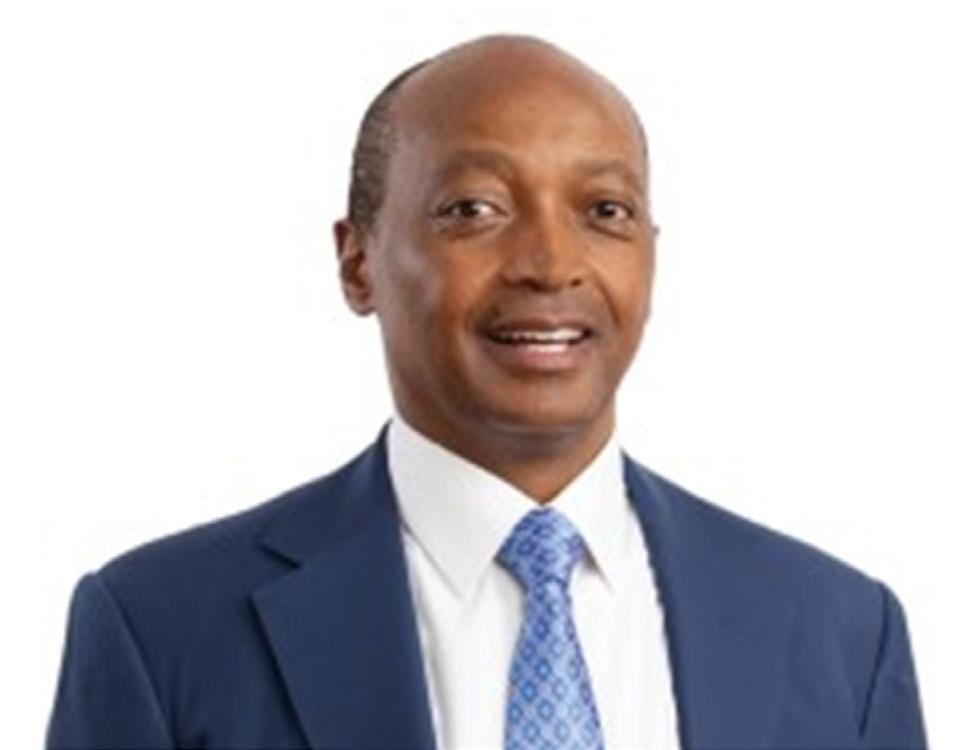
POLITICS & BUSINESS FORERUNNER | www.forerunner.co.za | Issue 1 | 11
Dr Patrice Motsepe
at least now Luthuli House no longer has any excuse for not paying staff. We don’t know yet where Johan Rupert (calm down Julius Malema) or some of the other well-heeled local billionaires will feature in the donor rankings, if at all. But watch this space. There may be more money coming.
Standard Bank’s alive with the sound of music

It has been reported that some strange noises have lately been emanating from the boardroom and corridors of Standard Bank’s executive floor. On closer inspection it sounds like music, especially singing. A little falsetto mixed with some bass and baritone, some of it decidedly offkey. However, our sources in the bank say there’s a simple explanation for this: it’s been announced that Standard Bank is the headline sponsor for the new season of Idols SA. And everyone has singing fever, from the chief down. It’s even rumoured – but we have no confirmation – that Group Chief Executive, Sim Tshabalala has been taking singing lessons from a world-renowned opera coach. By the sound of it, he may be better off sticking to his day job.
Be that as it may, on a much less offkey note, some 9,000 hopefuls auditioned for this year’s season 18 instalment of the much-loved competition which premiered on July 17. The theme for this season
is ‘Singing a Different Tune’ – which also explains the singing noise in the bank. “True to our values at Standard Bank we want to give young South Africans the tools and support they need to achieve their dreams and aspirations and this sponsorship helps us do just that,” says Lindy Lou Alexander, Brand & Marketing Consumer & HNW honcho at Standard Bank. All we can say is, happy singing to Sim and his team, and to the 9,000 hopefuls!
CEOs and CFOs, are you battling to balance the books and strengthen the bottom line in these trying times? Your troubles are nothing compared to some. Spare a thought for the poor – or soon-to-be-poor – former president, Jacob Zuma, holed up in his Nkandla mansion beside his giant fire pool and cattle kraal as he watches his fortune literally dwindling away right in front of his eyes. And remember, the Gupta Bank is no longer in town, so business rescue is out of the question.
First, back in 2016, our scowling, showerhead-adorned ex-president paid back to the Treasury some R7.8million which a court ruled was a portion of the tax money spent on installing non-security luxury features at his private Nkandla home. In the meantime, our ex-president was busy running up huge legal bills in court case after court case while also trying to avoid the big one – facing trial on charges of arms deal corruption going back decades.
All was well as long as Mister Zuma thought the state was going to pay those bills. But then the courts – up to the Supreme Court of Appeals – last
Never mind your bottom-line, spare a thought for an expresident
12 | Issue 1 | www.forerunner.co.za | FORERUNNER
year shocked him by ruling he had to pay back to the state attorney at least R15-million it paid for legal fees in his corruption case out of a total of some R25-million illegally spent on his various cases. By that July Zuma’s pay-back bill had risen to R18-million and it was said his pension could be attached if he couldn’t pay.
Now adding injury on top of injury, the High Court in Pietermaritzburg has ruled that Anoosh Rooplal, curator of the troubled VBS Mutual Bank, could attach Zuma’s cattle and other assets if he failed to pay back the R6.5-million he still owed the bank from a R7.8mllion bond given to him to help pay back taxpayers’ money for the illegal Nkandla upgrades. For a while Zuma reportedly paid back the monthly instalments of about R70,000 as stipulated in the loan agreement. But then, having fallen from power in February 2018, he soon afterwards stopped paying. The bank, under curatorship after its own directors and officials cleaned it out, now wants its money back.
The land on which Zuma’s Nkandla home stands cannot be attached as it is tribal trust land belonging to the Ingonyama Trust. Try taking that land, and you will invite a response from armed impis like last seen at the Battle of Rorke’s Drift, what with a young and energetic new Zulu king having just ascended the throne. Be warned. And you worry about your bottom line?
Keep your company afloat like a pumpkin
If you are struggling to keep your company afloat post-Covid and now with the Russian-induced nightmare in Europe affecting everyone around the globe, maybe you should get some tips from Duane Hansen. Never heard of him? Neither did we. That is, until Erin Snodgrass of Business Insider US reported his amusing shenanigans. You see, Hansen
celebrated his 60th birthday recently by floating 61 kilometres down the Missouri River in a 383-kilogram pumpkin named ‘Berta’ — and is thought to have set a new world record in the process.
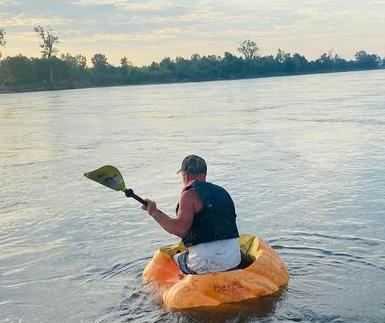
Not only must this be the biggest pumpkin ever grown, but it’s also the first ever pumpkin to stay afloat on a river for such a long time and trip. The previous paddle record for a floating pumpkin was a measly 40 kilometres. Hansen told a local radio station that it had taken him a decade to grow the perfect pumpkin, which boasted a circumference of 3.7 metres. Once he had cleaned out the flesh and pips and was able to sit inside, off he went. But it wasn’t all plain sailing and without risk.
Source: People.com
The radio station reported that he had to traverse rocky shores and shallow sand bars and every time he waved to onlookers on the banks, he risked tipping into the water. The message in this to all boardroom warriors is, if your company is in trouble and going under, get Hansen to fix it. Any man who can stay afloat for over 60 kilometres in a giant pumpkin while waving at people, can surely keep a sinking company afloat. No problem.
POLITICS & BUSINESS FORERUNNER | www.forerunner.co.za | Issue 1 | 13
EXCLUSIVE LUXURY VILLA RENTALS
WHERE KINGS AND OIL BILLIONAIRES COME TO STAY
Ever wondered where the super-affluent, famous Hollywood stars, royalty, or high-profile business and political leaders stay when visiting South Africa? Especially those who place a high premium on top quality, good service, discretion and privacy?
Of course, there are any number of top-class hotels and lodges available. But those come with compromised privacy and many other limitations. The better option – for those in the know - is to rent a luxurious villa complete with personal chef, butler, driver, and security, while leaving all the hassles to someone else.
That someone else is Pieter Brundyn, CEO of In Residence, the company he founded in 2015 to manage some of the most superb properties in South Africa and let them on behalf of their owners to some of the most discerning visitors from around the globe.
But In Residence’s offering also extends far beyond South Africa and includes exquisite properties to rent in exotic destinations ranging from Sicily to Miami, the Caribbean, Mexico, Croatia, and the Greek islands, among more. Brundyn also offers his clients villas in other African locations ranging from Kenya to Mauritius,
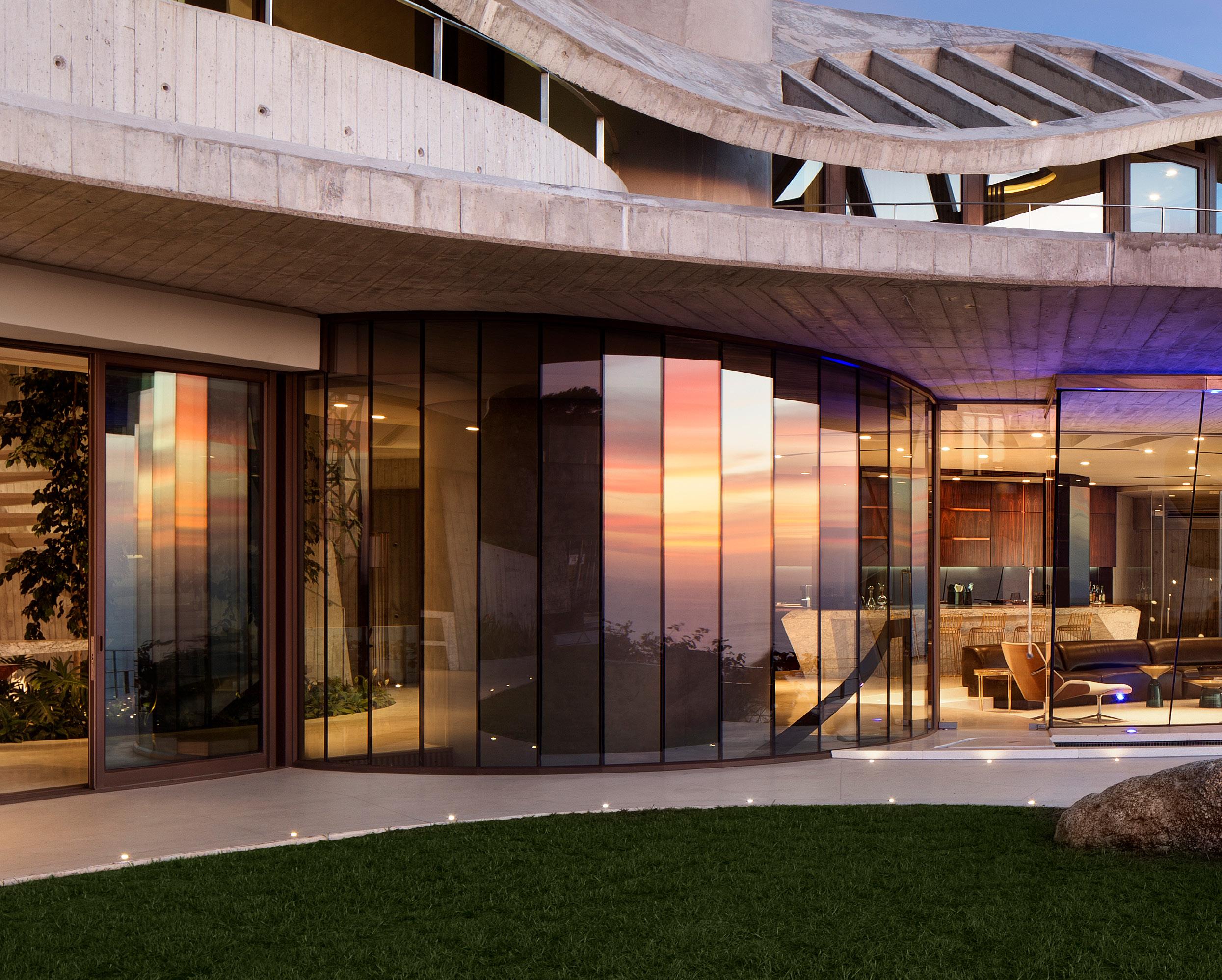
14 | Issue 1 | www.forerunner.co.za | FORERUNNER
Mozambique, Seychelles and Tanzania.
The service provided by Brundyn’s company encompasses the ultimate encounter with luxury well above the 5-star level, together with watertight privacy and flawless service in some of the most beautiful settings in the world. In South Africa, In Residence manages and lets some fifty beautifully designed, superbly appointed and equipped, and professionally maintained and serviced luxury villas and apartments that can be rented for short or longer terms around the Cape Peninsula and in some other sought-after South African locations.
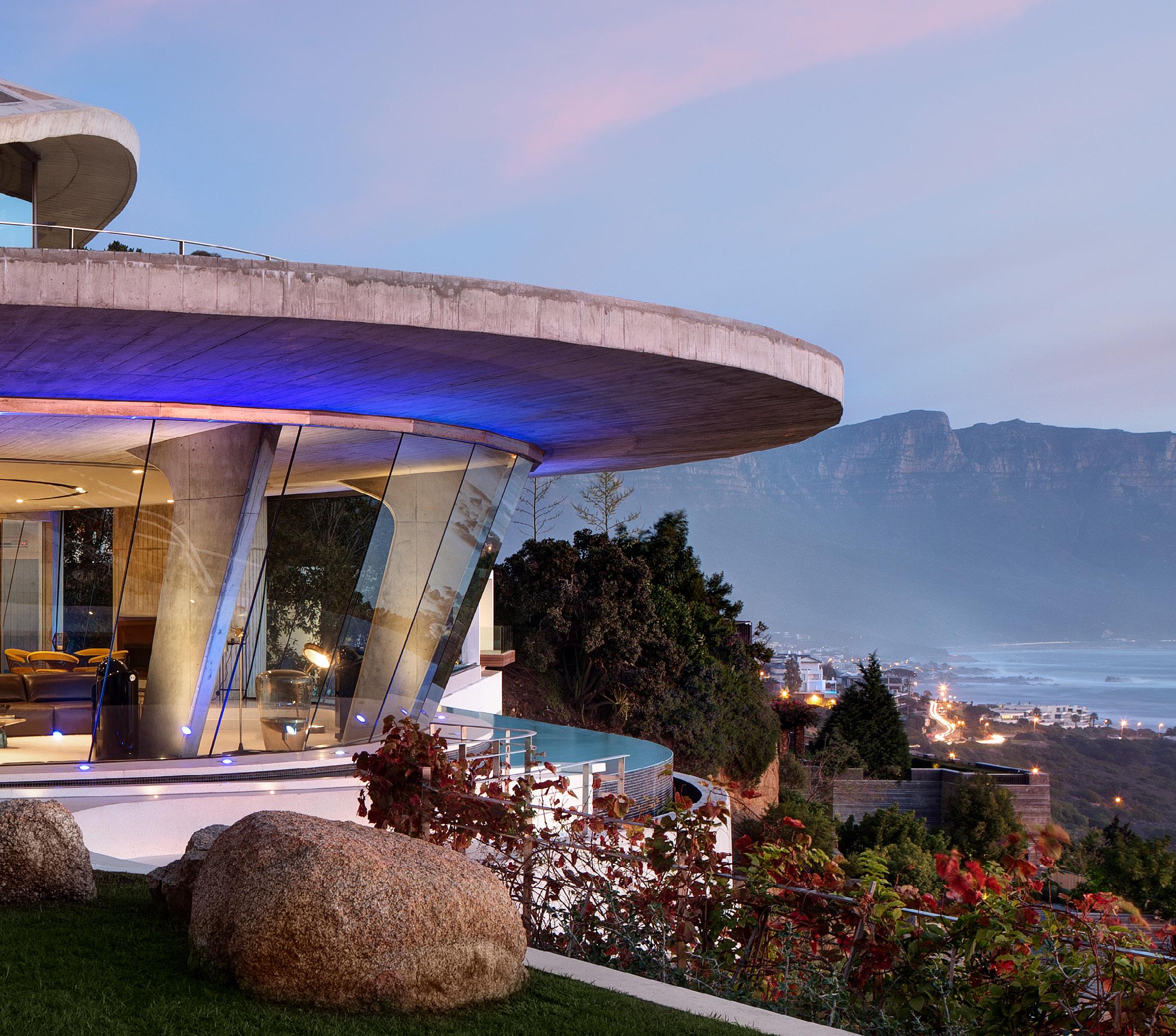
“Our exceptional top-50 collection of villas and other luxurious properties have certainly increasingly become the accommodation of choice for discerning, affluent travellers,” says Brundyn.
The experience starts when your aircraft touches down and you are whisked away in a private helicopter or in your chauffeured luxury vehicle, yours for the duration of your stay. Your stay can be for a few days for business, or a few weeks for a family holiday, or anything in-between or longer.
LIFESTYLE FORERUNNER | www.forerunner.co.za | Issue 1 | 15
You are quickly taken, with VIP protection if you so wish, to your accommodation. Being among the most acclaimed residences in South Africa, they are all architectural masterpieces set in exquisite surroundings. In fact, you will struggle to find anything better anywhere on the continent or even around the world.
World-famous locations
You can choose your location but may have a hard time doing so as they are all so alluring. You may settle for the spectacular ocean and mountain views along Cape Town’s Atlantic Seaboard high above world-famous beaches where the beautiful, the young, the global travellers and the wealthy come to play. Or you can opt for the elegant tranquillity of a Cape wine estate with more than 300 years of fascinating history behind it plus some of the world’s best wines to sample.
Or you may prefer to be surrounded by the spicy-smelling African bushveld where the silence is broken only by cicadas, birds and wild animals that come to visit just meters away from your pool on a famous private game reserve. Another excellent option is to be tucked away within the regal beauty of the Garden Route with views of its ageless mountains, lakes, forests and the ocean. Here the only unauthorised visitors will be seagulls, dolphins and whales.
Service excellence
Awaiting you at your villa will be premier in-house concierge services, a personal chef and your own sommelier (optional), to provide mouth-watering cuisine washed down with the best Cape and international wines. You may also opt for a personal butler plus 24-hours security and full-service attendance.
Everything is taken care of for the guests, from their travel and event bookings, to flower arrangements, cleaning, linen services, driving, shopping, real-time monitoring of water flow, electricity use, pool levels and inside temperatures and almost anything else that comes to mind.
And your daily itinerary may include – apart from your own business or leisure activities – a tour of the winelands, scenic helicopter flips, visits to top-class
restaurants or art galleries, private game viewing drives, chartered yacht cruises, attending major concerts or sports events, or simply relaxing around your villa with every possible need taken care of.
Elegant simplicity
“Our signature villas are nothing short of extraordinary, while our investment in people, skills, technology, and infrastructure is unrivalled in the exclusive villa rental market. Our services are rendered through smart technology to ensure maximum privacy and discreet interactions. Elegant simplicity is at the heart of our success,” Brundyn says.
Many of the properties in Brundyn’s portfolio have been designed by award-winning architecture firm, SAOTA. Reflecting their belief in the strength of contemporary, aesthetic design, the properties are sculpture on a grand scale. They are built to be noticed through the use of featured concrete, glass and other bold aspects that make them highly attractive and sought after.
A valuable partnership evolved when Pieter and his varsity sweetheart, Elana, got married. Sharing his
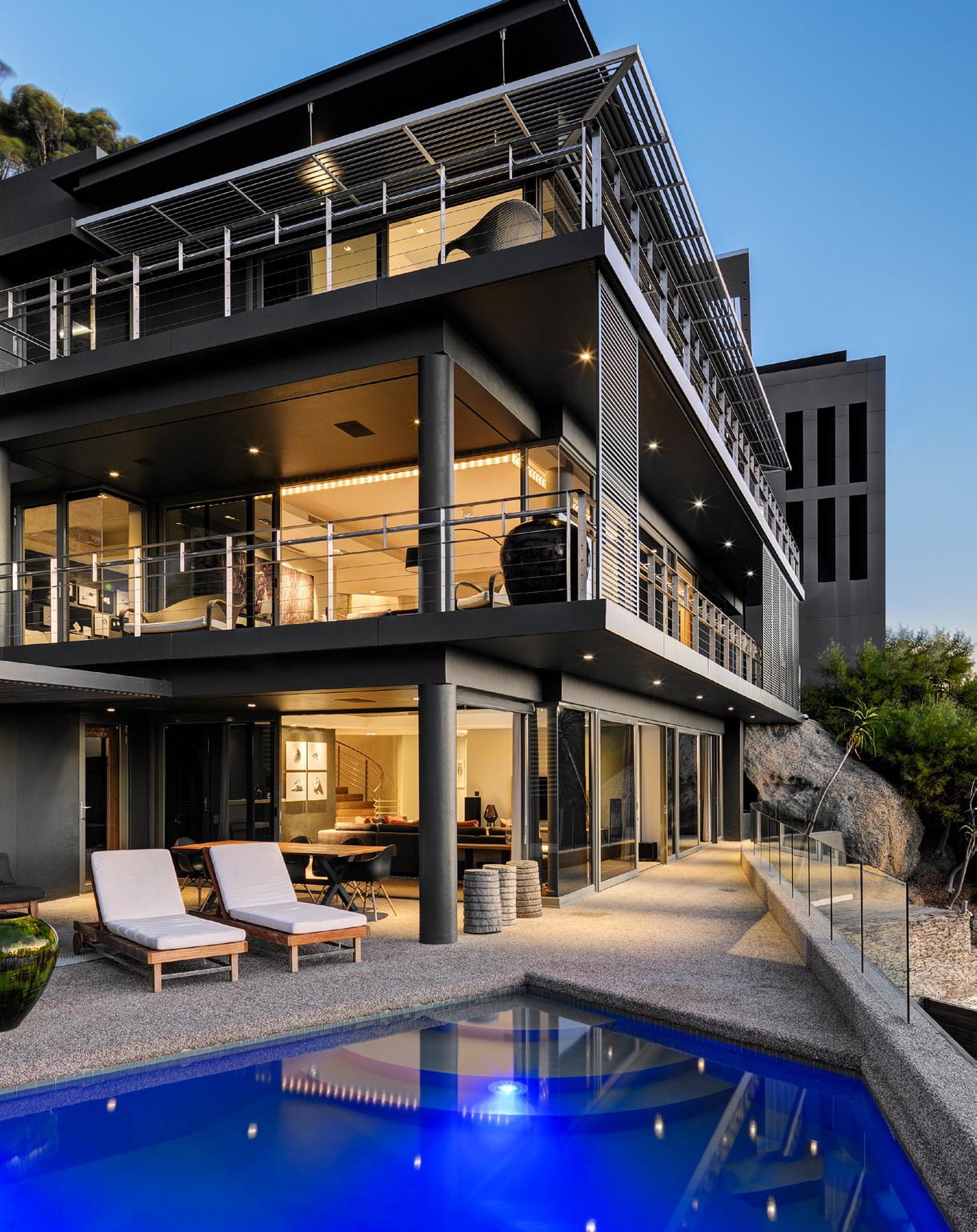
16 | Issue 1 | www.forerunner.co.za | FORERUNNER
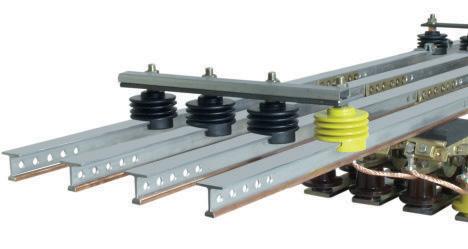

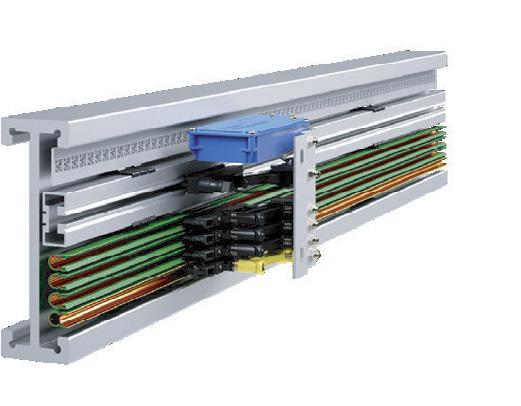
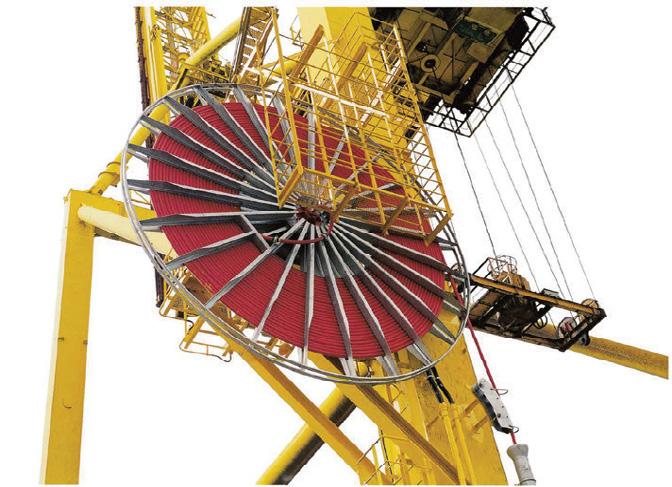
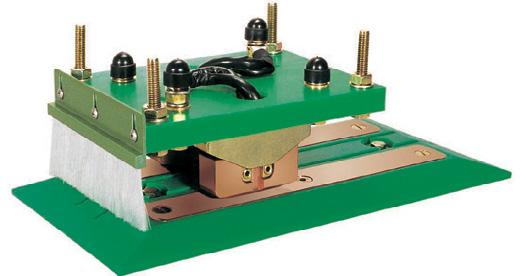

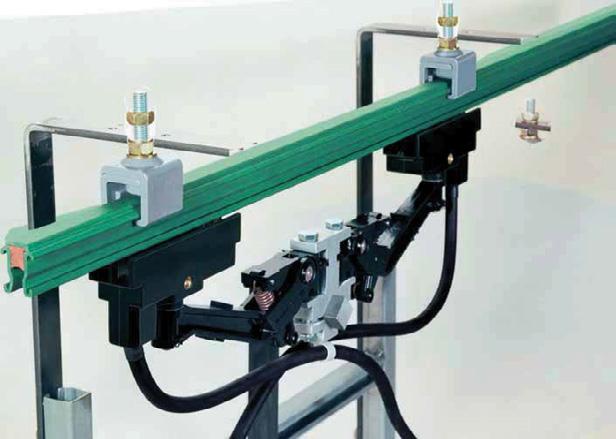
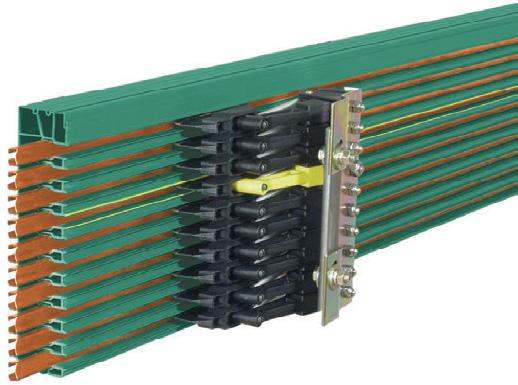
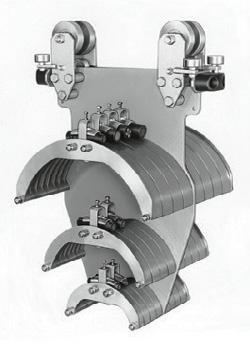



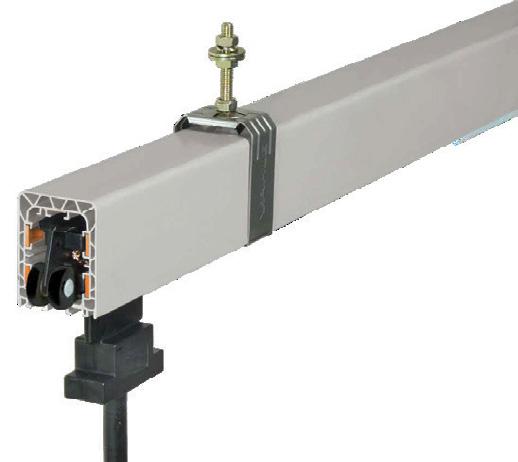
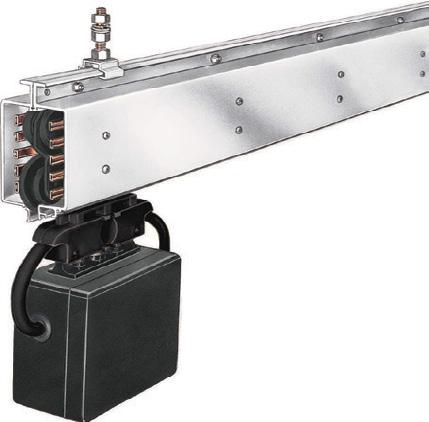
• Copperhead Rail Systems • Cable Reeling Equipment • Insulated Rail Systems • Festoon Systems • Battery charging system and more Tel: +27 11 392 5570/01 Cell: +27 65 880 9374 sales@mheequipment.co.za www.mheequipment.co.za aterials andling lectrification quipment
Working in such a high-powered, big-monied environment and interacting personally with the who’s-who of the world, Pieter Brundyn’s humble beginnings in business seem to be surprisingly unlikely. After studying accounting at Stellenbosch University, he joined his father in the family meat business – Cape Town’s iconic Libertas Meats in Goodwood - and became a butcher. But the entrepreneurial spirit ran strong in the family, and together they built the business into one of the most prominent wholesale meat suppliers in the Western Cape. A few other entrepreneurial ventures followed until Pieter finally launched In Residence in 2015. And the rest is history.
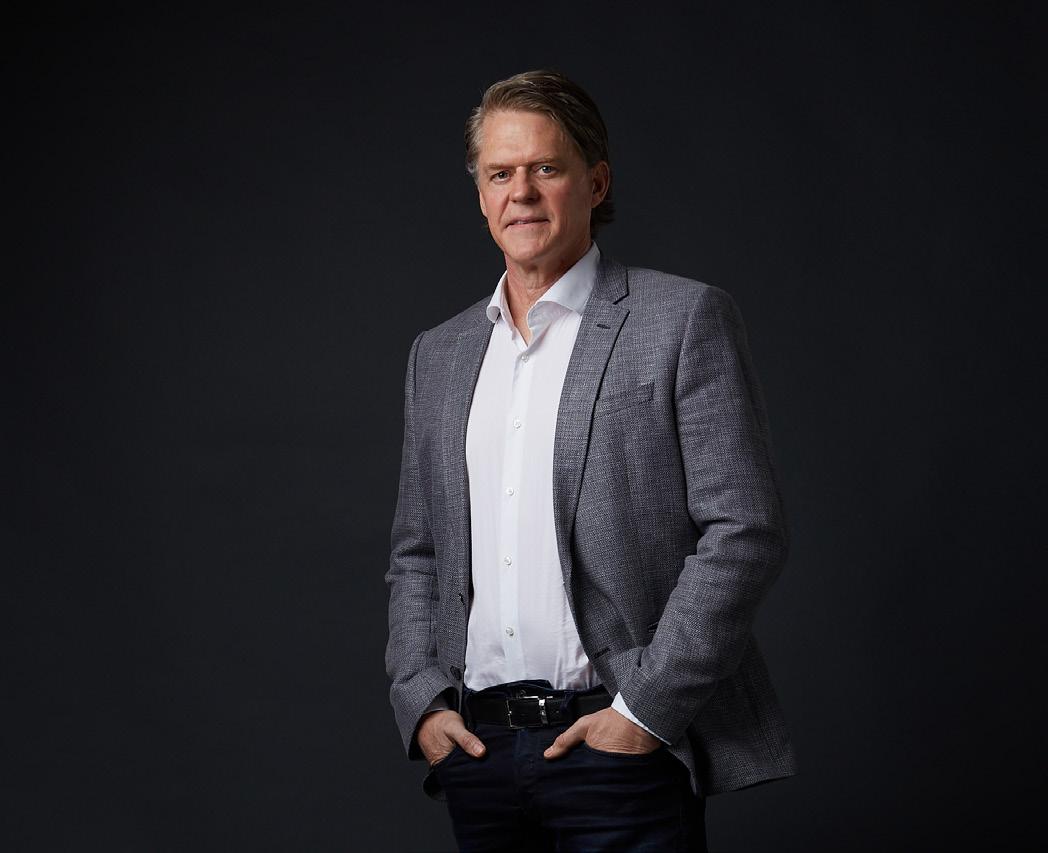
Pieter’s company. It adds a soul-enriching touch to any sojourn in one of these marvellous residences.
Exceptional villas
What makes these villas so exceptional? Each villa is a work of architectural excellence with interiors that incorporate the best in design, finishings, furniture and artwork. The full range of amenities differ from one property to the next but may include anything from curated private art collections to a wine cellar, a bar, pools, billiards room, private cinema, gym, sauna and plenty more. To get a better idea, the following are descriptions of some of these properties.
Pengilly House
interest in the fine arts, design and architecture, they were a natural fit. In 2004 Elana established the BRUNDYN gallery in Cape Town, before spearheading the establishment of the world-class Zeitz MOCAA gallery in the Silo District at the Waterfront – billed as Africa’s answer to the Tate Modern in London. Currently she is the CEO of another exceptional South African art enterprise, the Norval Foundation located on the outskirts of Cape Town.
Their shared love of art is reflected as a fundamental theme running through all the residences managed by
Described as one of Africa’s most iconic architectural homes, this stunning architectural creation is perched on the slopes of Lion’s Head above Clifton’s sandy beach coves. Designed by Peerutin Karol, this home in Cape Town’s swishest beach destination and one of the most exclusive stretches of real estate in Africa, pays homage to mid-century modernist architecture. Here discerning visitors can make themselves at home in Africa’s finest futuristic masterpiece, where urban living blends with nature and time stands still.
Capitalising on the drama of its 270-degree vistas of the Atlantic Seaboard, this home captures the zeitgeist of Hollywood’s jet-set era. Spread over four levels (accessed via two elevators or a spiral staircase), it boasts various entertainment areas; an extensive home spa with indoor heated swimming pool, sauna, steam room and Jacuzzi; a home theatre;
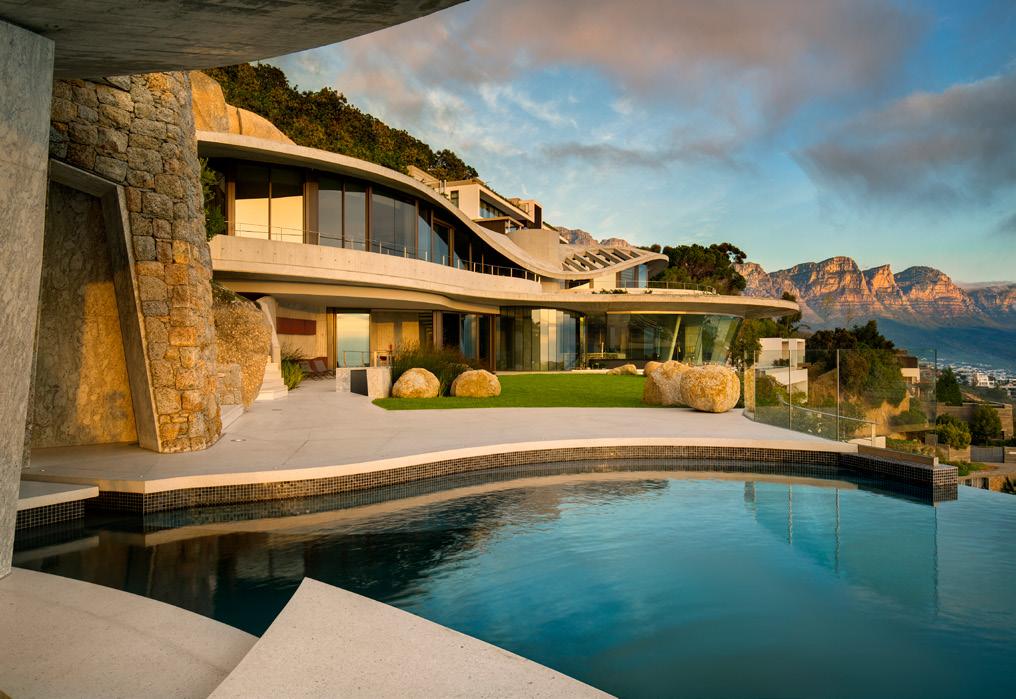
18 | Issue 1 | www.forerunner.co.za | FORERUNNER
Pieter Brundyn
Beyond
a home relaxation pavilion worthy of James Bond, with sunken bar, barbecue areas, and rim-flow swimming pool; digital-games set-up; and large open-plan living area with uninterrupted ocean views, long dining table, sleek kitchen-cum-bar area (plus a behind-the-scenes prep kitchen), all of which flow onto the lawn, outdoor barbecue area and the pavilion. The luxurious bedroom suites on the top floor are private sanctuaries, each with panoramic views and total privacy. Two separate bedroom pods above the entertainment pavilion are perfect for guests seeking extra independence.
Cape Kloof
Suspended over the highest point in Clifton, Cape Town, and with breath-taking views of the Atlantic Ocean, is where you’ll find Beyond, a six-level luxury villa, designed as a timeless wonder by leading South African architecture firm SAOTA. This incredible property is beyond anything you have seen before, with its six en-suite bedrooms, multiple, open-plan entertainment areas, including a bar on a glass floor, gym, sauna, steam room and rim-flow pool. Step into luxury and be amazed.
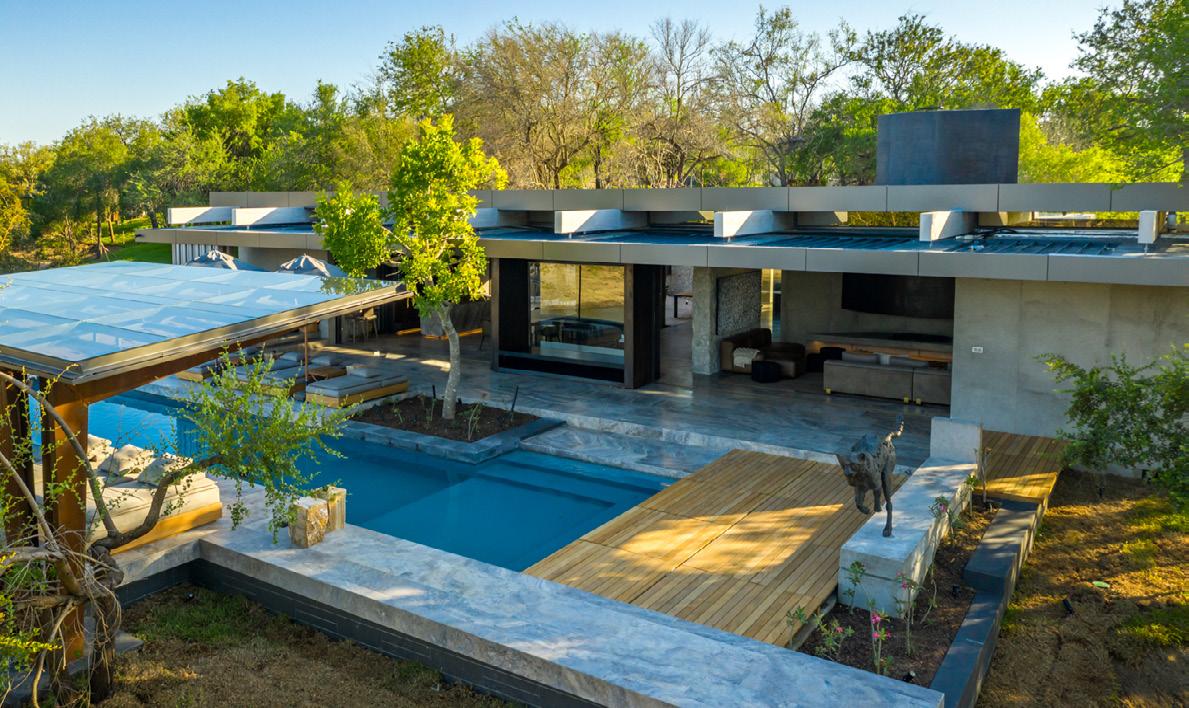
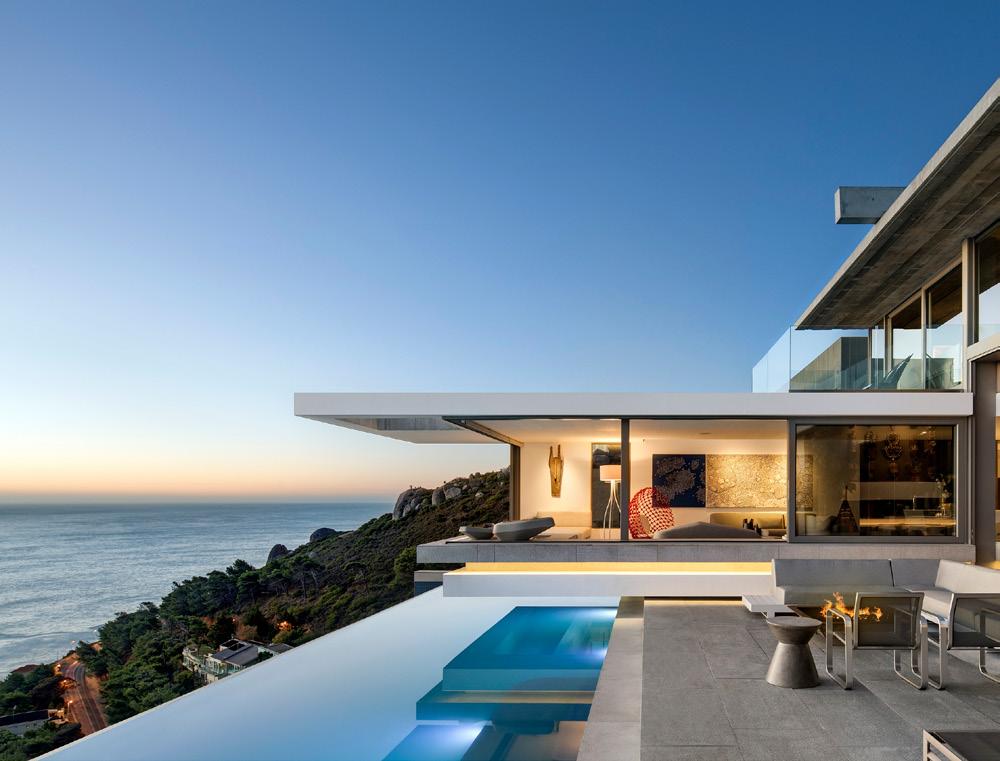

Set at the foot of Lion’s Head, with spectacular views of Table Mountain, across Table Bay, and of Cape Town city centre and harbour, this four-bedroom, luxury villa bewitches the senses. The superb, contemporary design and glorious wood-panelled interior, give this property so much warmth and hospitality that you’ll wish you could stay forever.
Surrounded by nature at its finest, Cape Kloof Villa provides guests with alfresco dining, a plunge pool and barbecue, elevator, fireplace and a fully equipped kitchen with breakfast bar. Included in your stay will be housekeeping service, concierge, and live-in housekeeping. Additional services available on request include activities and excursions, baby sitting and au pair, butler and/or chef, dry cleaning, personal security, personal shopping, personal trainer, spa and beauty treatments, and villa pre-stocking.
Cheetah Plains
Cheetah Plains, in the Sabi Sands Game Reserve, is the ultimate South African luxury safari destination. Each property boasts a formal lounge, living room, dining area, expansive sun deck, heated swimming pool, wine gallery, chef’s kitchen and private suites. Cheetah Plains runs entirely ‘off-grid’, harnessing solar power to provide reliable, renewable energy and has a grey-water recycling system in place. Cheetah Plains is a sophisticated eco-luxe safari experience for the discerning traveller.
• For more information about In Residence by Pieter Brundyn, go to https://inresidence.co.za/
By Stef Terblanche
LIFESTYLE FORERUNNER | www.forerunner.co.za | Issue 1 | 19
Eskom… comeback or final burnout
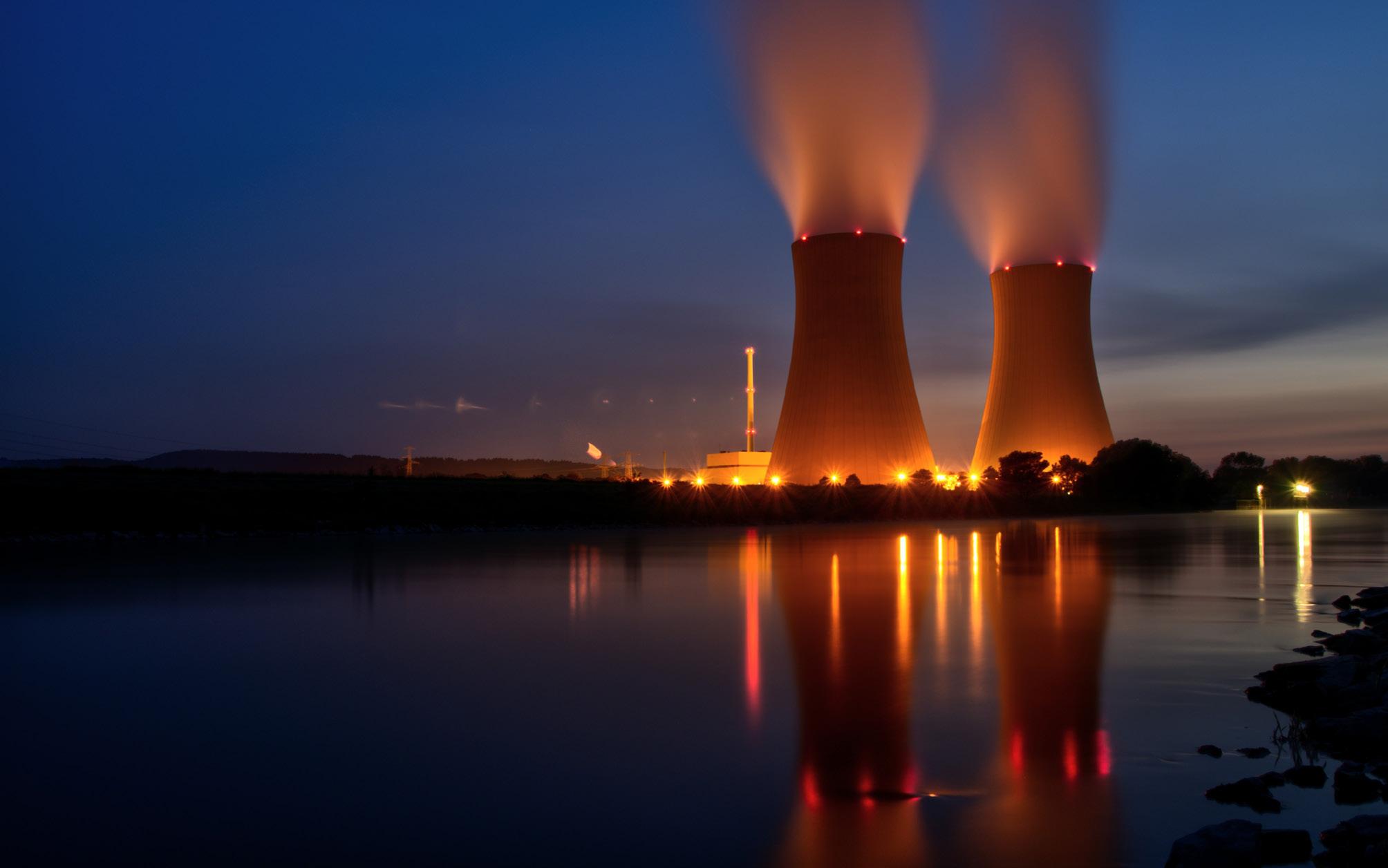
Eskom has reached a critical stage with its electricity constraints. If loadshedding went to stage 8, a total blackout could follow… and could force the economy to its knees. Government has been engaged in emergency deliberations but is not saying much. Does it really have a plan? Can Eskom return from the edge or is this the final burnout?
With Day Zero knocking at South Africa’s front door, few people need to be told - with the possible exception of some government ministers perhaps - that the country faces an electricity catastrophe like none seen before.
Even between this article being written and its appearing in print, the lights could go out in a total blackout, and South Africa could grind to a crushing halt. That’s the worst-case scenario, but the best-case one is not much better as things stand at present.
Eskom, the monopolistic, previously captured, sabotaged, unmaintained, aging, crumbling, convulsing, and cashstrapped state-owned national power provider has never before been as terminally ill as now.
Debilitated enough to make President Cyril Ramaphosa
cancel his United Nations appointment in New York and rush home from Queen Elizabeth II’s funeral for another cabinet meeting and another plan. None of the previous ones have made a dent in Eskom’s downhill slide. And seven years of government and presidential promises that things are under control and will soon improve, appear all to have been either cynical lies or gross misjudgements. Either sin is unforgivable in light of the consequences.
This raises the question: can Eskom still be rescued and brought back to life, or is this the final burnout? Can government be trusted to turn it around at this late hour?
The potential upside of the latest situation – but don’t hold your breath - is that it may finally shock the ANC political elite out of their ignorant slumber to do the bold and decisive things required to rescue this public utility and the country. For if Eskom blows, the economy goes.
20 | Issue 1 | www.forerunner.co.za | FORERUNNER
For powerless days that seemed like weeks, South Africa came close to that as Eskom moved the country to Stage 6 loadshedding, while all the time flirting with Stage 8 – a situation not seen before. If it went there, it would be crunch time and a total blackout could easily be next.
of a blackout occurring. The fact that Eskom was able to manage the overburdened demand and supply situation through load shedding even at stage 6, was an assurance that the controlled rolling blackout system is working and preventing a total blackout. Which is what loadshedding was designed to do, by maintaining the frequency on the grid at 50Hz.
There have been similar blackout scares around the world before, but none accompanied by the same progressive deterioration of health as Eskom, built up over 15 years or more, without any effective measures implemented to arrest the degradation. In 2019 a blackout in Argentina left 48 million electricity users without power for almost a day; in 2003 some 55 million North Americans were left without power for a fortnight; and in 2012 a blackout in India left over 400 million users without power. However, compare these to South Africa in 2022 alone, when in just eight months South Africans were left without power for more than 1,300 hours and still counting – and that with controlled and managed load-shedding.
Uncontrolled Blackout
An uncontrolled blackout is quite possible. If loadshedding moves up to stage 8 where 8,000 MW is pulled off the grid and capacity pressures go beyond this level, a determination may have to be made to shut down more power per each province. But, says Eskom, a total collapse of the national grid – quite possible at that stage - would be an unforeseen event, and Eskom’s system operator would not be able to provide advance warning should it occur.
“A national blackout will have massive implications, and every effort is made to prevent this from occurring. Depending on the nature of the emergency, it could take several weeks for the grid to recover from a blackout,” says Eskom.
There may be some small comfort in Eskom CEO Andre de Ruyter’s assertion that for now there is no immediate threat
But, while load shedding was reduced to stage 5 at the time of writing, the grid remained incredibly volatile and vulnerable to further breakdowns, and there was no telling what would happen if the situation escalated to stage 8. Even just “a few weeks” of total blackout could bring the economy to its knees, an impact far worse than anything two-and-a-half years of the Covid-19 pandemic visited upon us. South Africa could effectively be destroyed and take years to recover.
But even if a total blackout can be avoided this time around, Eskom’s problems are set to continue, and South Africans will continue having to live with loadshedding, while it slowly eats away at the economy. What can or will the government do about this, is the question on everyone’s lips.
Yet, as this nightmarish drama was unfolding in September, some of President Ramaphosa’s ministers – especially the ones directly responsible for Eskom as it lies in what could be its death bed – seemed blissfully unaware of the magnitude of the threat to South Africa, should Eskom finally suffer a complete breakdown.
For them it seemed to be business as usual without any urgency or a proper plan until Ramaphosa returned home and they hunkered down to try and find a solution. But before that, at the height of the latest Eskom crisis with stage 6 loadshedding and a threat of escalation to stage 8, the ministers responsible for Eskom, Gwede Mantashe and Pravin Gordhan, hardly deemed it necessary to address the public about the crisis as it worsened. Apart from some Eskom statements, the public was kept in the dark, figuratively, and literally. This continued even after Ramaphosa’s hasty return to South Africa.
The most shocking part is that the government has had 24 years of warning, 15 of them with intermittent loadshedding, in which it could have done something effective, but simply didn’t. And since at least 2015, when he was still deputy
ENERGY 1
FORERUNNER | www.forerunner.co.za | Issue 1 | 21
“A national blackout will have massive implications, and every effort is made to prevent this from occurring.”
president and put in charge of the energy crisis, Ramaphosa has promised that load shedding would “soon” be a thing of the past. But it simply wasn’t. No-one believes Ramaphosa anymore. This latter fact is borne out in countless social media posts, mainstream media commentaries and reports, statements by business and other leaders, and ordinary people across the country. The mood is ugly and turning sharply against the ANC and its leaders. And against Eskom.
“Ramaphosa has done nothing to stop this – he’s useless,” says Meschak, echoing the controversial words of millionaire entrepreneur Rob Hersov uttered in a speech at the recent BizNews Conference. Meschak is a waiter at the local Spur restaurant where I went for coffee during a spell of loadshedding. He may represent the opposite end to Hersov on the socio-economic scale, but when it comes to public opinion about Ramaphosa, the government and Eskom, they are on the same page.
“The ANC’s time is over. They only care about themselves. They cannot fix Eskom,” adds Meshak’s colleague, Precious. This is the mood wherever you go, whomever you speak to. Could it be that the latest Eskom crisis could be the final catalyst in the ANC’s fall from power?
We’ll have to wait for the 2024 elections for the answer. In the meantime, something has to be done about Eskom and electricity for South Africa. We need to get the lights back on, the factories and mines working full steam, trains running, digital communications working – everything that has been knocked out by loadshedding.
Privatisation
But whether the current government – representing the state as Eskom’s sole shareholder - can lead any effective turnaround of Eskom, is debatable. For the ANC its ideological dogma and racial policies appear to be more important than finding real, sustainable solutions to the Eskom crisis. Many prominent people, energy experts, and entities such as S&P global ratings agency, have publicly shared the opinion that only privatisation can save Eskom.
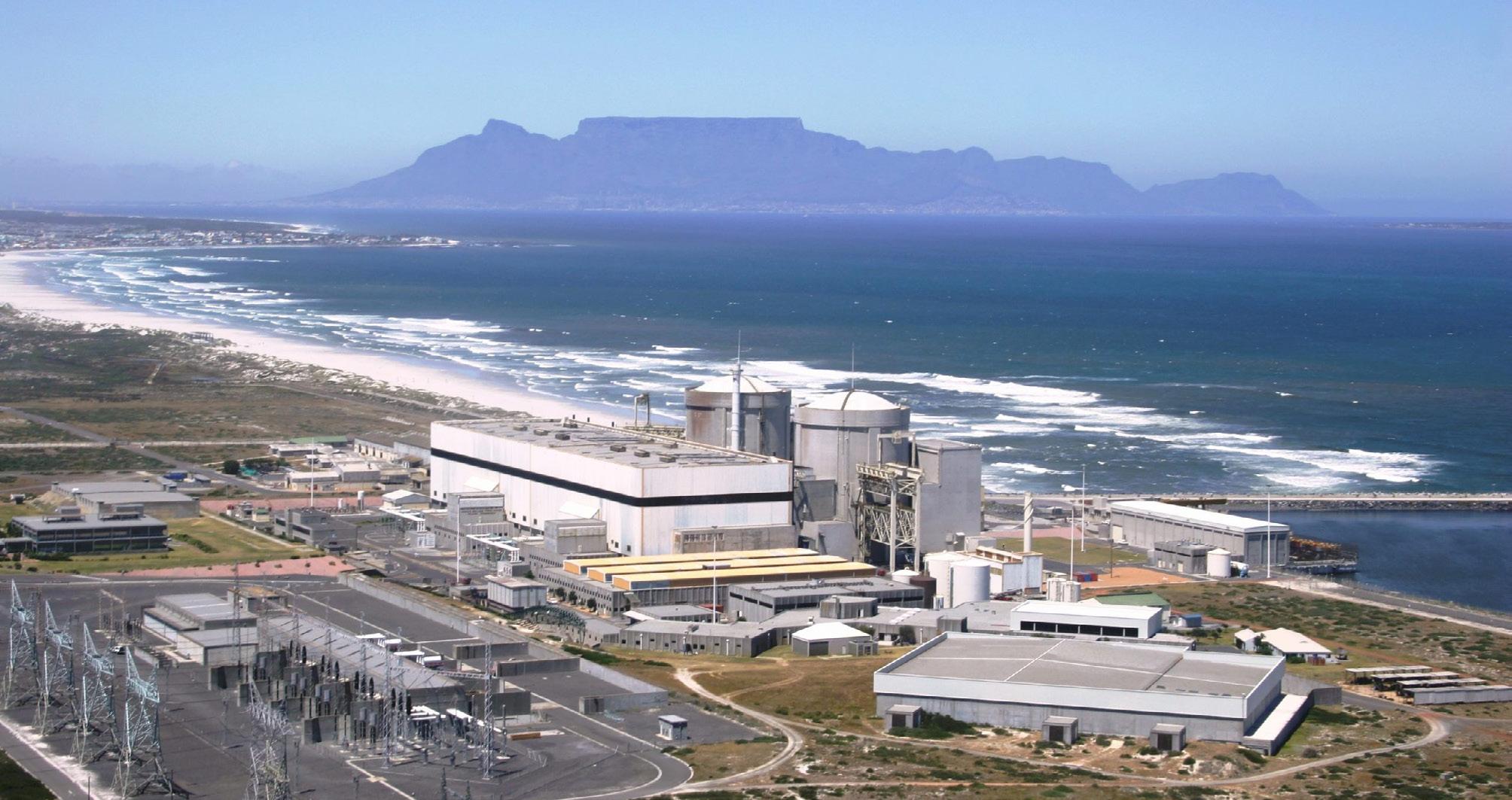
Bloomberg News reported S&P Global Ratings as saying that operational issues at Eskom pose a risk to South Africa’s economic outlook and the utility’s revenue is insufficient to reduce its R396 billion of debt. Shifting Eskom’s obligations onto the state’s balance sheet would, however, precipitate a marked deterioration in the state’s debt. It held that privatisation may be the best option to resolve the power crisis.
In an interview with Bloomberg News, Zahabia Gupta, S&P associate director of sovereign ratings in the Middle East and Africa reportedly said that “These utilities typically tend to be a problem, but then the ones that have done better are the ones that have done some kind of a wholesale privatisation. Then the problem at least is no longer the government’s and typically the utilities run better.”
But this was immediately shot down by Ramaphosa’s Employment and Labour minister, Thulas Nxesi, who reportedly said he would oppose any move to privatise
22 | Issue 1 | www.forerunner.co.za | FORERUNNER





T H E R E S I D E N C E S A T C R Y S T A L T O W E R S O F F E R S Y O U L U X U R I O U S S E L F - C A T E R I N G A P A R T M E N T S W I T H 2 4 H R O N S I T E S E C U R I T Y , S I T U A T E D D I R E C T L Y A C R O S S T H E C A N A L W A L K S H O P P I N G M A L L A L L T H E R O O M S O F F E R V I E W S O F C E N T U R Y C I T Y A N D A R E E L E G A N T L Y F U R N I S H E D W I T H F L A TS C R E E N T V ’ S A N D F R E E W I F I T H E K I T C H E N S A R E F U L L Y E Q U I P P E D W I T H R E F R I G E R A T O R S , M I C R O W A V E S , D I S H W A S H E R S , O V E N S , S T O V E S , E T C . T H E S T Y L I S H B A T H R O O M S H A S U N D E R F L O O R H E A T I N G A S W E L L A S H E A T E D T O W E L R A I L S W I T H I N T H I S S A F E E N V I R O N M E N T T H E R E A R E M A N Y R E S T U A R A N T S , B A R S , C O N V E N I E N C E S T O R E S , C O R P O R A T E O F F I C E S A N D C O N F E R E N C E C E N T E R S . T H E C A N A L V I E W F R O M O U R A P A R T M E N T S S E T S T H E T O N E F O R A B E A U T I F U L S T A Y . C E N T U R Y C I T T I N G L E T T I N G , O F F E R S V A R I O U S L U X U R Y A P A R T M E N T S A C R O S S C E N T U R Y C I T Y S U C H A S T H E I S L A N D C L U B , M A N H A T T A N S U I T E S , A N D C O N F E R E N C I N G A S W E L L A S B R I D G E W A T E R W I T H T H E M O S T A M A Z I N G V I E W S O U R M I S S I O N I S T O D E L I V E R A R E L A X E D A N D R E F I N E D L O N G T E R M R E N T A L E X P E R I E N C E . W E S T A N D O U T F R O M T H E R E S T W I T H O U R S T A N D A R D S O F I N T E G R I T Y , E X P E R T I S E A N D S O P H I S T I C A T I O N T H E A P A R T M E N T S A R E M O D E R N I Z E D , F U L L Y F U R N I S H E D , A N D S E L F C A T E R I N G . O U R F U R N I S H E D A P A R T M E N T S P R O V I D E Y O U W I T H M I C R O W A V E S , D I S H W A S H E R S , O V E N S , S T O V E S , A N D R E F R I G E R A T O R S , A L O N G W I T H T H E R E S I D E N C E S O U R A P A R T M E N T S A R E I N C L O S E P R O X I M I T Y T O T H E C A N A L W A L K S H O P P I N G M A L L . W E H A V E T H E I N T A K A I S L A N D , R A T A N G A P A R K , T H E B O A T C R U I S E T H R O U G H T H E C A N A L A N D S O M A N Y M O R E A D V E N T U R O U S A C T I V I T I E S T H A T C A N B E D O N E A R O U N D C E N T U R Y C I T Y . A S Y O U E X P L O R E O U R I N D I V I D U A L A P A R T M E N T S , I T F E E L S L I K E A L U S H , L U X U R Y T R A V E L M A G A Z I N E A T T H E R E S I D E N C E S A N D C E N T U R Y C I T Y L E T T I N G , W E E X U D E E N E R G Y , L U X U R Y A N D L E I S U R E . F R E E P A R K I N G I S A V A I L A B L E O N - S I T E A N D A N A I R P O R T S H U T T L E C A N B E R E Q U E S T E D A T A C H A R G E T O C A P E T O W N I N T E R N A T I O N A L A I R P O R T , 2 0 K M A W A Y . C E N T U R Y C I T Y I S A G R E A T C H O I C E F O R T R A V E L L E R S I N T E R E S T E D I N S H O P P I N G , T O U R I S T A T T R A C T I O N S A N D S I G H T S E E I N G . B U S I N E S S T R A V E L L E R S P A R T I C U L A R L Y L I K E T H E L O C A T I O N , T H E Y R A T E D I T 9 0 F O R A W O R K - R E L A T E D T R I P W E S P E A K Y O U R L A N G U A G E A N D P R O V I D E Y O U W I T H T H E L U X U R Y S T A Y C A T I O N Y O U D E S E R V E ! W R I T T E N B Y : L A U R E N W I L L I A M S BY
Eskom as it would be detrimental for the majority of South Africans. “It (privatisation) is going to be very expensive for them. That’s why government steps in when there is market failure,” he reportedly said. Government stepping in? Market failure? It seems someone is missing the plot.
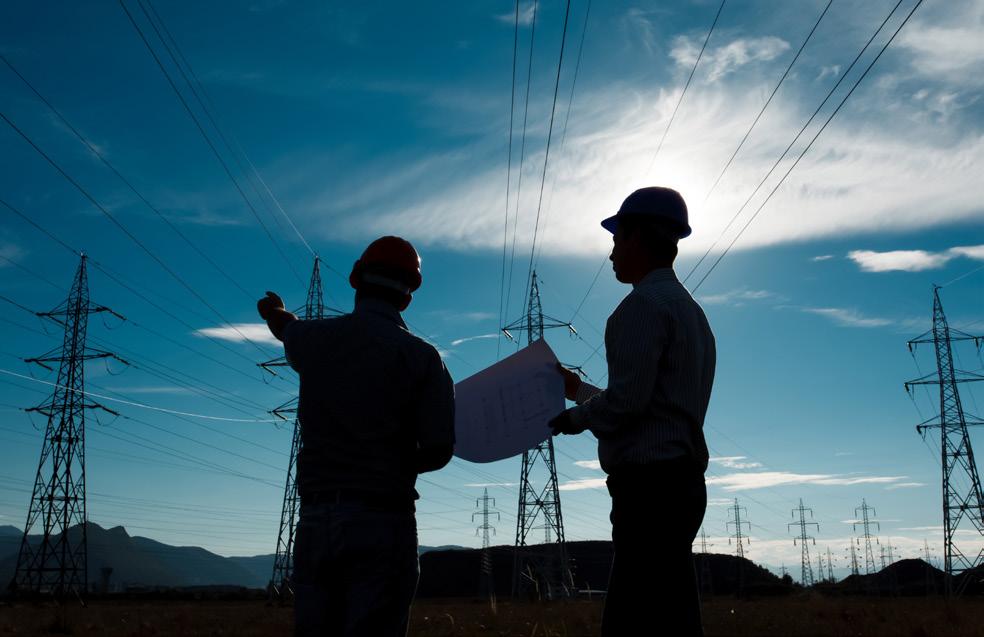
For perspective and clarification, Nxesi is also a senior leader of the ruling ANC’s formal ally, the South African Communist Party (SACP). This party is the architect of the ANC’s central driving vision, the so-called National Democratic Revolution (NDR), whereby the ANC must obtain control of all levers of power in the South African state as the quickest route to creating a socialist and then communist state in South Africa. This, therefore, rules out any privatisation of state assets.
and not real structural reforms. They simply don’t go far enough or cover all the key bases.
Other ANC ministers have also rejected privatisation, including Mantashe. Yet, President Ramaphosa has over the last year opened the door a little by inviting the private sector to take up a slightly bigger role in electricity provision. Don’t be misled though. These ‘concessions’ only came when Eskom’s wheels seriously started falling off, when the crisis started spiralling out of control, and the government started looking at desperate measures to make it to the other end of the ever-darkening tunnel. It’s not a change of heart, ideology, or policy on the government’s part. Critics will say this shows just how out of touch the ANC is with the demands of a modern, dynamic economy.
And after President Ramaphosa’s hasty return and frantic deliberations behind closed doors in late September, the private sector was again roped in…well, partially so. The government made a big public relations event of its signing agreements for three projects and 420MW of wind power in the Renewable Energy Independent Power Producer Procurement Programme (REIPPPP). The truth, however, is that this was out of more than 2,500MW and 25 projects that were already supposed to have been finalised this year. Given South Africa’s dire situation, where is the urgency?
Racial policy and ideology
President Ramaphosa and the ANC take this very seriously. In July this year President Ramaphosa told the SACP’s 15th national congress that the ANC was determined to “defeat each and every effort to derail the NDR”, which he labelled as the “shared programme of the ANC and the SACP and the reason for the existence of our alliance”. That doesn’t sound like the words of a man who might opt for a reformist route, one who would pragmatically consider market dynamics as offering a way out, despite the recent lip service frequently paid to ‘structural economic reforms’. One can argue that the ‘reforms’ introduced so far as part of Ramaphosa’s Economic Reconstruction and Recovery Plan are perhaps little more than cosmetic adjustments
But it doesn’t end there. Another thing standing between the power crisis and Eskom’s possible recovery, is the ANC’s racial policies. It’s no secret that after coming to power, the ANC sought to secure total control of all levers of power via its policy of deploying ANC cadres to all key positions in the public service, municipalities, and stateowned enterprises including Eskom.
Those who were employed under the pre-1994 apartheid regime – mostly whites – were pushed out with early retirement packages. It was a serious mistake as decades of institutional memory and expertise was lost. Keeping them on to mentor a new generation of civil servants and other employees, especially in a sophisticated high-tech operation like Eskom, over a gradual transitionary phase of natural attrition to achieve racial transformation, would have been the better option. But that was never on the
24 | Issue 1 | www.forerunner.co.za | FORERUNNER
‘Eskom has suffered a serious shortage of suitably qualified and experienced personnel’
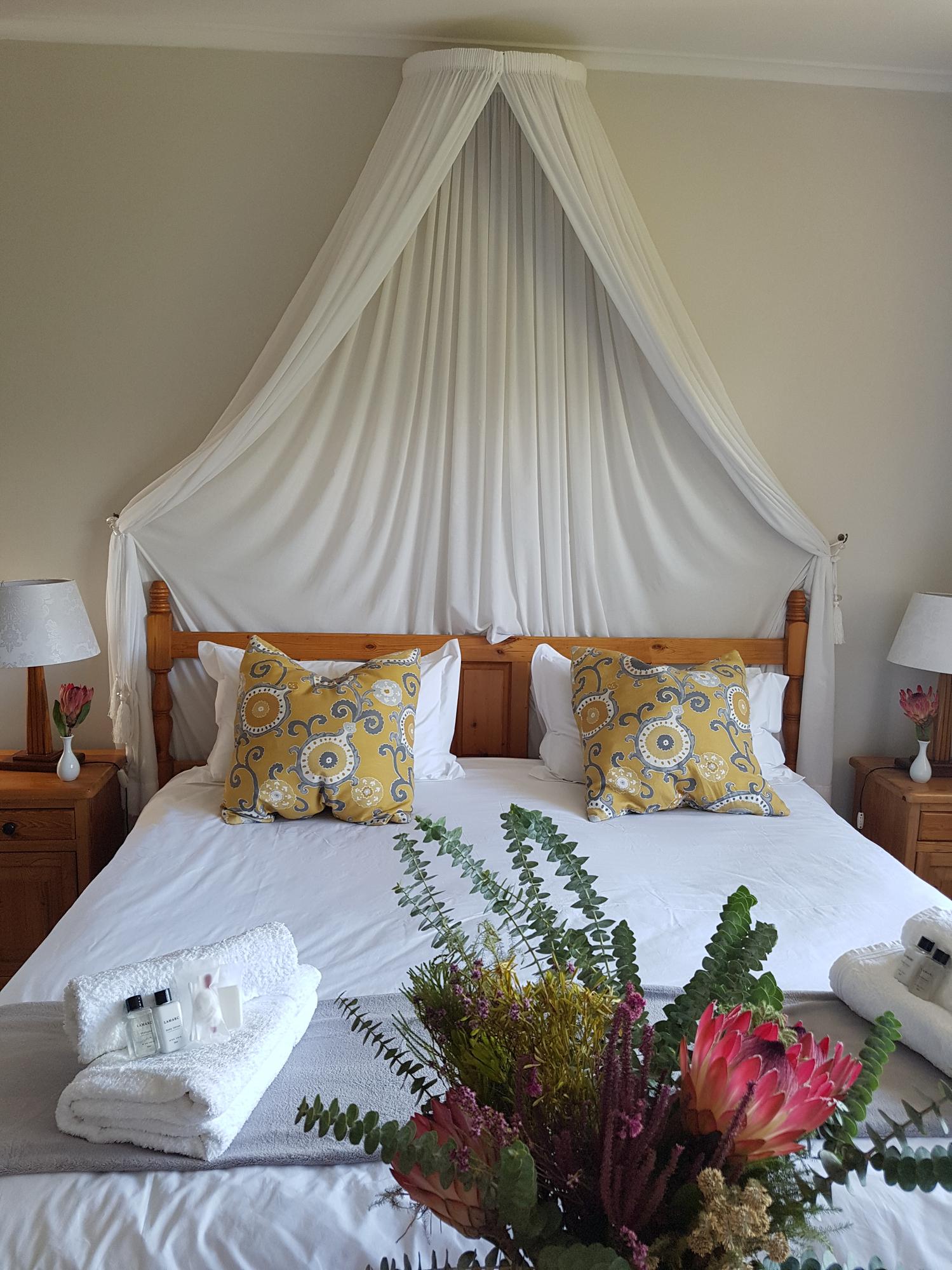
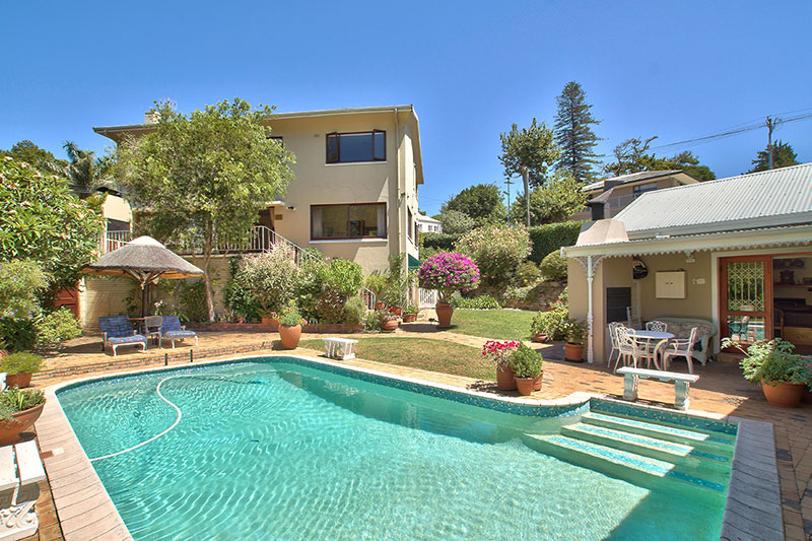
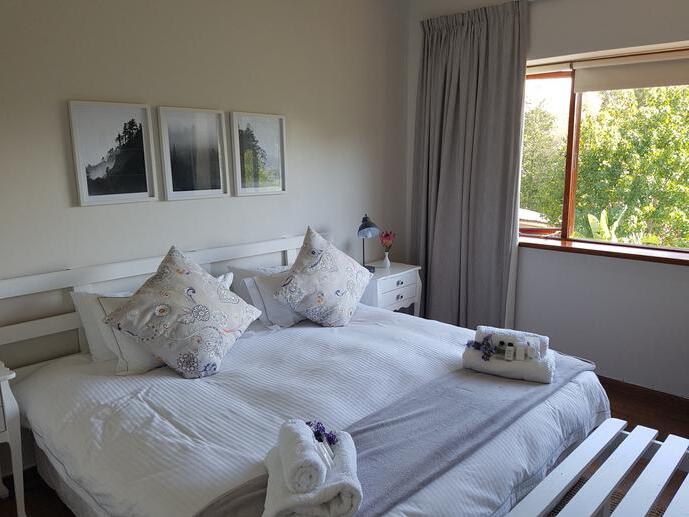


WWW.VALLEYHEIGHTS.CO.ZA ACCOMMODATION THAT FEELS LIKE YOUR HOME AWAY FROM HOME C E N T R A L L Y L O C A T E D G U E S T H O U S E C O M P E T I T I V E L Y P R I C E D A W A R D W I N N I N G & H I G H L Y R A T E D L O N G S T A Y G U E S T S W E L C O M E S E L FC A T E R I N G U N I T S A V A I L A B L E VALLEYHEIGHTS@MWEB.CO.ZA 36 OAK AVENUE KENILWORTH CAPE TOWN 021 797 9774
ANC’s mind – centralised control and power was.
As a result, Eskom has suffered a serious shortage of suitably qualified and experienced personnel – a major cause of its many problems. Nonetheless, in 2019 the trade union Solidarity provided Eskom and the government with a list of 480 qualified and experienced former Eskom engineers, technicians, and managers who were willing to return to Eskom immediately and save it from total collapse. After more than two years of procrastination, the Ramaphosa government eventually gave the go-ahead to Eskom CEO Andre de Ruyter this year to start re-employing people from Solidarity’s list, by then whittled down to 300.
However, after re-employing only 18 engineers out of the 300 former Eskom employees, the government stopped the process with instructions that employment must be racially “more inclusive”. De Ruyter had no choice but to turn to an online crowd recruitment platform to try and find the engineers, physicists, power station managers, plant operators, and senior technicians needed to save the country from total darkness. Solidarity head Dirk Hermann described it as “De Ruyter has to swim through political syrup before he can get anything done”.
In the meantime, Eskom nearly toppled over the brink. It seems for the government racial composition was more important than merit and suitability of those who could help to fix a critical problem. Transformation imperatives apart, this demand for more inclusivity should also be seen in the context of the NDR and cadre deployment, two issues that have brought untold harm to South Africa going far beyond just Eskom. The ANC has been told this from many different quarters over the years, but it remains wilfully deaf. Ramaphosa himself has emphasised that cadre deployment was here to stay…well, as long as the ANC remains in power, one would imagine.
Without cadre deployment the ANC would never have been able to capture the state as a means to fulfilling the NDR, and with the ANC having captured the state, further ‘state capture’ by corrupt and criminal elements during the Zuma administration, would hardly have been possible. This then again raises the question, can the ANC government be relied upon to lead Eskom out of the crisis and back to sustainable, efficient electricity provision?
At the end of July, President Ramaphosa did come up with a plan to rescue Eskom that included the creation of the
Energy Crisis Committee consisting of various ministers, including Minister in the Presidency Mondli Gungubele, Public Enterprises Minister Gordhan, Mineral Resources and Energy Minster Mantashe, Minister of Forestry, Fisheries and Environment Barbara Creecy, Minister of Trade, Industry and Competition Ebrahim Patel, and Minister of Police Bheki Cele. It was another of the almost countless committees, sub-committees, and task teams that are created every time there is a problem. Seldom if ever are they able to report any real progress with the tasks given to them.
Nonetheless, Ramphosa’s plan is supposed to focus on five stages, namely, fixing Eskom; reducing loadshedding and improving generation supply; speeding up procurement of new energy; enabling businesses and private homes to invest in solar power; and transforming the electricity sector to achieve long term energy security. The plan lacks critical detail and definitive timelines, while not much in the plan differs from previous plans and undertakings.
At the time Energy Minister Mantashe said he wouldn’t stand in the way of renewable energy – part of the plan - but that he was still pushing for the controversial Karpowership deal. The deal was halted over environmental concerns and allegations of corruption. It is also known that Mantashe, Gordhan and De Ruyter have had their differences over what is best for Eskom and South Africa’s energy outlook. Such differences are not very helpful in a crisis like this. Nonetheless, Mantashe kept his word as could be seen when he participated in the signing of the three new deals for IPPs to produce renewable energy.
Meanwhile Business Unity South Africa (BUSA) says South Africa’s economy, businesses and the people of South Africa cannot afford the havoc wreaked by load shedding, with the country losing an estimated R4 billion a day. BUSA said it stands ready to support immediate interventions to address the crisis and was awaiting government’s lead.
And that was, at the time of writing, what everyone was waiting for. President Ramaphosa had already been back in South Africa for four days, the cabinet had already held its weekly meeting, and still no plans to save Eskom and the economy were being announced. So, the question once again needs to be asked, will Eskom be rescued and turned around, or is this the final burnout?
By Stef Terblanche
26 | Issue 1 | www.forerunner.co.za | FORERUNNER
BLACK POLYESTER ACRYLIC DOUBLE SHELL WINTER GLOVES

• 13g Polyester
• Sandy Nitrile Palm Coated
• Crinkle Palm with good grip and anti-slip properties
• Comfortable, flexible gloves and suited for use in a cold environment


• Anti-bacterial and anti-odour treatment
PRIDE NITRILE COATED SANDY FINISH GLOVE

• Palm coated knitwrist
• Fit for protection
• Sandy finish for superior grip
• Polyester liner
• Cuff style knitwrist
• EN388: 2016
GREEN 5CM LINED LEATHER GLOVES

• Palm coated knitwrist
• Fit for protection
• Sandy finish for superior grip
• Polyester liner
• Cuff style knitwrist
• EN388: 2016
TANNED WELDERS GLOVE CHROME LEATHER (SUEDE) BOVINE SPLIT
• Palm coated knitwrist
• Fit for protection
• Sandy finish for superior grip
• Polyester liner
• Cuff style knitwrist
• EN388: 2016
PRIDE HIGH CUT AND ABRASION RESISTANT GLOVE


High level of cut resistance protection. The form-fitting, 10G, high performance polyethylene (HPPE) machine knit shell combines comfort and dexterity Features a premium micro-foam palm coating that channels away oils and adds flexibility, dexterity and grip
TANNED WELDERS GLOVE CHROME LEATHER (SUIDE) BOVINE SPLIT
• General Purpose
• Welders Glove
• For any high heat application
• Polyester liner
• EN388 .Cat 1
• Not for use above 50 degrees celsius
PRIDE HPPE FULLY DIPPED SHELL, HIGH CUT & ABRASION GLOVES
• Fully coated nitrile inner
• Sandy nitrile outer palm for great grip
• Great dexterity, sense of touch and high level of cut resistance
• Features a premium micro-foam palmcoating that channels away oil and adds flexibility, dexterity and grip
PRIDE A-GRADE RED LEATHER GLOVES

• Palm coated knitwrist
• Fit for protection
• Sandy finish for superior grip
• Polyester liner
• Cuff style knitwrist
• EN388: 2016
SUPPLIERS OF HIGH-QUALITY PPE PRODUCTS, CHEMICALS AND ELECTRICAL EQUIPMENT TO THE MARINE, MINING, CONSTRUCTION & ENGINEERING INDUSTRIES AS WELL AS THE GENERAL PUBLIC
ORDER ONLINE ON WWW.SHIPSHOP.CO.ZA
SHIPSHOP
Cape Town 34 Auckland Street, Paarden Eiland Cape Town 7405 Mosselbay Shop 28, Bayside Shopping Centre Church Street, Mosselbay, 6500 Saldanha 27 Main Road, Saldanha, 7395 Tel: +27 21 5100 184 +27 82 442 9316 Email: orders@shipshop.co.za
THE ESKOM TIMELINE… Disaster In The Making

In late September South Africa’s long-running energy crisis pushed the country to the brink of disaster. Eskom, the now already 99-year-old public power utility, implemented loadshedding at stage 6, with much speculation that it could go to stage 8 – the highest ever. The spectre of a total, uncontrolled blackout loomed large.
President Cyril Ramaphosa had to cut short an important overseas trip to return home and deal with the crisis. At the time of writing, he had been back already for almost a week, yet no announcements were forthcoming regarding a rescue plan. Angry and frustrated, South Africans waited to hear what the plan would be – could Eskom be returned from the brink, or was the worst about to happen?
To fully grasp the whole picture, one should go back to the very beginning of this crisis.
From 1960 to 1990 Eskom increased its installed power production capacity from 4,000 MW to 40,000 MW to keep up with rapid economic growth. This included the building of the Koeberg nuclear power station which started in 1974. However, after the 1994 democratic elections, Eskom’s focus shifted to expanding electricity supply to previously neglected black residential areas. This period, under the Nelson Mandela and Thabo Mbeki governments, was also
a period of the strongest post-apartheid economic growth. Both events started putting much demand-side strain on the national power grid.
In 1998, the ANC pushed through legislation that would greatly expand the government’s powers to interfere and influence Eskom’s policy and investment decisions – by some measures a serious mistake. All the while the utility was struggling financially due to supplying cheap electricity at cost, so financing structures gradually changed, and debt started accumulating.
In the late 1990s the Mbeki government attempted to privatise Eskom and the utility’s requests for more budget to build new power stations were denied as a consequence. But as the privatisation never proceeded, this was another serious mistake that had adverse consequences for Eskom and the economy, as confirmed by Mbeki himself in 2007.
In December 1998, analysts and leaders in Eskom and the government submitted a report to government which predicted that Eskom would run out of electricity power reserves by 2007 unless immediate action was taken to prevent it. The report recommended restructuring Eskom into separate electricity generation and power transmission businesses. Despite the warnings of the 1998 report and
28 | Issue 1 | www.forerunner.co.za | FORERUNNER
requests by Eskom to be allowed to increase capacity, the national government took no action. Mbeki’s attempted privatisation of Eskom was given as the reason.
The report’s prediction was spot on, and by late 2007 until May 2008, Eskom resorted to loadshedding for the first time – the system to manage electricity shortfalls with rolling blackouts on a rotating schedule for different neighbourhoods and towns.
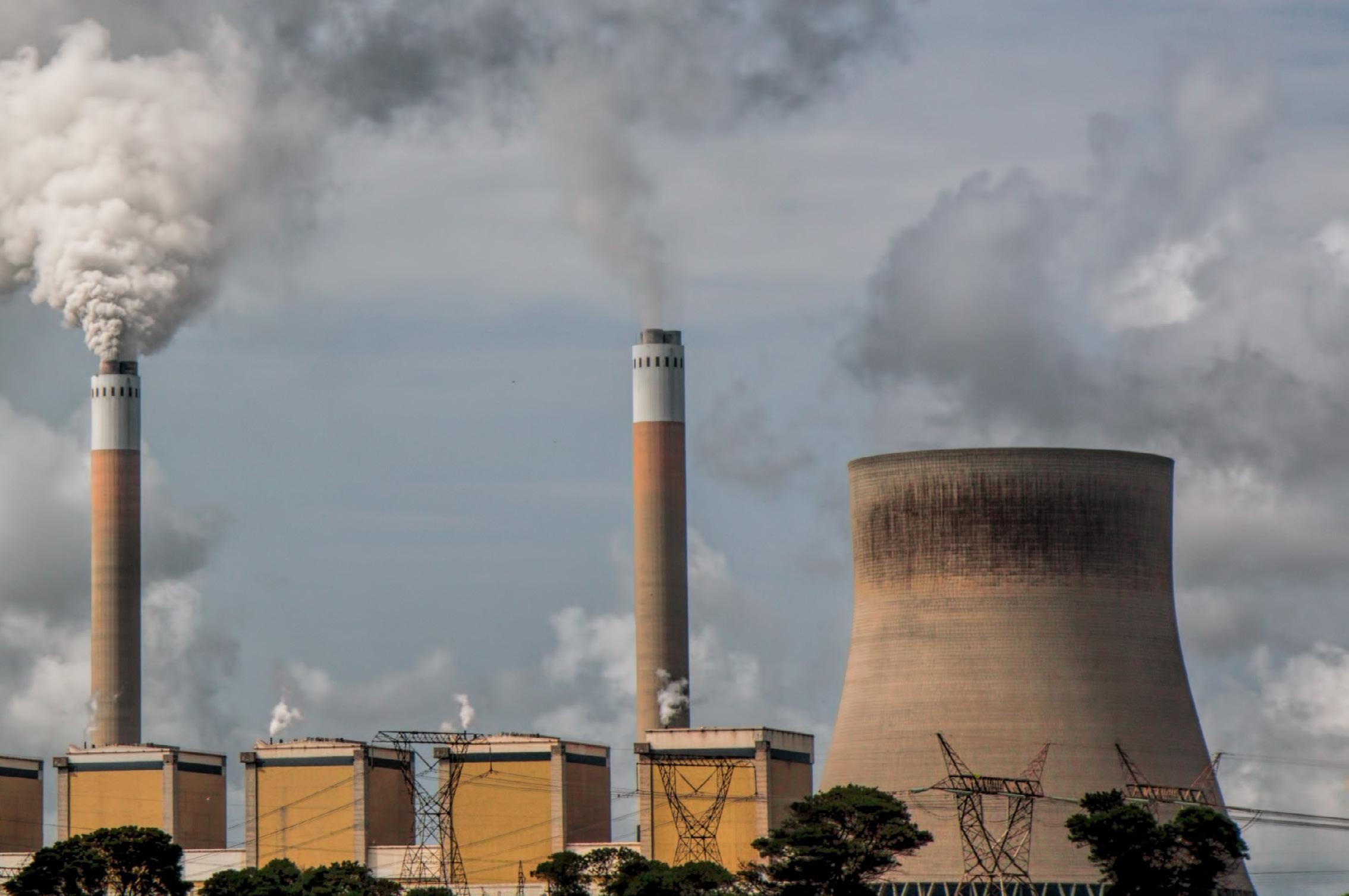
At about the same time, under the Zuma government, it was decided to embark on an aggressive programme to build new power stations. It was decided to build more 6-pack coal-fired power stations and work started on the giant Medupi and Kusile stations in 2007. The construction of these power stations quickly fell behind schedule and went way over budget, with shoddy workmanship and accidents setting things further back, and to date the two power stations are yet to be fully completed.
Fifteen power stations were commissioned between 1961 and 1996, adding a combined 35,804 MW of capacity to the grid. After 2000, only 9,564 MW of capacity had been added, most of it from those generators at Medupi and Kusile that had already been completed. Many Eskom power stations are almost 50 years old and near decommissioning.
All the while demand outstripped supply, with Eskom’s ageing fleet of power stations, and transmission and distribution infrastructure suffering more and more breakdowns. Eskom’s workforce had been vastly reduced and it lacked many qualified and experienced personnel to manage, maintain and repair its facilities and infrastructure. At the same time its debt was growing, and the situation became ever more desperate. At one stage the government of Jacob Zuma wanted to pursue more nuclear build as a solution, but this was abandoned due to the prohibitively high costs. In December 2014 Zuma appointed then deputy president Ramaphosa to oversee the turnaround of Eskom.
Among the many issues adding to Eskom’s supply problems, are ageing equipment and infrastructure, cable and equipment theft, sabotage, accidents, negligence, shortages of qualified and experienced engineers and other personnel, illegal and destructive strikes by workers (Eskom being a national key point and the workers designated essential workers), problems with coal supplies, diesel theft and shortages (for emergency generators during loadshedding), corruption and theft during the state capture period under the Zuma government, and insufficient new build. At the same time Eskom is under pressure to transition from coal to clean renewable energy, while more independent power producers (IPPs) are being brought into the mix.
FORERUNNER | www.forerunner.co.za | Issue 1 | 29
THE ESKOM LOADSHEDDING TIMELINE
1923 – Eskom was established 99 years ago
1974 – Construction starts on the Koeberg Nuclear Power Station, the only one in Africa
1994 – State mass housing projects, economic growth starts to rapidly increase demand for electricity
1994 – the governing ANC starts implementing its ‘cadre deployment’ policy and starts replacing employees in the public sector, including Eskom, with much expertise being lost
1998 – Eskom management, government officials, and energy experts warn the government that SA will run out of sufficient electricity by 2007 unless new power stations are built – government ignores the warning
2007 – South Africa experiences the first load shedding in late 2007 until May 2008
2014 – Load shedding – 121 hours of it - occurs for the second time.
2014 – President Jacob Zuma blames load shedding on apartheid.
2015 – More load shedding for most of the year, with 852 hours of no power.
2016 – President Zuma announced that load shedding was over and a thing of the past.
2018 – Load shedding returns after protesting Eskom workers put pressure on the network.
2018 - Eskom had accumulated debt of almost R400 billion
2019 - Preident Cyril Ramaphosa says stage 4 loadshedding was bad for the economy and must not happen again
2019 – Andre de Ruyter is appointed the new CEO of Eskom
2019 – In December load shedding went to stage 4 several times with 530 hours of load-shedding for the year
2019 - the Eskom council approves a 9-point plan to improve power generation and a stable power Network
2019 - It was announced that Eskom was to be split up into three distinct entities, a move already proposed to government by Eskom and energy experts back in 1998
2019 - Eskom is the largest emitter of sulphur dioxide in the power industry in the world
2020 – Jabu Mabuza resigns as Eskom chairman – he is one of a series of Eskom CEOs, board members and chairpersons coming and going at Eskom in the last decade
2020 – In August Eskom spokesperson Sikonathi Mantshantsha said load-shedding would no longer be necessary by September 2021
2020 - 859 hours of load-shedding occurred in 2020
2021 – Experts were warning in January of worse load shedding lying ahead
2021 – At the UN Climate Change Conference it was announced rich countries would fund South Africa’s transition from coal power to renewable energy
2021 – In June Ramaphosa announced increasing the threshold for private generation of power without a licence from the National Energy Regulator from 1 MW to 100 MW
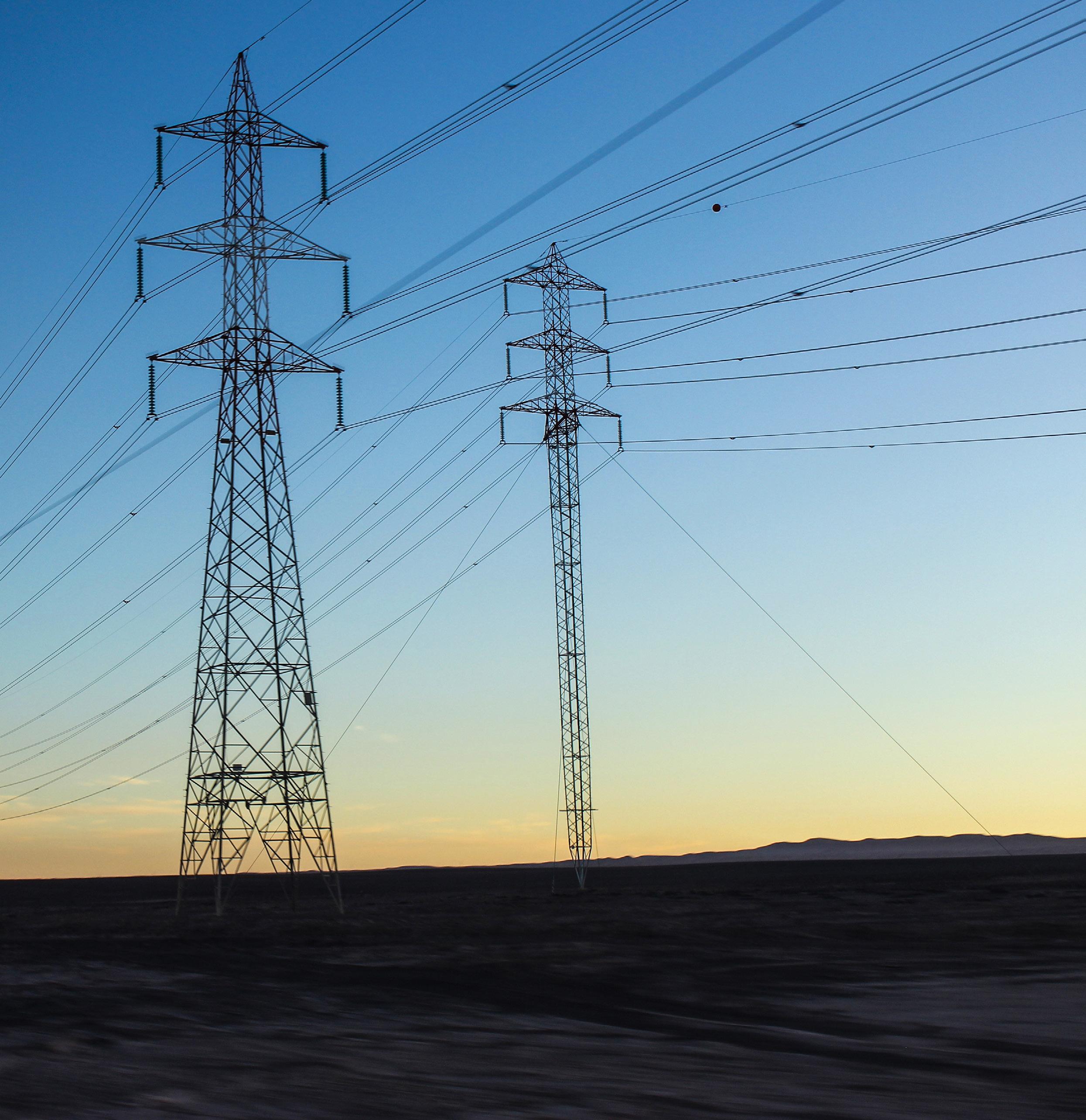
2022 – Load shedding resumed in February and in April Eskom warned it could be applied for up to 100 days during the winter
2022 – In June stage 6 load shedding was introduced for the second time
2022 – On 25 July Ramaphosa announced a new rescue plan for the country’s power crisis
2022 – By August 1,300 hours of load-shedding had been applied for the year so far with the worst still to follow during September
2022 – In late September the energy crisis reaches critical levels, Ramaphosa cuts short an overseas trip, yet a week after his return no announcements about a turnaround plan have been made
By Staff Writer
30 | Issue 1 | www.forerunner.co.za | FORERUNNER
Namco Guarantees is one of the leading credit guarantees providers in South Africa. Operating within the structured legislative framework of the National Credit Act, we are a registered credit provider and a FIC Accountable institution. Our conservative approach based on strong business principles, has resulted in consistent growth and success over the years for both our business as well as that of our clients. This has enabled Namco to become the preferred guarantees specialist in the country.
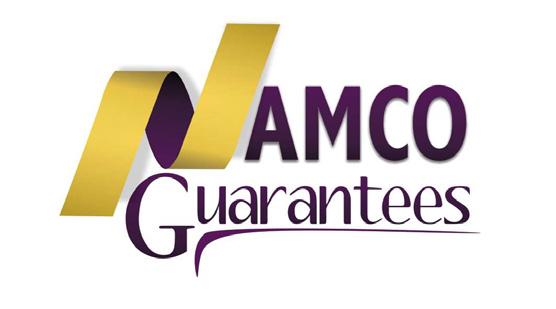
Our Mission – is to assist the New Entrants and Small to Medium Contractors in complying with the Government Departments and Municipalities by acquiring the necessary Guarantee Facilities.

Our Vision – is to be the preferred choice when it comes to arranging construction guarantees to the small and medium contractors not only in South Africa but to Africa as a whole.

REQUIREMENTS FOR APPLICATION
• Company profile (including an organogram and copies of the current and previous Contracts)
• Two years’ financial statements and three months’ bank statements
• Letter of appointment
• Contract information
• Guarantee wording requirements, if any.
• Company registration documentation
• Copies of all members’ identity documents and income tax numbers
• Copy of letterhead
• Tax clearance certificate
• CIDB certificate
• Proof of residence of all directors/ members/partners.
SERVICES
• Performance Guarantees
• Retention Monies Guarantees

• Advance Payment Guarantees
• Maintenance Guarantees
• Bid Bonds / Letters of Intent
LETS GET WORKING
23 Carel Street, Bendor Park Polokwane, 0699
Tel: 015 297 0987 / 5691
Cell: 072 018 8880 / 083 648 8889
Fax: 086 535 5763
Email: admin@namcoguarantees.co.za
Namco Capital (Pty) Ltd t/a Namco
Guarantees
Reg No.: 2012/195030/07
NCR No. NCRCP8511
CRIMINALS ARE KILLING SOUTH AFRICA’S VITAL TRANSPORT SECTOR ANOTHER ESKOM TYPE ECONOMIC THREAT IN THE MAKING

In 2005 the government determined that October would be Transport Month in South Africa each year as part of a campaign to raise awareness of the important role of transport in the economy. This October, as the government, business and other stakeholders reflect on this vital sector, it’s clear that it is faced with many problems and challenges, none more destructive than the rampant criminal activities the sector must deal with daily.
Unless the government pays urgent attention to these issues and comes up with viable solutions in conjunction with other stakeholders and actors, this sector could well become a second “Eskom” in terms of its potential to destroy the South African economy.
It’s not that government is doing nothing – in fact the Minister of Transport, Fikile Mbalula, and the Department of
Transport have launched various worthy initiatives to improve matters in many respects. But industry experts believe some of these have been too little too late, while some good intentions have never come to fruition. One of the biggest problems, however, seems to be a lack of coordination with and appropriate action by other govermment departments that have vital roles to play in safeguarding the economic contributions of the sector, perhaps most notably so the South African Police Service (SAPS).
It appears government is not taking a holistic view and fails to see how crime across all the sub-sectors of the transport industry is killing the sector in South Africa. If transport came to a complete halt, the entire South African economy would grind to standstill, in the same way that the economy would crash if Eskom were to collapse and power supply came to a halt.
32 | Issue 1 | www.forerunner.co.za | FORERUNNER
Road, rail and sea freight have all suffered at the hands of criminals, with seeming impunity in many cases as the SAPS seems unable to get on top of it. Of course there are other factors too that place a heavy burden on the transport sector, such as spiralling fuel prices, inflationary pressures on assets and equipment, the after-effects of the Covid-19 lockdowns when air and other transport came to a halt and borders were closed, the adverse impacts of the global supply chain crisis, deteriorating road and rail infrastructure, policy and regulatory pressures or failures, labour strikes, road taxes and permits, to name but some.
It doesn’t help when government adds to the burden with policies and regulations that may have unintended consequences, such as the proposed antidumping tariffs on imported vehicle tyres that would drive up the cost of transport for both people and goods. It may be good to use tariffs and such to try and stimulate and promote local production with a view to growth and jobs, but government should be weary of the trade-off cost and unintended consequences.
Recently there has been the case of four large domestic tyre manufacturers (Continental, Bridgestone, Goodyear and Sumitomo) applying to the International Trade Administration Commission of SA (ITAC), to impose additional antidumping duties of up to 69% on passenger, taxi, bus and truck vehicle tyres imported from China. The move has the support of Trade, Industry and Competition Minister Ebrahim Patel while the application is being opposed by the Tyre Importers Association of South Africa, the National Taxi Alliance, and the Road Freight Association. It now seems the matter may have to be decided in court.
Crisis levels
Meanwhile, the situation with criminal attacks on and looting of road freight logistic vehicles that transport 80% of all goods in South Africa, has reached crisis levels. As a result, Gavin Kelly, chief executive officer of the Road Freight Association, has called on President Cyril Ramaphosa to deal decisively with the looting of trucks on South Africa’s roads.
Kelly has urged that the runaway level of opportunistic crime needs to be stopped by government – now. The criminal activity is harming the country’s investment potential and its reputation as an efficient logistics hub for foreign traders. In
Kelly’s words: “When trucks stop, South Africa stops.”
During the unrest in July 2021 in KwaZulu-Natal and Gauteng, rioters and looters attacked, looted and destroyed many trucks, killing truck drivers in the process, especially truck drivers who came from other African countries. Since then, such attacks and violence against truck drivers continue sporadically, especially on the main route from the Gauteng industrial heartland to the country’s biggest port in Durban, KwaZulu-Natal.
Criminal gangs also operate in the various ports where containers with valuable cargo are often stolen, looted, damaged or destroyed, and expensive equipment and cargo is also damaged invariably during protest actions, labour strikes or random criminal activities. The ripple effect of all of this is felt by many Southern African countries that rely on South Africa’s transport networks and ports for their own imports and exports. South Africa’s busy ports are gateway ports to at least 6 landlocked countries in the region that are connected to these ports by roads on which freight trucks have become extremely vulnerable.
And during the Covid-19 pandemic and lockdown, a shocking picture emerged of criminals looting railway infrastructure, stealing signals and communication copper cables, even carrying off sections of railway lines and sleepers, dismantling railway stations brick by brick, and taking everything, they could pry loose. In their stead came the squatters who erected their shacks on top of railway lines. These activities forced much of South Africa’s rail network to a standstill, whether used for freight, mineral exports, passengers or daily labour force commuting. According to Transnet some 1,500km of copper cable was stolen over the past five years, rendering the affected lines inoperable.
In September a video went viral showing how township residents were stealing containers full of chrome off a stopped train en route from a mine near the town of Witbank (Emalahleni Local Municipality) in Mpumalanga province. The failing national rail infrastructure is also costing the vital mining sector billions in export losses. The Minerals Council South Africa estimates its bulk mineral mining members lost revenue of R35 billion in this way in 2021 when deliveries are measured against targets. This includes R17 billion in iron ore, R16 billion in coal and about R2 billion in chrome.
Other sub-sectors of the transport sector, such as commuter bus services in cities or inter-city bus services, are also being targeted by criminals, mostly disgruntled minibus taxi operators or associations who want all the commercial action for themselves. Since last year there have been some 230 attacks, on Intercape long haul buses. And in August the Golden Arrow commuter bus company reported that four of its buses and other vehicles were attacked - petrol-bombed
‘Road, rail and sea freight have all suffered at the hands of criminals, with seeming impunity in many cases…’
TRANSPORT FORERUNNER | www.forerunner.co.za | Issue 1 | 33
and stoned - in the vicinity of Nyanga township on the Cape Flats. This violence followed after municipal law enforcement officers impounded illegal and/or unroadworthy Avanza taxis, also known as amaphelas.
All in all, there were 38 attacks reported on buses of Intercape, Golden Arrow and Mavumisa in August alone. Previously, Intercape had reported about 150 incidents of shootings, stonings, and other acts of violence and intimidation as well as losing millions of rands to extortion in the Eastern Cape.
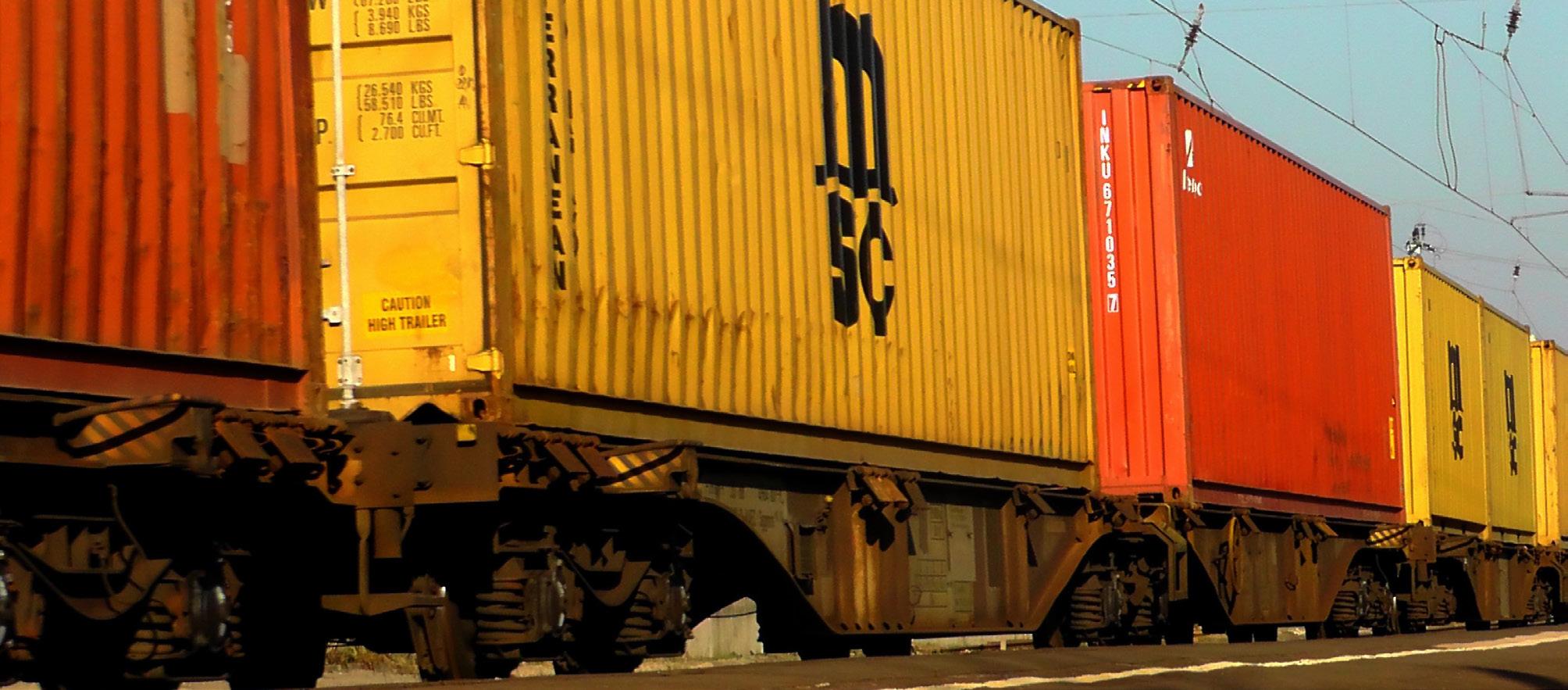
A variety of smaller delivery vehicles – vital to the overall commercial and industrial logistics chain – are also being targeted by criminals who either steal, hijack or rob them. The most recent crime statistics released by SAPS showed a 14% increase in hijackings across the country, with 5,866 hijackings reported from April to June. These included 8 buses, 151 trucks under 3,500 tons, 338 microbuses, and 1,691 bakkies and panel vans – all commercial vehicles. The SAPS has become adept at collecting crime statistics, but it doesn’t seem to know how to bring those figures down and ensure social and economic safety and security.
Common denominator
The one common denominator in all of these criminal activities that sabotage the South African economy, has been the lack of effective policing and crime combating strategies by the SAPS. It is a void that has facilitated criminal destruction in other key economic sectors too, including –
• construction (construction mafia, equipment theft, extortion, violence)
• mining (criminal gangs and zama zamas, theft, illegal mining, smuggling, extortion)
• agriculture (farm murders, stock theft, crop destruction, land occupations)
• energy (cable and equipment theft, sabotage, coal and diesel theft, organised criminal gangs)
Other key economic sectors such as tourism and manufacturing are also seriously affected by crime such as hijackings, kidnappings, extortion, robberies, theft, corruption, fraud, vandalism and more. The banking sector suffers heavily from fraud, scams, corruption, ATM robberies and, most of all, deadly cash-in-transit heists.
After years of attacks on buses, Police Minister Bheki Cele finally in September took action after the problem had escalated dramatically in the Western Cape in recent months. A new multidisciplinary police task team was established to crack down on the interprovincial violence on long-distance bus services. But Cele still somehow felt that criminal attacks on the transport sector were not really a matter for the police. To this the opposition Democratic Alliance Western Cape spokesperson on transport, Ricardo Mackenzie, responded by accusing the police minister of attempting to shirk responsibility and deflect the blame away from the SAPS.
After the destructive riots of July last year, Gareth Newham of the Institute for Security Studies wrote that, “The July attacks on South Africa’s economic infrastructure exposed severe weakness in the police at a time of national crisis. Police were often missing in action as thousands raided malls and shut down transport, supply chains and logistics hubs.” Whether this will change anytime soon, is anyone’s guess. But most likely it will not.
By Stef Terblanche
34 | Issue 1 | www.forerunner.co.za | FORERUNNER
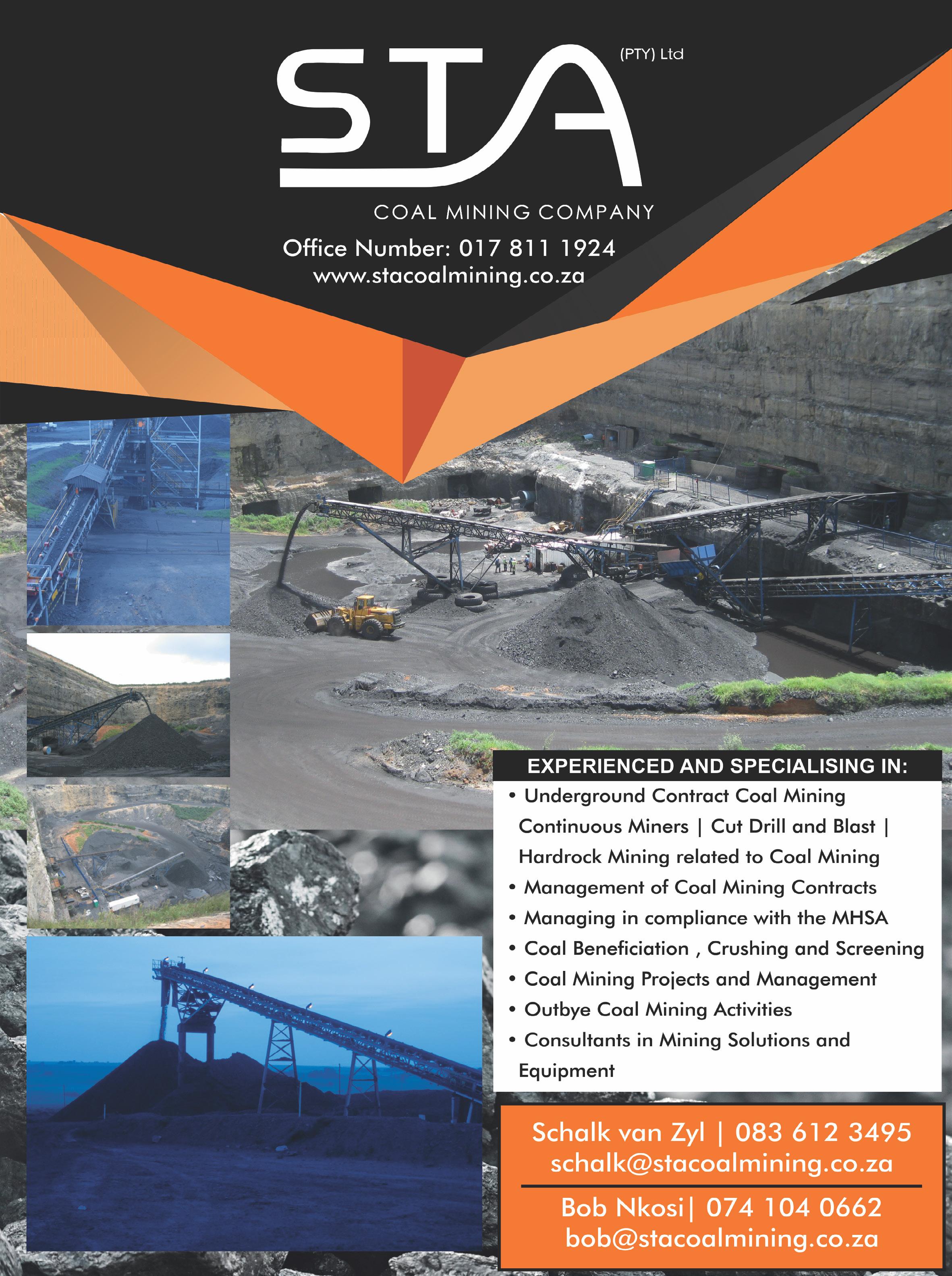
THE INTERVIEW
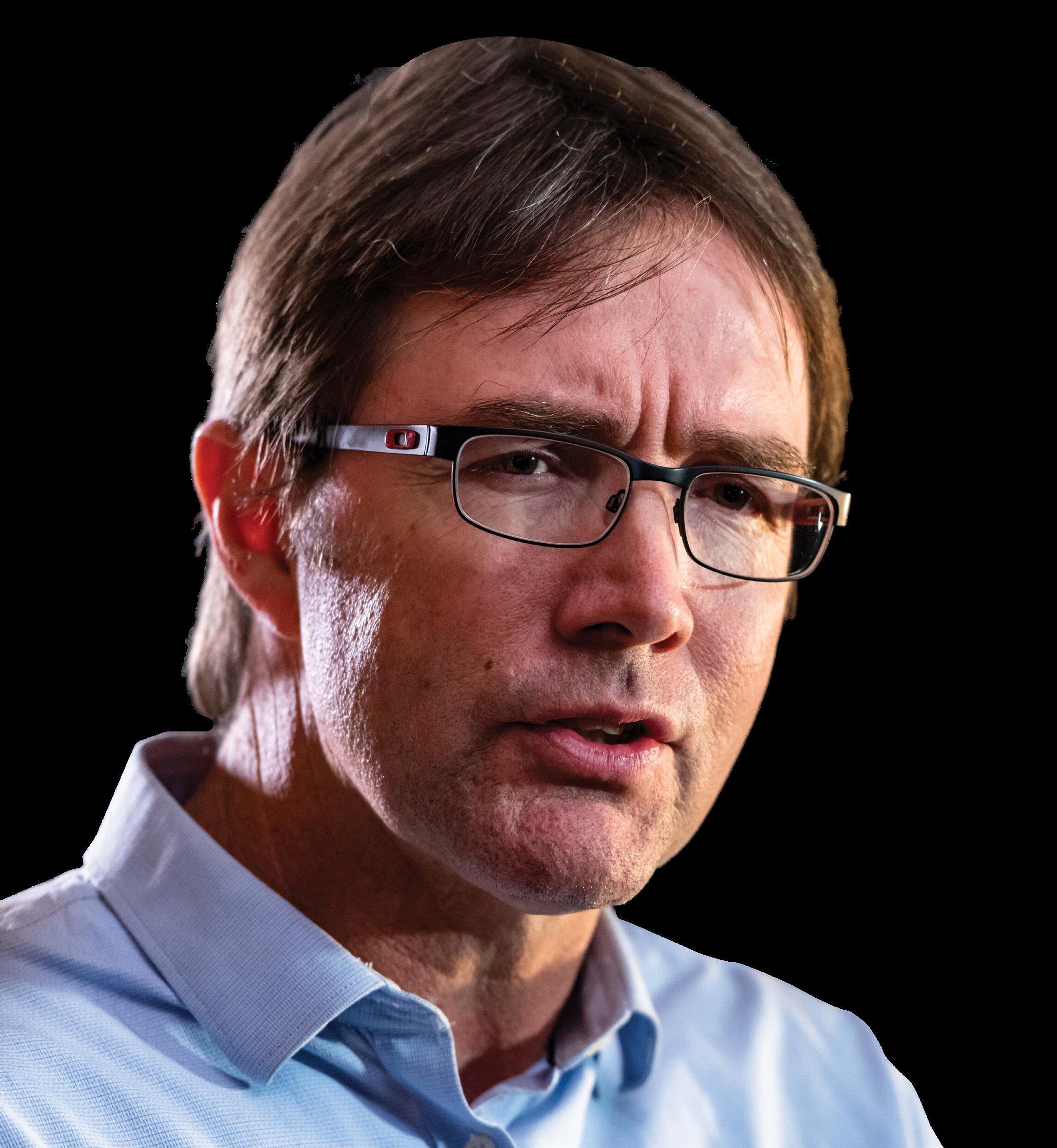
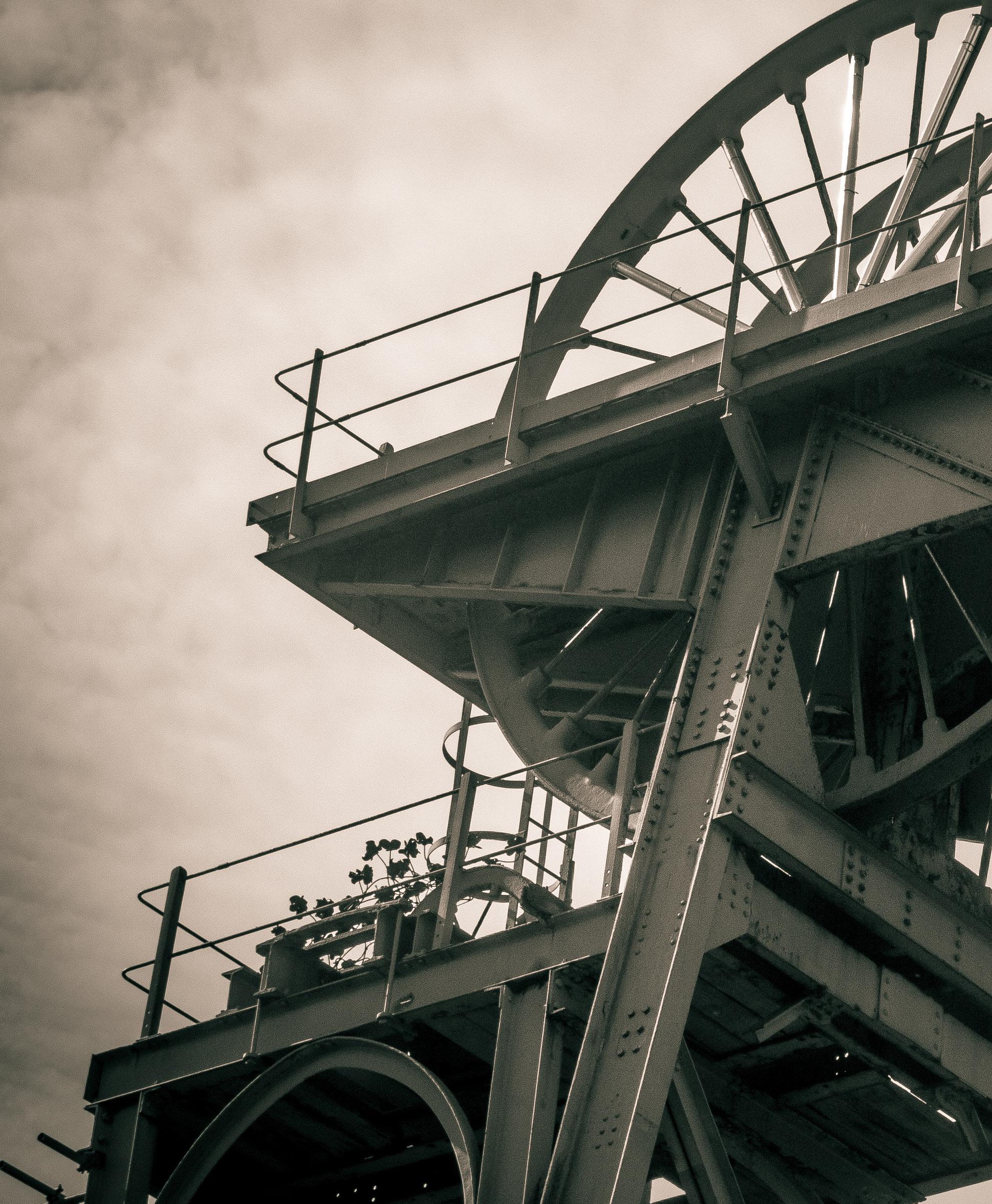
36 | Issue 1 | www.forerunner.co.za | FORERUNNER
Where to, South African mining?
We ask Roger Baxter, CEO of the Minerals Council, about the current state and future of SA mining
given its history and prominence in the South African economy, it stands to reason that the local mining industry will frequently feature in the news. In recent times, however, there have been a number of very concerning developments affecting the mining sector – from missed coal exports, to licencing backlogs, and more. These have implications for the economy and for people beyond the mining sector alone.
From its glory days as a leading force in global mining, some may think South Africa has slipped down the ranks to becoming a lesser player. Is this true? What does the future hold for mining in South Africa. To find out more, we spoke to Roger Baxter, CEO of the Minerals Council South Africa.
Q: How would you summarise the current state of mining in South Africa? What are the major challenges and successes?
RB: Although the industry has produced strong financial support for the economy in the past two years, bailing out the fiscus from a Covid19-related slowdown and disruption, there are concerns about production. In the MediumTerm Budget Policy Statement, it was shown mining contributed R92 billion of the R120 billion in extra taxes received in the 2021 fiscal year. Production has recovered 11.2% from the low base in 2020. However, the 20-year index of
mining production shows that sector production has not recovered since the 2000/2006 peak and is struggling to maintain 2015 levels. The bulk of investment in the sector is going into stay-in-business capital rather than new projects, which raises red flags for sustainable long-term production of minerals.

Q: In the global context, where do you see South African mining being positioned? Are we still a vital player of consequence, or are we increasingly being relegated to the margins?
RB: South Africa remains a leading source of minerals. It is the largest supplier of platinum group metals, chrome and manganese. It is a major supplier of high-quality iron ore, coal, gold, vanadium and other minerals.
Q: What are the key constraints on South African mining at present?
RB: Rail and port logistics are problematic. Rail constraints caused by theft of cable – Transnet says 1,500km of cable was stolen over the past five years; vandalism; and more than 100 idled locomotives that were bought in the tainted deals in the state-capture era, are costing the country dearly. The Minerals Council estimates its bulk mineral members lost revenue of R35 billion in 2021 when deliveries are measured against targets. This includes R17 billion in iron ore, R16 billion in coal and about R2 billion
THE INTERVIEW / MINING
FORERUNNER | www.forerunner.co.za | Issue 1 | 37
in chrome. In none of the years since 2016 have exports exceeded 15 million tonnes per month, except for 2019. High-level talks are continuing with Transnet - ports and rail - to resolve the operational, security and fixed investment backlog issues.
Electricity from Eskom has increased sixfold in price in the past 14 years, while supplies are constrained. Crime is a major concern. Deteriorating security, with illegal mining and theft of mine infrastructure like cables and steelwork, diesel, and products, have led to the industry spending R2.5 billion a year to secure their operations. Delays in processing more than 3,000 mining and prospecting right applications as well as mineral right transfers by the Department of Mineral Resources and Energy (DMRE) is holding up an estimated investment of R30 billion.
Q: Is there anything that sets South African mining apart from mining in other parts of the world, something that is unique that we can offer or on which we can build the future of mining in this country?
RB: South Africa is host to the world’s largest known deposits of platinum group metals (PGMs), which are used in antipollution devices in petrol and diesel engines, and which are critical minerals to electrolyse water to make hydrogen for hydrogen fuel cells, which also use PGMs. South Africa is the world’s largest source of chrome and manganese, which
are used in stainless steel and steel manufacturing. South Africa is one of the largest sources of primary vanadium, which is used in steel manufacturing and to make vanadium redox batteries, which are large stores of electricity that suit industrial applications as well as power plants. The Northern Cape is enormously prospective for base metals, including zinc and copper, and which is relatively unexplored and largely unexploited. South Africa has some of the best attributes for solar and wind-powered electricity generation, opening the way to green production and processing of minerals, as well as to develop a green hydrogen economy.
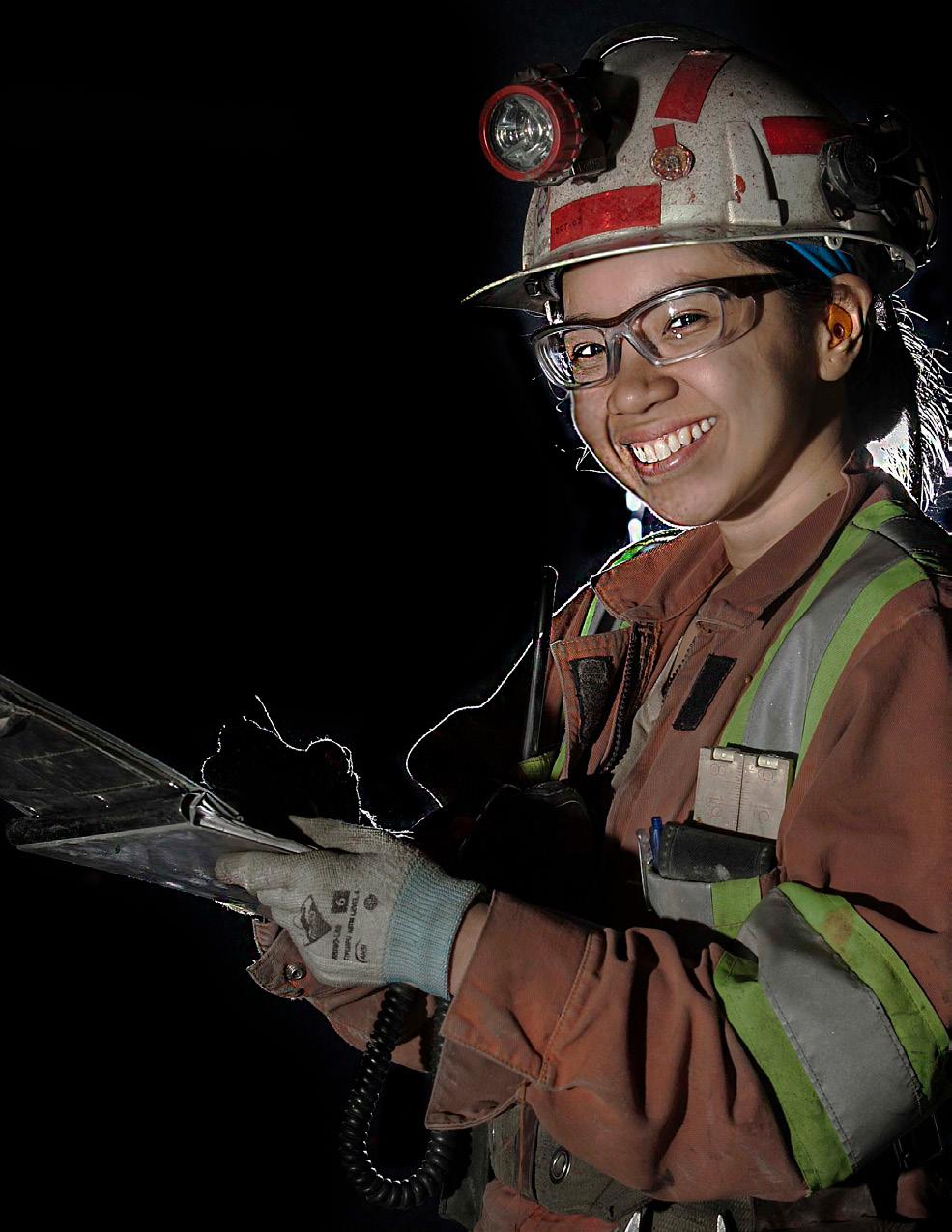
Q: What is the relationship like currently between the mining sector in general and government – are identified problems being adequately addressed and sorted out? Could you please elaborate a little?
RB: The Minerals Council and its members are in regular contact with the leadership of the DMRE as well as other government ministries to address energy, logistics and crime. The relationships are open, honest and delivering results - for example in the energy crisis response unveiled by President Cyril Ramaphosa on 25 July. Much of what was announced was a result of the intense talks between the government and business organisations, which included the Minerals Council which has seconded an energy expert to the Presidency to find solutions.
Q: It was recently reported that you blame the deterioration in Transnet’s rail performance for massive losses incurred by local mining, for example R16 billion lost by the coal mining sector, R17 billion in respect of iron ore. Are you engaging with Transnet or government on this and if so, what has been the outcome so far? What remedial action is on the cards if any? What is the outlook? Will this improve any time soon?
RB: Transnet is operating under the constraints of crime and decisions made by previous management. The Minerals Council and its members are in close and regular consultations with Transnet, specifically along commodity export corridors to find solutions and to offer assistance. One example of this is the more than R100 million invested in security by coal companies on the coal rail corridor, leading to a reduction in security incidents. This model could be replicated on the chrome, manganese, and iron ore lines. Talks are underway to address security concerns on these corridors. The Minerals Council assisted Transnet in motivating the government to relax strict government purchasing and localisation conditions to secure spares for locomotives, wagons, port and rail infrastructure.
Q: Last year the Department of Mineral Resources and Energy indicated that there was a substantial backlog
38 | Issue 1 | www.forerunner.co.za | FORERUNNER
We design, build and improve stationary, mobile and truckmounted heavy-duty vacuum systems for industrial sites, processing plants and mining applications.
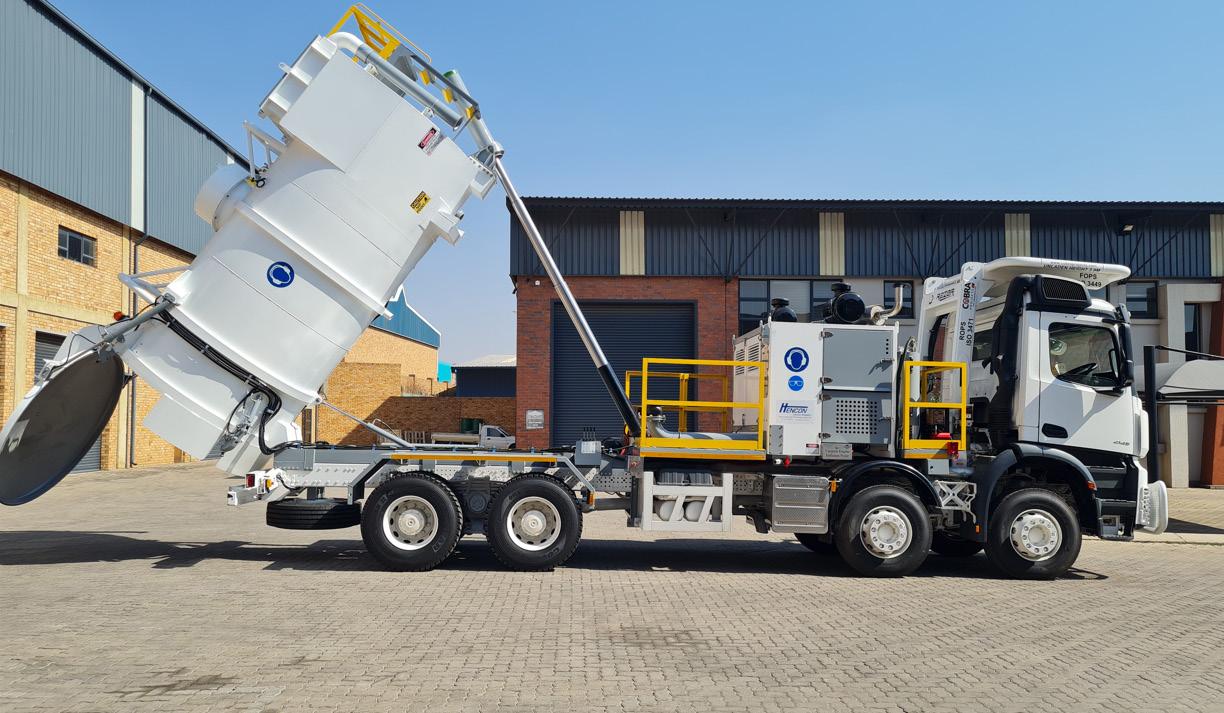
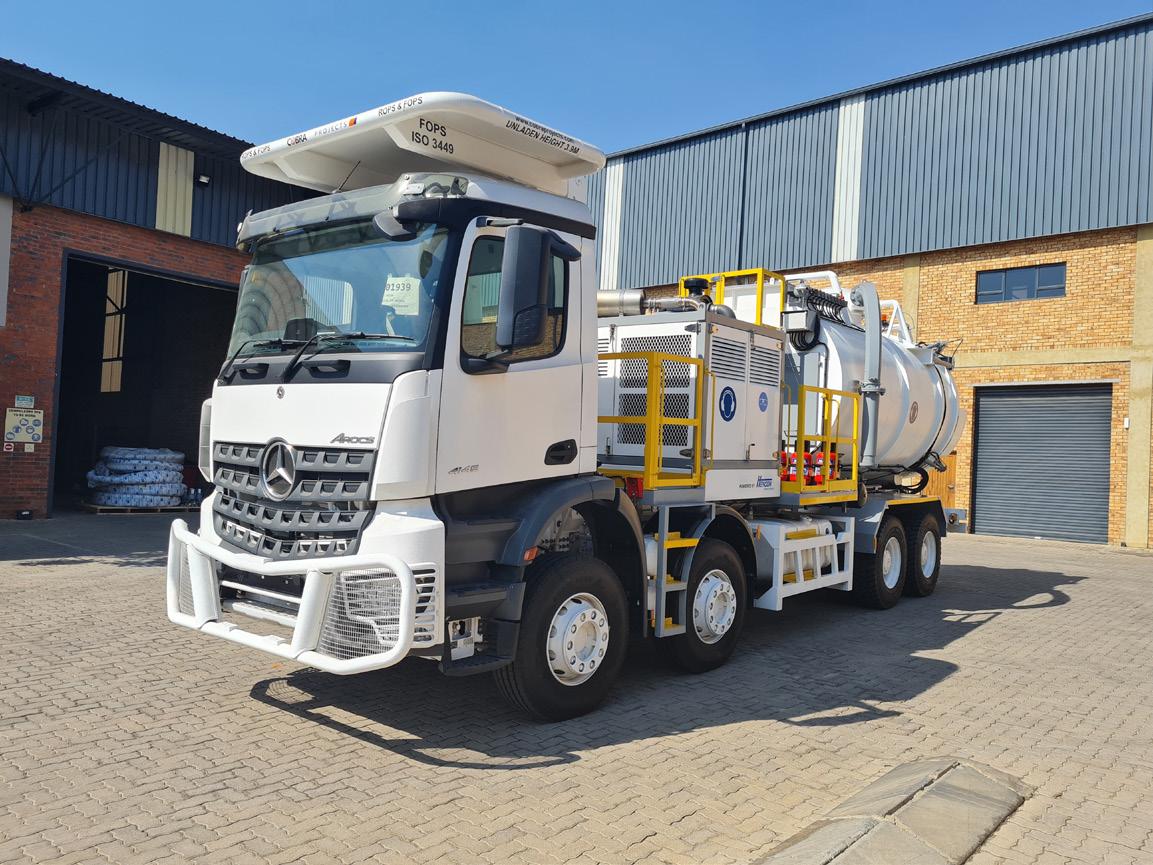
At Hencon we assess the customer requirements and then tailor-make a fit-for-purpose solution. Typically, we establish the quantity, diameter size, SG and distance that the customer requires his material collected to.
The material is collected via hose or fixed pipe reticulation to the collector. The filter house can be incorporated into the collector to discharge all material or be a separate unit. A lot of emphasis is placed on the filter to ensure the correct size and material is chosen. The filters are cleaned with a manual shaker motor or preferably with pneumatic reverse-pulse filtration.
The collected material can be gravity discharged into a skip, stockpile or ore pass or continuously fed onto a conveyor belt or into production using double-flap valves.
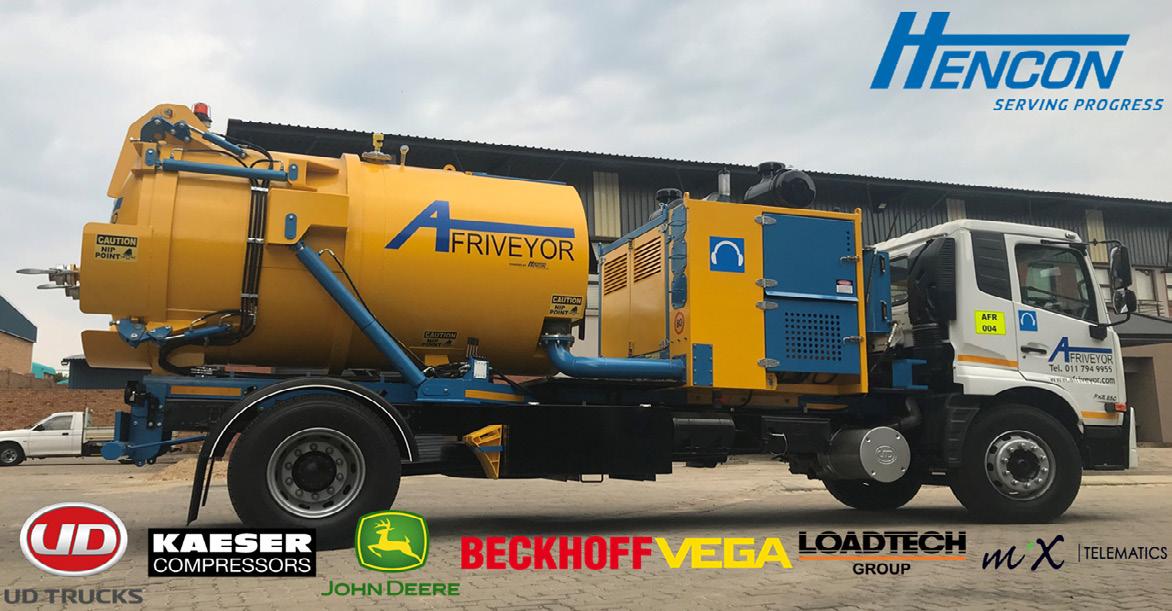
The vacuum unit is balanced to the requirements, and we manufacture from 15 – 220kW in electric or diesel-driven versions. The reliable and low maintenance roots blower is a positive displacement pump that is often complimented with additional intercooler technology to create deep vacuum and high airflow. No water is used.
Vacuumation can be effectively used to recover valuable material and handled once, fed back into production.
Kindly contact us on 011 -794 9955 or info@hencon-vactech.com
Hencon Vacuum Technologies (Pty) Ltd. (Hencon) was established in 2005 as an Original Equipment Manufacturer (OEM) based in Laserpark, Johannesburg.
of mining rights, prospecting rights, mining permits, Section 11 change of ownership transfers, and licence renewals. Based on a survey of Minerals Council members representing over 170 mining company right applications conducted in December 2020, mining companies that are members of the Minerals Council had projects worth about R20 billion that were prevented from being developed due to slow government processes including delays in the approval of permits and mining right transfers, and the issuing of water-use licences and environmental permits. What is the current situation?
RB: The Minerals Council is in close engagement with the new DMRE DG Jacob Mbele about its concerns with the mineral rights applications backlog as well as the need for a new transparent, efficient, corruption-free, off-theshelf, online cadastral system to better manage mineral right applications as well as encourage new investment in exploration and the development of a junior mining sector. South African exploration spend is at about 1% of global spend and Mineral Resources and Energy Minister Gwede Mantashe has said he wants this to rise to five percent. The best way to achieve this is to have a functional, transparent cadastral system to replace the ineffective SAMRAD system as a matter of urgency.
Q: What does the future hold for exploration in South Africa – constraints and opportunities?
RB: There is appetite from local and foreign companies to explore for minerals in South Africa. However, the inefficient system of logging prospecting rights and the long time to grant them are working against South Africa. The Minerals Council advocates the use of an efficient, transparent, offthe-shelf cadastral system – one of which was developed in Cape Town and is used globally by numerous countries
including those in Africa - to encourage prospecting and exploration for minerals. A tax incentive scheme, like Canada’s flow-through shares, would stimulate investment in companies undertaking risk and expensive exploration. The Minerals Council advocates the introduction of such a scheme.
Q: Mining and energy / Eskom. What are your views on the current situation in this respect? Is the mining sector capitalising successfully on government’s reforms / relaxation of regulatory requirements in this sphere as announced by President Ramaphosa? Should more be done? What can mining offer to relieve the pressure on energy provision and related rising costs in South Africa?
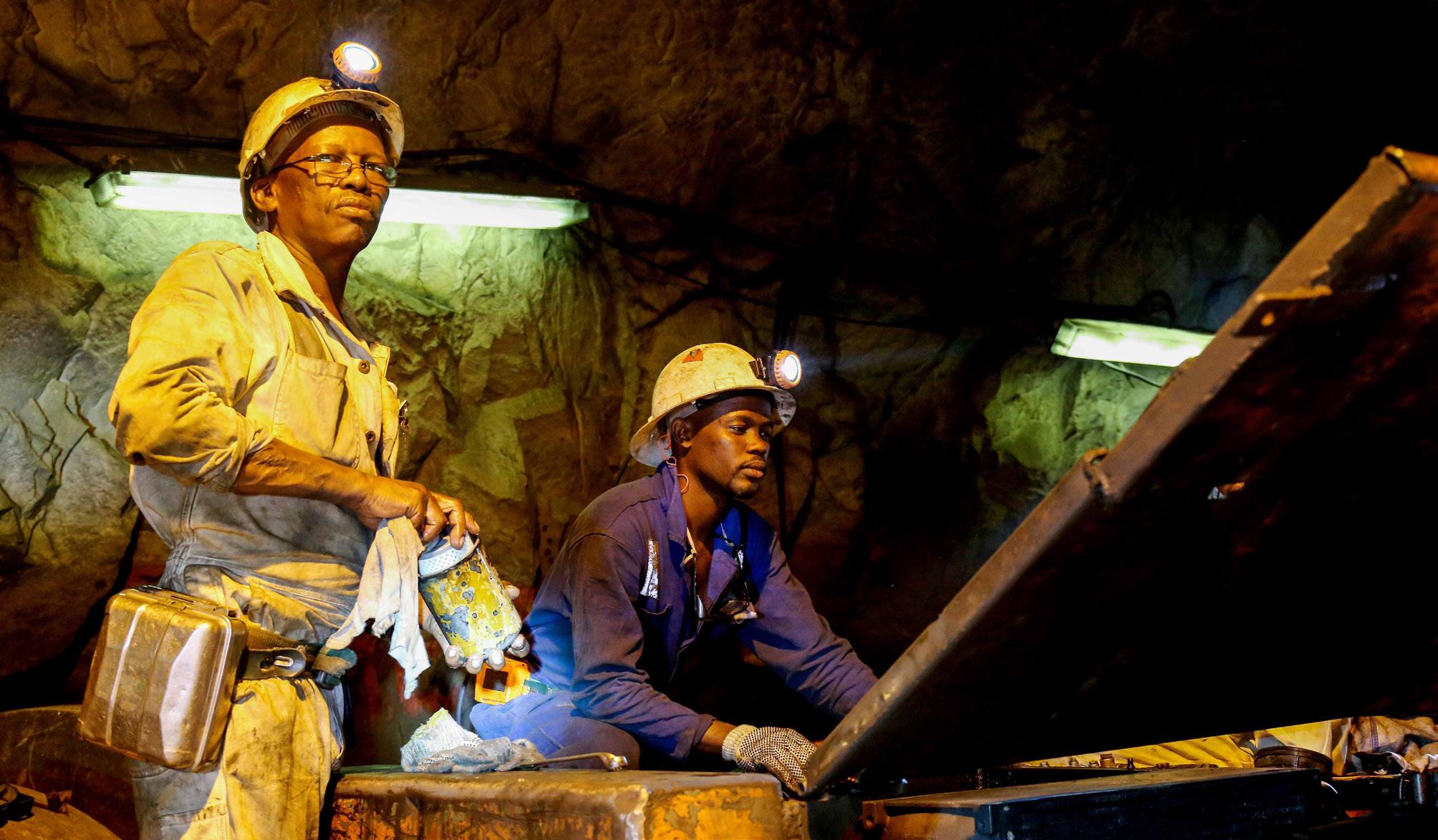
RB: The Minerals Council has a list of 89 energy projects which are being built by 29 mining companies amounting to a total of 6,106MW. The value of these projects is more than R97 billion, a large investment by any measure. President Cyril Ramaphosa’s throwing open the embedded energy generation market has provided an unprecedented opportunity for South Africa’s mining industry to not only reduce reliance on Eskom’s expensive and variable electricity supply but also rapidly advance their decarbonisation plans. Mining companies are moving towards sustainable, renewable sources of energy to reduce their carbon footprint, reduce their exposure to South Africa’s carbon taxes, and to ensure the minerals they produce are globally acceptable and do not attract import penalties.
This year, there have been fundamental changes to South Africa’s energy sector that will help them achieve these strategic goals and the broad mining industry’s objective of achieving carbon neutrality by 2050 in line with its international peer group. President Ramaphosa’s detailed announcement on 25 July to address South Africa’s energy
40 | Issue 1 | www.forerunner.co.za | FORERUNNER











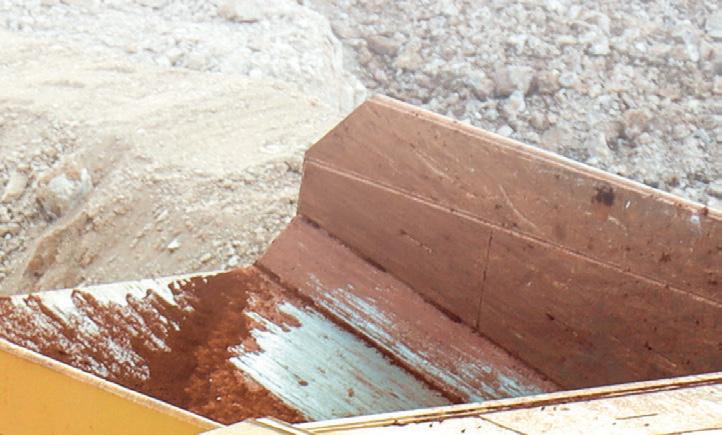
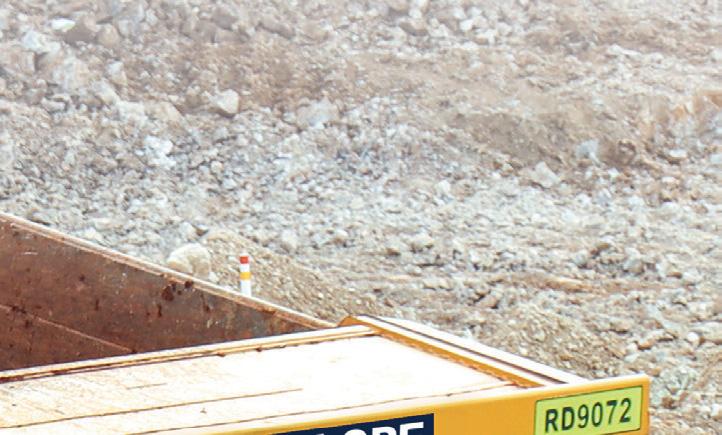
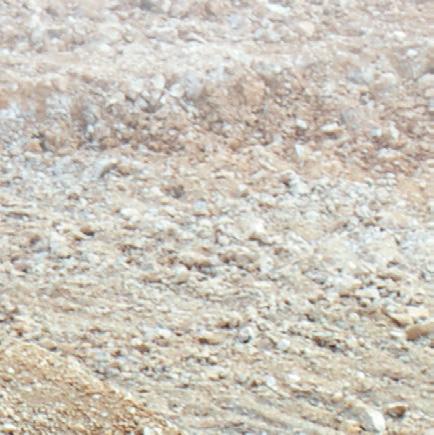






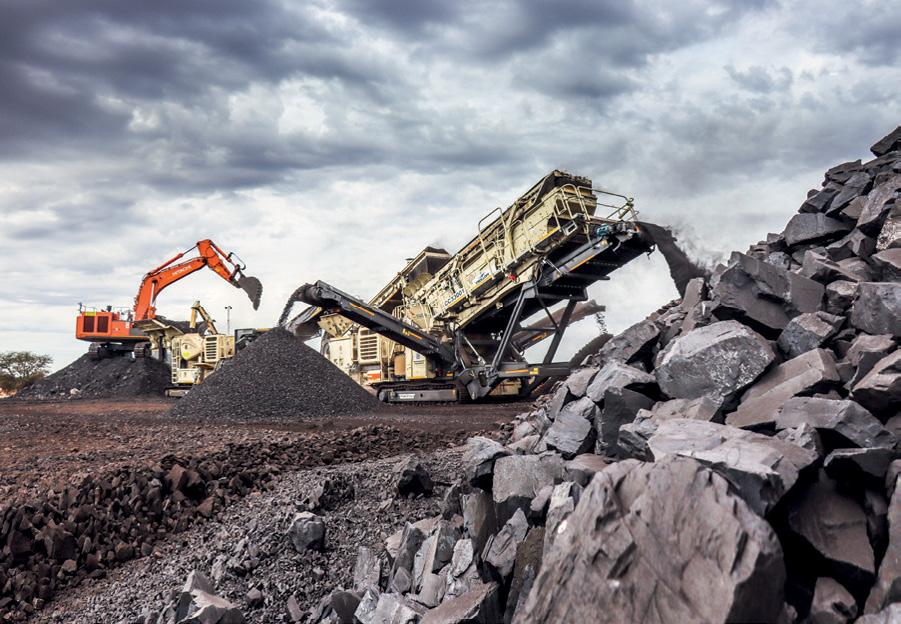
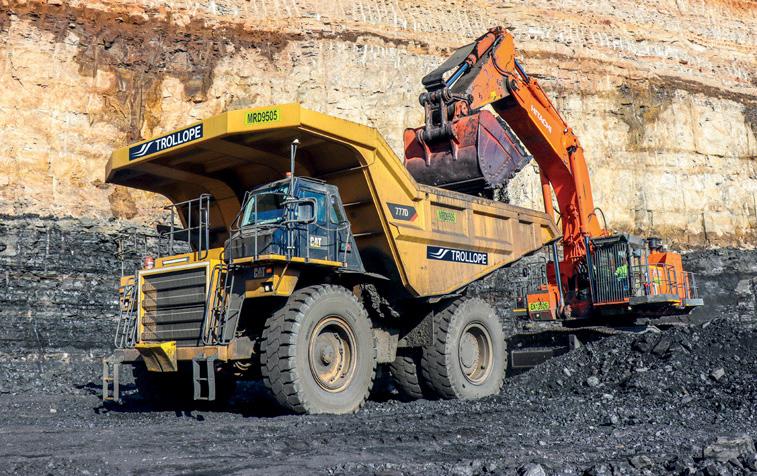
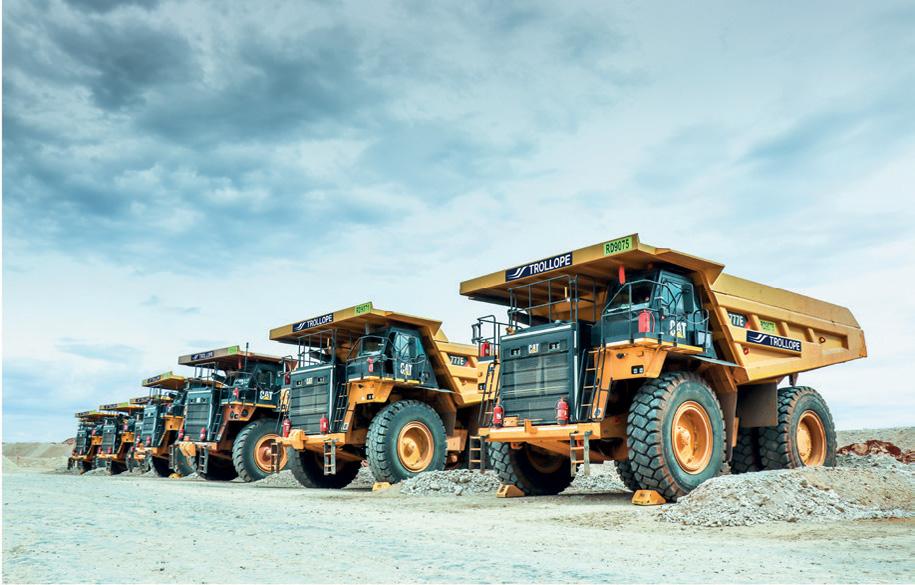
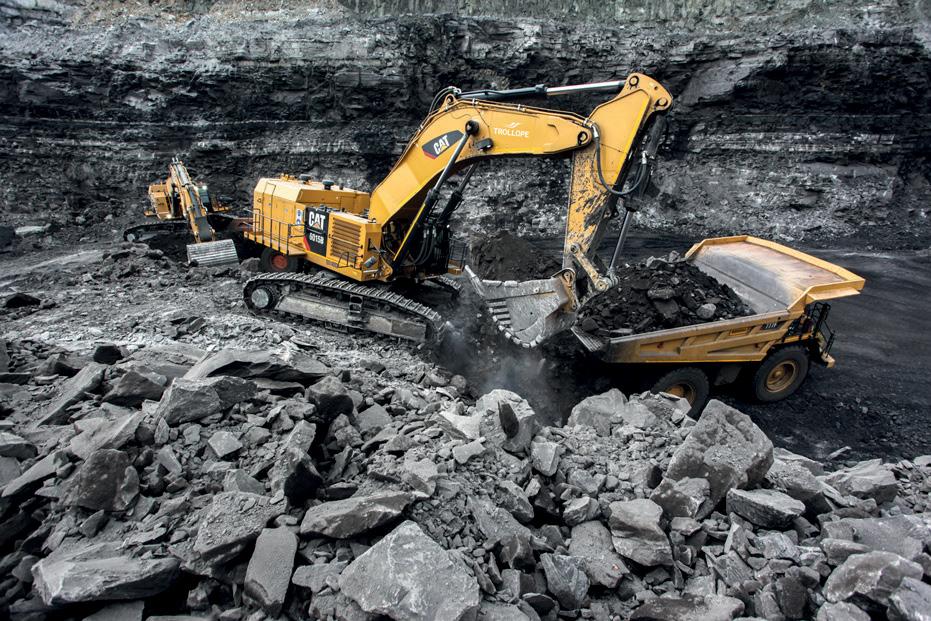
crisis included removing the 100MW cap on licence-free embedded electricity generation for the private sector. The broad suite of interventions he unveiled amount to the most significant reform to South Africa’s energy sector in decades and it has been rapidly embraced by the mining sector, which consumes about 15% of Eskom’s electricity. If smelters are included, this number doubles to 30%. The sources of energy for the mining industry’s 6.1GW projects are 4,000MW from solar, 2,000MW from wind, with battery storage contributing 84MW and biomass 8MW. The timing of implementation depends on registering the projects and securing a range of authorisations from various government departments.
Q: What is the current status of digital transformation in the mining sector in South Africa?
RB: Modernisation and technology in mining is equally critical for junior and emerging miners and larger mining groups to ensure a safe and healthy work environment, while reducing costs, improving efficiencies and ultimately global competitiveness to unlock South Africa’s mineral wealth. The emergence of new technologies has ushered in a wave of global change that is being driven by fourth industrial revolution (4IR) innovations and thinking. The Minerals Council South Africa is at the forefront of work to promote and reinvigorate the country’s moribund exploration, emerging and junior mining sector. By deploying technology and modern mining methods, the cost and efficiencies of extracting ore bodies are improved, increasing the potential for the development of previously uneconomic deposits and new discoveries and creating jobs and wealth for South Africa.
Q: Where do workers (and their unions) stand in relation to digital transformation and automation in mining? How is it impacting them and what is being done to retrain/reemploy affected workers?
RB: The Minerals Council South Africa commends the Mandela Mining Precinct, the largest Public-Private Partnership of its kind, for ensuring that all stakeholders participate in its research and development planning for a modernised mining industry by including five unions for inputs at a strategic and policy level. They are integral to the work done to modernise South Africa’s mines and make them safer, more productive places of work. It ensures that all industry stakeholders have a say in mine modernisation.
Q: How are we doing in terms of gender parity or the advancement of women in mining? What has been achieved, and what are the remaining key challenges?
RB: The cause of women in mining gained global momentum in March last year when the first ever Global Women in
Mining (WiM) Summit was hosted on a virtual platform by International Women in Mining (IWiM), with women of the South African mining industry well-represented via the support of the Minerals Council South Africa. Many mining companies in South Africa have already done much work in this regard, but there’s still much more to be done. The road map developed by the Minerals Council’s WiM team will assist mining companies in doing just that.
Q: What is the latest situation regarding health and safety on our mines, especially in the context of just having emerged from the worst of the Covid-19 pandemic? Are our mining safety figures improving and if so, why? Where are we heading?
RB: The Minerals Council and its members were at the forefront of major economic sectors in South Africa in returning employees safely to work to save lives and livelihoods. The industry’s vaccination rate is 75% of nearly 460,000 employees which is well in excess of the 45% national vaccination rate. Of vaccinated mineworkers, two thirds have received two vaccinations. The industry lost 750 staff to Covid-19, which gives a fatality rate of 0.16%, well below the national rate.
The Minerals Council and its members refocussed attention on safety towards the end of 2021 after two years of unacceptable regression in fatalities from the record low of 51 deaths in 2019. While there have been encouraging signs of progress in key areas of safety, like falls of ground and trackless mobile machinery, with record performances in the first half of the year, there is still a long way to go to realise the ambition of Zero Harm. The Minerals Council and its members are fully committed to mining safety. It is working closely with all stakeholders in the government, organised labour and service providers to realise its goal of Zero Harm.
Q: Finally, would you say the future looks bright for SA mining, and why / why not?
RB: The mining industry faces many of the same challenges the rest of the country does, with deteriorating security, logistics bottlenecks, expensive, erratic power, failing municipalities, which feeds into community unrest and exploitation by criminal elements wishing to extort contracts from mines, and a large, dissatisfied population where four out of ten adults are unemployed in the expanded definition of joblessness. The Minerals Council is actively consulting the government, engaging labour, communities, the security cluster and state-owned entities to offer assistance and to provide expertise to resolve the problems. The problems are well understood by all parties and the solutions to these problems are available. They need to be urgently implemented.
42 | Issue 1 | www.forerunner.co.za | FORERUNNER





THE SATISFYING AND REWARDING ART OF INVESTING IN ART
Record prices of hundreds of millions of dollars are being paid for art works at auctions. Among the high-priced paintings and sculptures are those of past masters but also many living artists, including South African artists. Last year the global art auction market reached total sales of $16.5 billion – its most lucrative year ever.
Yet often the question is still asked: is buying art really an investment? Can it be considered an asset class of its own for investment purposes? To get answers to our many questions, we approached two specialists in this field – an art auctioneer and a wealth specialist. They had some interesting things to say.

44 | Issue 1 | www.forerunner.co.za | FORERUNNER
One of Leonardo da Vinci’s masterpieces, Salvator Mundi, was sold to a Saudi Arabian prince at an auction held at Christie’s New York in 2016 for a whopping $450 million – the highest price ever paid for a single work of art. Paul Cézanne’s painting, The Card Players, fetched $288 million a few years back. And still living contemporary artists Jeff Koons and David Hockney have sold works for $91 million and $90 million respectively.
The highest price ever paid for a South African painting was the R21.16 million paid for Irma Stern’s Two Arabs, in 2011. Auctions of the work of local artists regularly fetch prices in the millions rather than thousands. So, can the buying of art be considered an investment in an asset class of its own – how does one define it?
“Yes, investment art is becoming an asset class of its own because more and more investors are diversifying their portfolios to include all types of art,” responds Amy Carrington, Fine Art Specialist at auction house Stephan Welz & Co in Cape Town.
“To me, investment art indicates art of a certain status, generally by blue chip artists that show promise for an increase in value over time. Investment art is art that goes beyond the walls of a home and can be seriously considered as an asset,” she says.
Mike Fannin, a Private Wealth Manager who is Co-Founder and Non-Executive Director at integrated wealth management firm Carrick Wealth, agrees. Mike, who is himself an avid art collector, defines investment art as “art that has a value based on its collectability and scarcity that will appreciate over time. This would be linked to the artist and the nature of the piece”.
It is said that increasingly investors are looking at the art market (and other collectables) as an alternative to traditional investment assets. Do they agree, I ask them.
“The investment market in alternative assets has exploded in recent years, especially at a time of the low-interest rates that we have seen. This includes art, watches, and cryptocurrencies to name a few. Some of the assets have seen a significant price correction recently, but art has, however, held value extremely well, and continues to be a strong alternative asset,” says Mike.
“In many ways, art investment functions the same way as more traditional investment assets, and when examining and tracking art price indexes, the art market almost always follows the exact trends of the South African stock exchange,” says Amy.

“With this being said, with the correct advice, more and more people are becoming comfortable with the idea that art should hold or increase in value when quality items are purchased, but as with traditional asset investment, this does not come without risk,” she adds.
Art is the largest category making up the auctions at Stephan Welz & Co, both in terms of average price and number of lots offered, says Amy. Their market is both domestic and international.
“The broadening of buyer pools using online auctioneer platforms has helped us to reach more foreign buyers. This not only exposes more international buyers to South African art, but also allows works that do not necessarily have the best local following or market to reach the correct collectors overseas,” she says.
INVESTMENT
FORERUNNER | www.forerunner.co.za | Issue 1 | 45
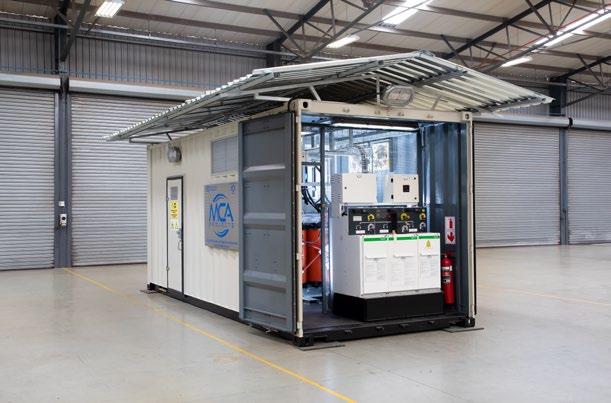
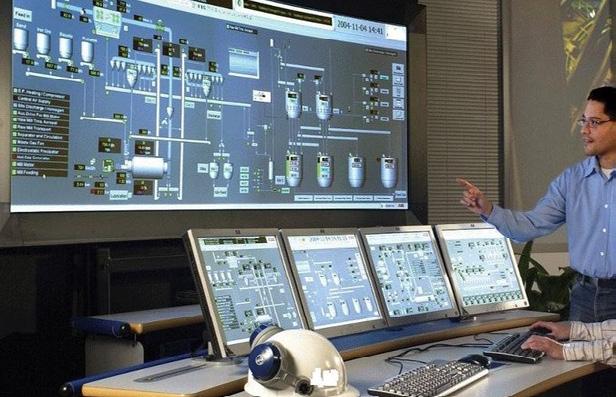
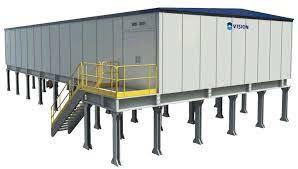

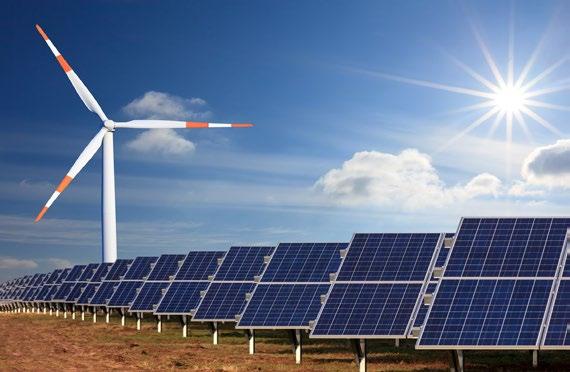


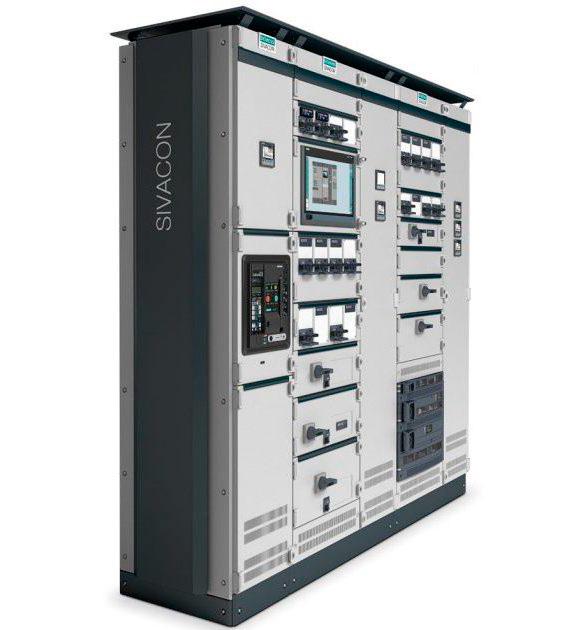








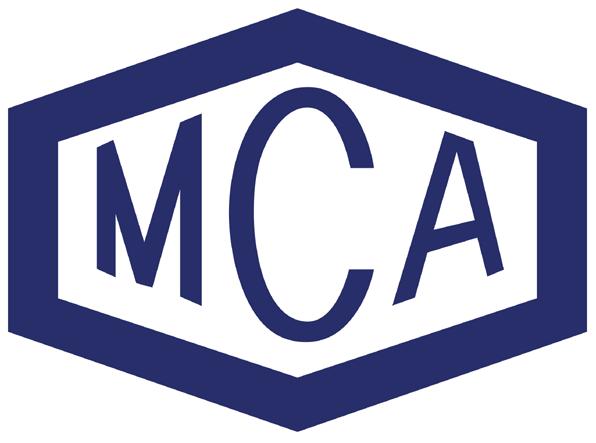
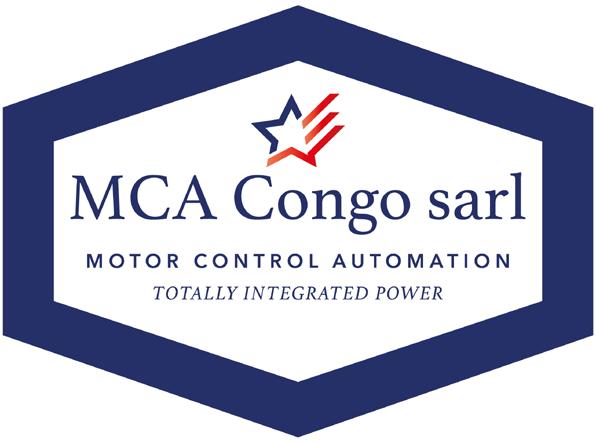
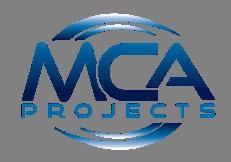
sales@motorcontrol.co.za www.motorcontrol.co.za +27 (0) 11 397 2141 Boksburg, Gauteng, South Africa SWITCHBOARD MANUFACTURERS OF DISTINCTION EST.1994
The online market
As the Covid pandemic wreaked havoc everywhere and pushed more and more sectors and businesses into digital transformation, the art world was no exception. Available figures show that the online sales of galleries doubled from $6 billion of total sales in 2019 to $12.4 billion in 2020…and counting. Virtual art auctions took off with Sotheby’s first livestreamed auction raking in $363.2 million, followed by
Christie’s with $420 million. Locally we had the Investec Digital Art Fair last year and the regular online auctions of companies like Stephan Welz & Co.
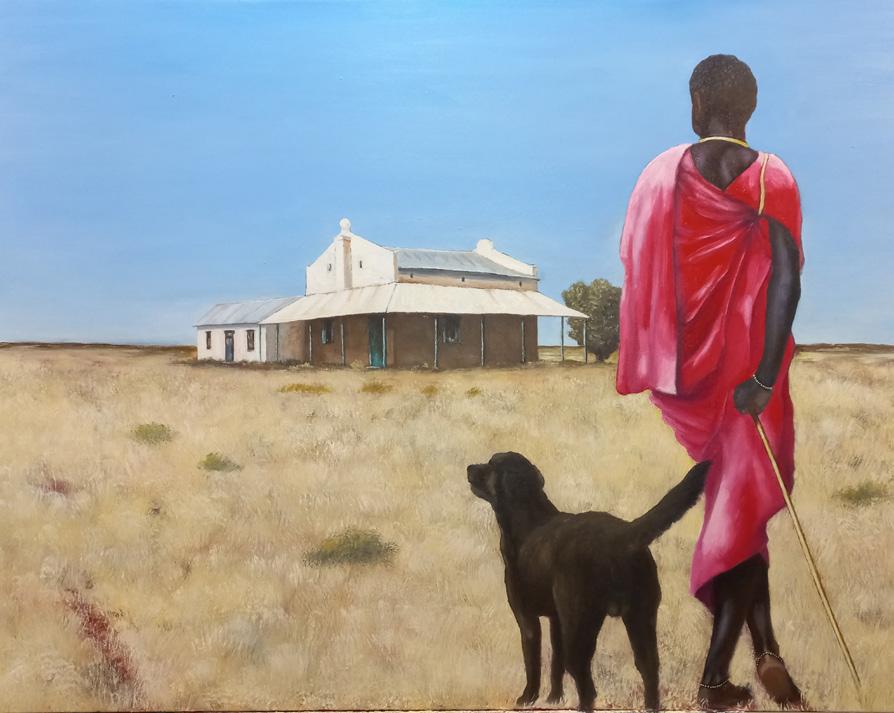
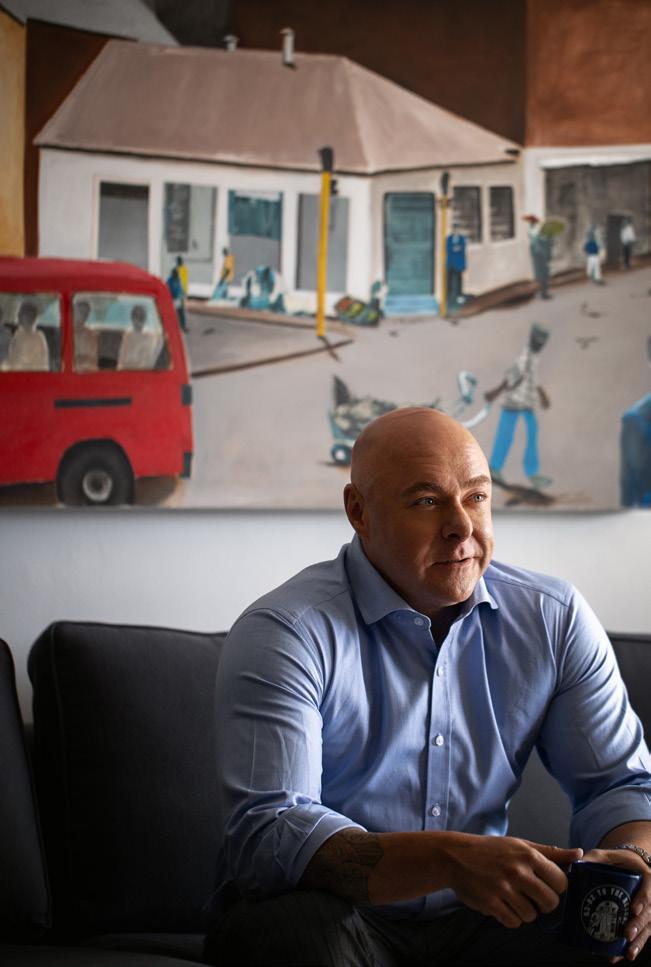
Mike also thinks “the online marketplace in general has exploded”. The advances in technology that allow for sophisticated platforms to give the consumer an enhanced virtual experience mean that it becomes very easy to access products from a wide range of sources without having to physically be there, he says. “I have personally bought art using this method and have had both good and bad experiences. I still believe that the real world offers a richer experience, and there will always be a market for art galleries, where a client can physically view a piece before buying it.”
Amy generally concurs with Mike’s statement. While the digital transformation of the art world has brought some benefits, she says “there is a lot to be said for being able to view and engage with an artwork in person”.
“When all the images of the paintings on a website are the same size, it is hard to relate to a specific work when you have no real feeling for the ratio, texture, colour etc.”
But she adds that digital transformation has also resulted in the transformation of the market, providing them with an almost endless pool of buyers that can be reached all over the world. Online sales also involve a shorter lead time, which means that auction houses can have more sales more often.
“I think both traditional and online/digital platforms will continue, and in many ways intersect, but I think oftentimes the one informs the other and as an art lover, it is hard to imagine consuming art without the ability to see it in person,” says Amy.
Passion or sober investment
Art collecting is also a passion, a hobby to some, something that speaks to the heart and soul rather than to an investment calculation. Does this not increase one’s risk? There seems to be a fine and brittle line between investing with one’s heart or with one’s head.

“This mix is exactly what got me interested in starting to collect investment art. I have a number of pieces that were aesthetically pleasing that I had bought over the years. A good friend of mine who has extensive knowledge of art came over and commented that while I had ‘good’ art, I didn’t have ‘great’ art. I think when investing you can definitely satisfy the aesthetic element but need to be careful not to buy something simply because you like it without understanding its investment potential,” says Mike.
In Amy’s view it depends on the individual’s motives. “There are collectors who invest purely in terms of monetary value and have advisors who run their collections and stay relatively uninvolved in the process, but for the most part, our collectors buy because they like a certain artist,” she says.
INVESTMENT
Da Vinci’s Mona Lisa
Searching for Christina’s World
FORERUNNER | www.forerunner.co.za | Issue 1 | 47
Wealth manager and art collector Mike Fannin in front of a painting by Sam Nhlengethwa
“Our biggest collectors choose an artist that appeals to them, and then research and watch the performance of that artist to determine how best to invest. We often urge our clients to spend their money on artworks that they’d be happy to look at every day.”
“Some people do simply give advisors a list of artists they feel they want to include in their portfolios, but this takes away much of the joy of collecting. In some ways I suppose it comes down to the difference between a collector and an investor in art, and for the most part, our clients are a mix of both. A large part of collecting art is also the ‘thrill of the chase’, improving the quality of your collection, chasing the best works by your favourite artists within your budget, and getting your hands on those ‘trophy’ pieces,” she says.
“I think art investment, particularly for large corporates, is also increasingly becoming about social conscience, and the works chosen for these collections are carefully considered and curated to ensure that the works and artists represented in their collections are in line with the company ethos. Art often allows collectors to make a statement, which is something that can be very powerful on a large scale.”
Mike believes much of the value and importance of investing in art lies in going to the shows and galleries, “because that is how you learn more about art”.
“Employing a professional adviser would definitely get the job done, but in the same way as with traditional investing, I encourage my clients to develop an understanding of the assets they are buying.” And that’s done by going to the shows and galleries – a very important point indeed.
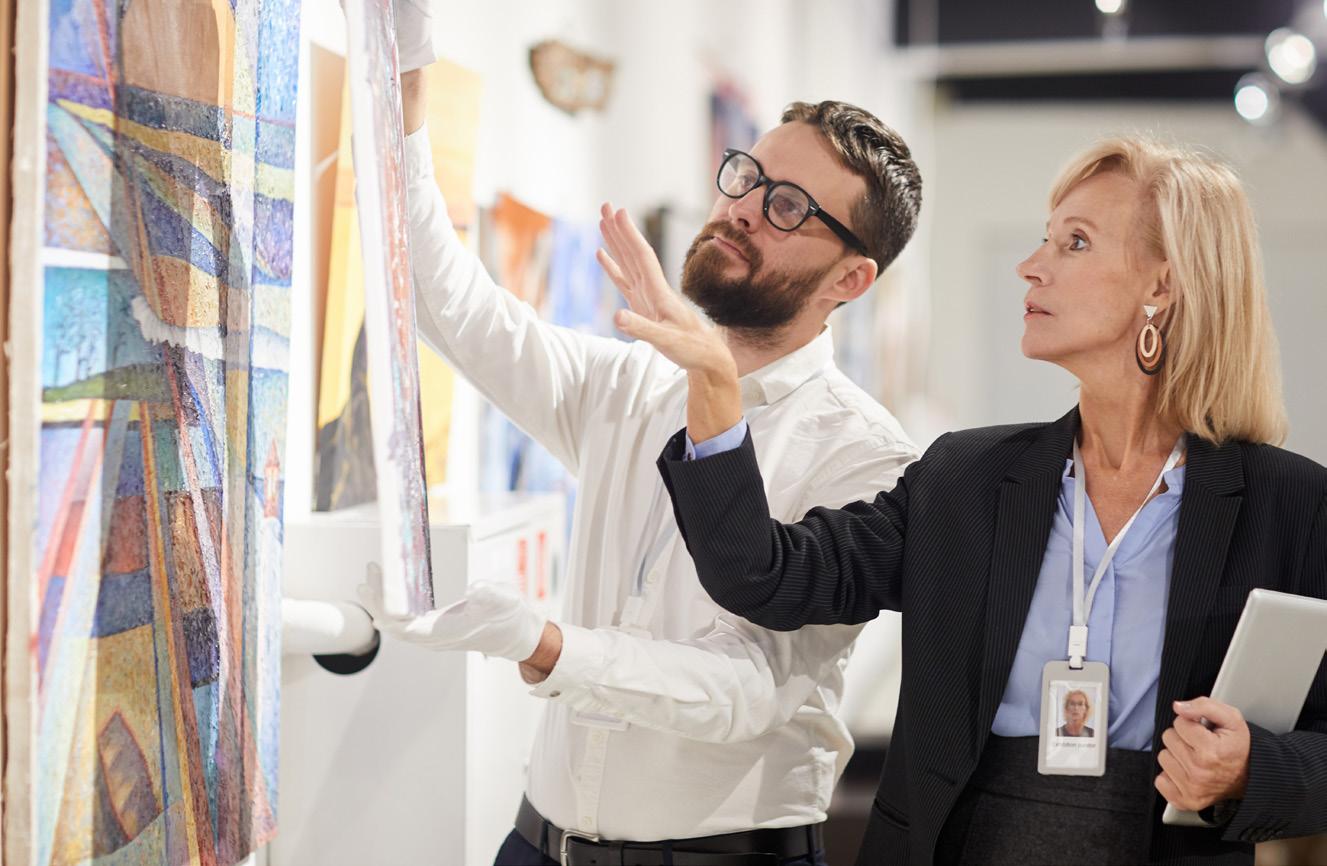
Corporate collections make up the majority of investment art collections, and the rise of private galleries has also increased the market for private collections, says Mike. Galleries like the Norval Foundation, the Welgemeend House collection and the Zeitz Mocaa museum have helped grow the market for art as an investment, he says.
Mike’s firm, Carrick, specialises in offshore investment solutions and does not offer a service structured specifically around investment art. Being such a specialised area he says most art collectors would buy art with the assistance of specialised art dealers. But there is nonetheless still a valuable role involved for an investment advisory firm like Carrick if a client came to seek its advice on investing in art.
“All investment advice at Carrick goes through a detailed process of understanding the client’s needs and risk appetite. Once that has been ascertained, we can establish
how much they want to allocate to alternative investment classes, and how much they would look to put into investment art. It would then be about engaging a specialist art curator to advise on what was available to suit the amount we had allocated, taking into account how much risk we want to take and the expected returns we are looking to achieve,” says Mike.
Local versus international
It’s a fact that over the last decade or more a number of specialist art investment funds have been created globally and by 2013 the global art market was estimated to be as large as the venture capital market in terms of assets under management. During the same period the art auction market almost doubled in sales volume. But Amy believes that is not the case in South Africa, with the local art market being very small in the context of the global art market and lacking the heavyhitting artworks such as the Basquiats and Monets and fetching huge dollar prices.
“Our highest-ranking artists are just too small overall. Sotheby’s or Christies can easily match an entire year’s worth of South African art sales in just one evening sale,” she says.
48 | Issue 1 | www.forerunner.co.za | FORERUNNER
“A large part of collecting art is also the ‘thrill of the chase’, improving the quality of your collection, chasing the best works.”
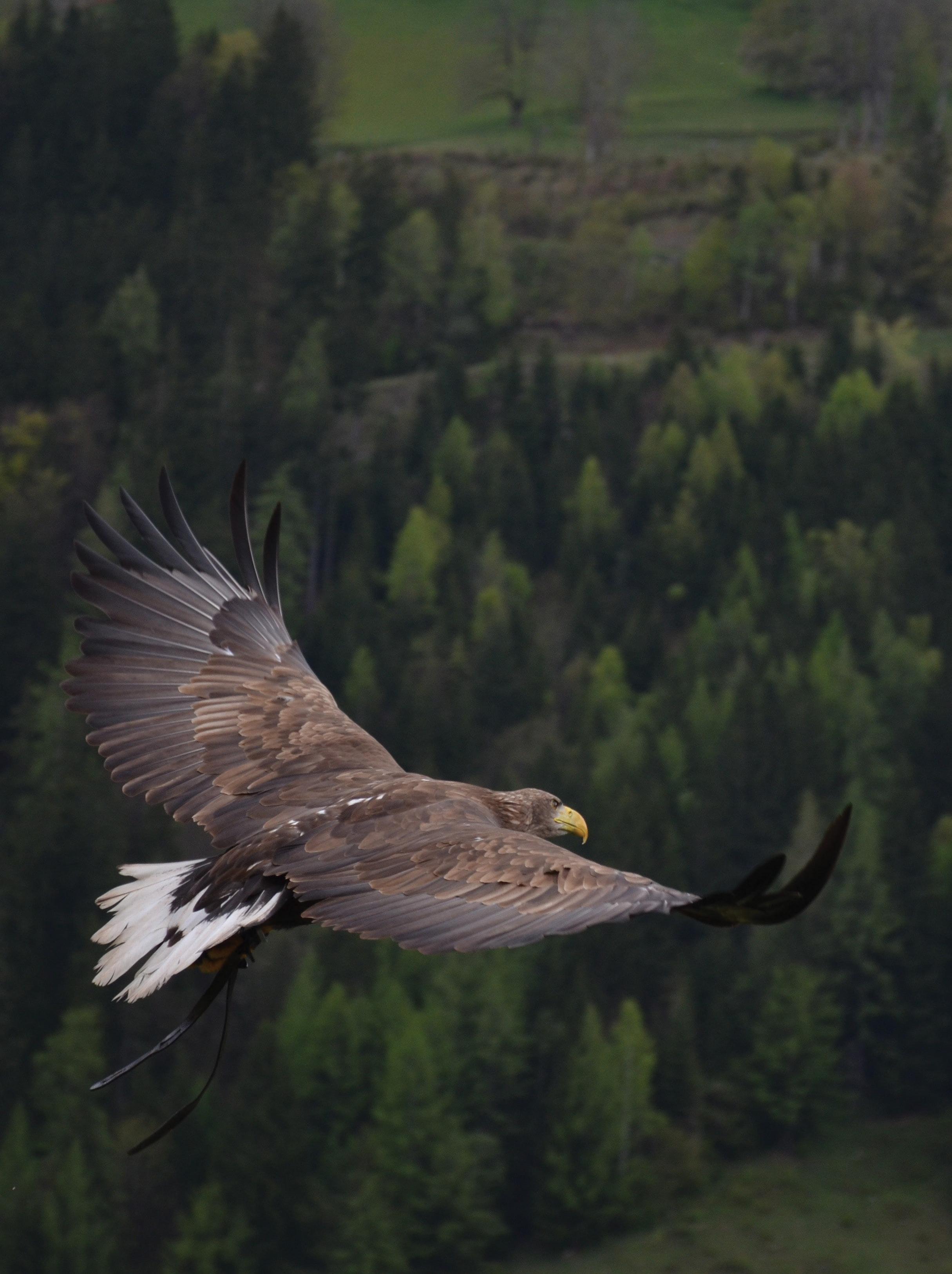
CROSS-BORDER EXECUTIVE
EXPERTS Hunting in Cape Town . Johannesburg . Lusaka . Nairobi . Cairo Casablanca . Abidjan . Lagos . Dubai Speak to your local experts leonie@aimsinternational.com arthur.nkuna@aimsinternational.com www.aimsinternational.com/za and beyond
SEARCH
Measured against a global market in which the United States is by far the biggest, followed by the UK and China, South Africa does not feature very strongly. In fact, Amy says there are only a handful of South African artists that fall into the category of global investment and that are internationally recognised and tradable. In the same breath though, South African and African art is slowly starting to make its mark on the international platform, with specialists like Hannah O’Leary at Sotheby’s making huge strides for African art to be recognised and appreciated, says Amy.
She says in South Africa there are three main auction houses, each with a different direction and focus. She believes her company, Stephan Welz & Co, acts as a bridge between the contemporary and modern/classic works that are on the market and that they fill “the niche between works of R100,000 and R2 million, making art accessible to a broader band of buyers.
One might think that given the overwhelming dominance of super sales of the big-hitting artists and their work, like Van Gogh or Rembrandt or a Hockney, would place art investment and a decent return on investment beyond the scope of smaller investors much lower down the net-worth chain at considerable disadvantage; that the art they can afford is that of lesser-known artists, thus making their investment more risky and less profitable. Not so, says Mike.
“There is a space for every type of investor, as long as you are willing to be patient. For example, while William Kentridge’s originals can sell for millions of rands, it is possible to get a good artist’s proof for as little as R40,000 which will still hold good investment potential. As a return on investment, there are great South African artists that
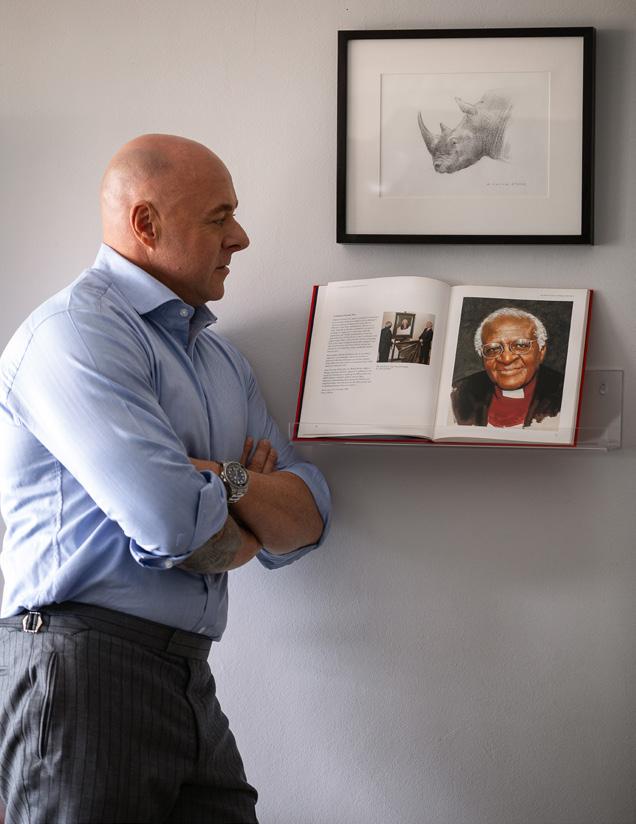
have recently exploded in the industry and the return on investment for their works is extraordinary,” he says.
Amy adds that only 1% of the world’s population can buy those van Gogh works which limits the market for pieces of that profile.
“Again, it depends how you look at it, as perhaps the uniqueness of an artwork and the fact that you only get one, is exactly what makes it investment worthy. At the end of the day, art is driven by the market and there are no hard and fast rules. However, I do believe that if you are properly informed, you will find growth at whatever level you choose to buy,” she says.
until you find one that resonates with you. One would then look at the investment potential of that artist’s work and take the time to find a piece that you like. But it’s not a perfect science, and it’s hard not to get carried away. I think anyone new to art investment would do well to work with people who are knowledgeable about the subject, and then to invest their time visiting galleries and going to auctions so that they can learn more about it,” says Mike.
Who in South Africa are the typical or major art buyers at the moment, I want to know. According to Amy the majority of their clients are private individual collectors, with varying sized collections. Institutions and museums that are government funded are struggling with acquisition budgets. Most of their clients are quite handson with their buying, and their longstanding clients are comfortable bidding with her company’s specialists on the telephone. Large corporates generally have curators that purchase works on their behalf, but that seems to be a lessdominant buyer pool at the moment, says Amy.
Advice for investors
What advice would Amy and Mike offer would-be art investors?
“It is about researching different artists
In his case he tries to buy art in a certain price category that he believes will appreciate over time. Instead of buying one large piece with the funds he has allocated to this asset class, he tries to spread it across a few smaller art pieces.
Lastly, the million-dollar question: which South African artists stand out from an investment point of view? For Mike it’s the big names such as William Kentridge, Irma Stern and Zanele Muholi while he has also developed an affinity for Sam Nhlengethwa’s work, he says. For Amy it’s also Kentridge and Nhlengethwa, but she also includes Nelson Makamo, Igshaan Adams, Wim Botha, Deborah Bell, and Lisa Brice.
By Stef Terblanche
50 | Issue 1 | www.forerunner.co.za | FORERUNNER
“As a return on investment, there are great South African artists…”

In every edition of Forerunner, we shine a spotlight on the extraordinary and outstanding things in life that give so much pleasure, from great wines to magnificent sports cars, from outstanding books to luxury travel, and much more. In this edition we showcase the 2019 Kanonkop Black Label Pinotage and the exclusive Mukwa River Lodge that recently opened its doors on the banks of the Zambezi River.

2019 Kanonkop Black Label Pinotage
Made from dryland bush vines planted in 1953 on this world-famous wine estate on the slopes of the Simonsberg in Stellenbosch, Kanonkop’s iconic Black Label has become known to be the ultimate expression of Pinotage since its maiden release from the 2006 vintage.
It’s 2019 vintage certainly is no exception to that remarkable rule – in fact, its perhaps even a touch better, despite it being the product of one of the most challenging vintages in recent history. Kanonkop’s 2019 vintage was characterised by meagre yields as the vineyards were still struggling to
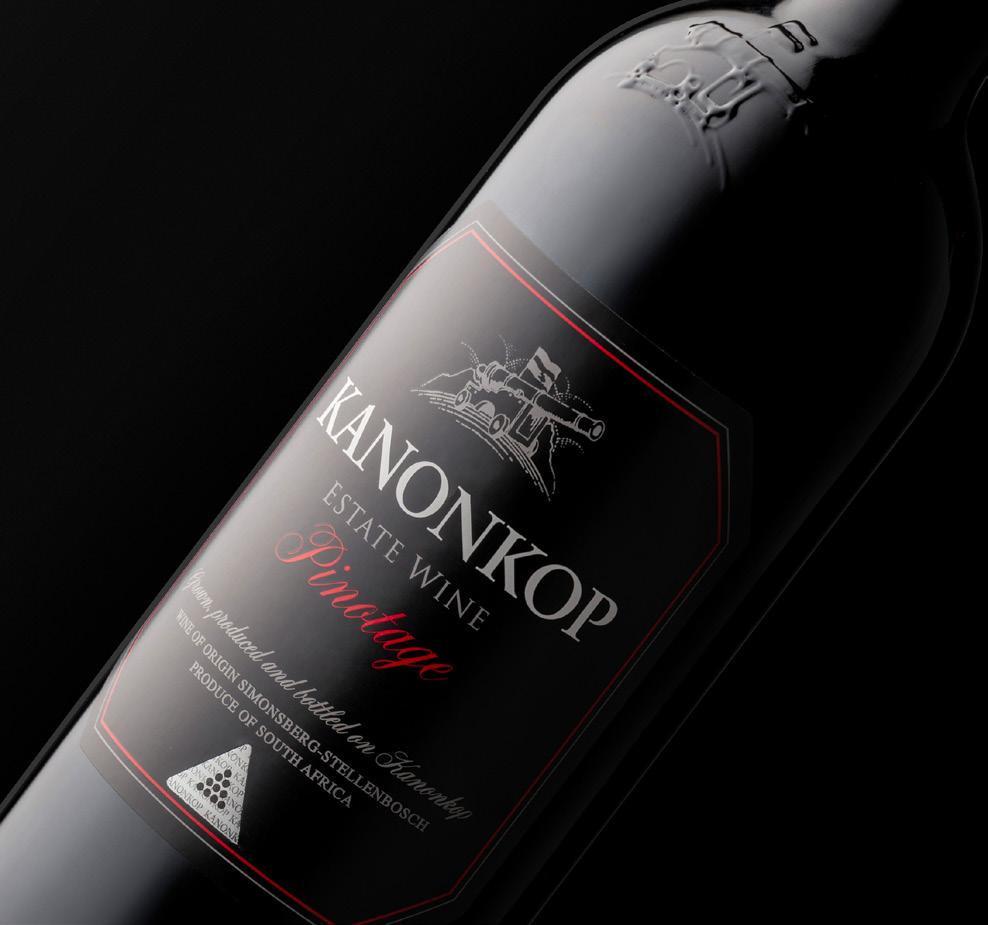
52 | Issue 1 | www.forerunner.co.za | FORERUNNER
recover from the severe drought the Cape winelands had been experiencing since 2014. And yet, the adage of less being more held firm, and this wine displays remarkable vigour and freshness, and with energy and vitality that complement the wine’s characteristic plush elegance.
Abrie Beeslaar, Kanonkop’s cellarmaster who has presided over each of the Black Label vintages, says this year’s release has been characterised by trying conditions experienced in the old vineyard leading up to the 2019 harvest.
“Although the Cape drought ended in 2018, the vintage of 2019 still saw the vines struggling to reach a state of normality due to the lack of water they had endured since the drought began,” says Beeslaar. “The unirrigated vineyard from which the Black Label is exclusively made was 66 years old at the time of harvest and gave us an understandably meagre yield of 2.8 tons per hectare. But what we got, was enormous fruit concentration. This just goes to show how well this old vineyard handles the curve-balls nature has been throwing at it for over six decades, as well as underscoring the non-negotiable suitability of Pinotage planted in Kanonkop terroir.”
Beeslaar says that despite the hot summer days leading up to harvest days, night-temperatures were refreshingly low, allowing the grapes to regain the freshness lost due to the energy-sapping heat of the long summer afternoons.
“Berries were smaller than usual as the vines dedicated their minimal reserves to smaller growing units, resulting in juice of intensity and concentration, yet broad and balanced with sumptuous flavours and a heady aroma,” he says.
“During crushing and fermenting in open concrete tanks those aromas caused by the grapes dedicated to the Black Label Pinotage were heady and overpowering. We then already knew this vintage was going to be characterised by a wine with fruit, spice and plushness.
“Tasting the wine on bottling after 18 months in new oak, as per usual, it was immediately noticeable how different the wine is to the 2018 Black Label, which originates from the same vineyards and undergoes the same winemaking regimen,” he says. “While 2018 is plush and almost decadent with its velvet softness, the 2019 release has a lively freshness and a zesty expression of dark fruit. Collectors of Kanonkop Black Label Pinotage who have been buying this wine each year will definitely find that it stands-out due to this vivid expression of berry, forest floor and earthy flavours.”
Kanonkop owner Johann Krige says that demand for the Kanonkop Black Label has outstripped all expectations since the first 2006 vintage.

“Year-by-year the response to the Black Label release grows,” he says. “I think this is not only due to the image of Kanonkop and its reputation for Pinotage, but also as a result of the astounding critical reception the Black Label receives annually from local and international wine experts. One does not set about making a cult wine – it is a status bestowed upon you. After 13 years in the market, however, I can confidently say that Kanonkop Black Label Pinotage has reached cult-status, and judging once again from this year’s release, it is a status the wine deserves.”
Krige says that despite the unique old vineyard planted on Kanonkop’s famous soils of decomposed granite and Hutton, the estate ethos of simple, practical old-school winemaking results in wine quality as well as giving it that extra factor which money cannot buy: heritage and tradition.
“Each year’s Kanonkop Black Label is made to a tried-andtested method based on simplicity and minimum intervention, says Krige. “The fermenting juice is manually punched through and removed from the skins after four days, with malolactic fermentation commencing in stainless steel tanks before being completed in new French oak barrels.”
Each wine is individually numbered and labelled with a hologram to ensure authenticity and priced at R2,000 incl. Some 6,470 bottles were made from the 2019 vintage.
The wines are available exclusively from the following outlets:
• The Wade Bales Wine Society, tel. +27 (0)21-7942151
• Wine Cellar, tel. +27 (0)21-448-4105
• Port2Port, tel +27 (0)21-422-1872
From the 8th of November the wine will be available directly from the Kanonkop Estate by contacting Deidre@kanonkop.co.za.
THE SPOTLIGHT FORERUNNER | www.forerunner.co.za | Issue 1 | 53
Mukwa River Lodge
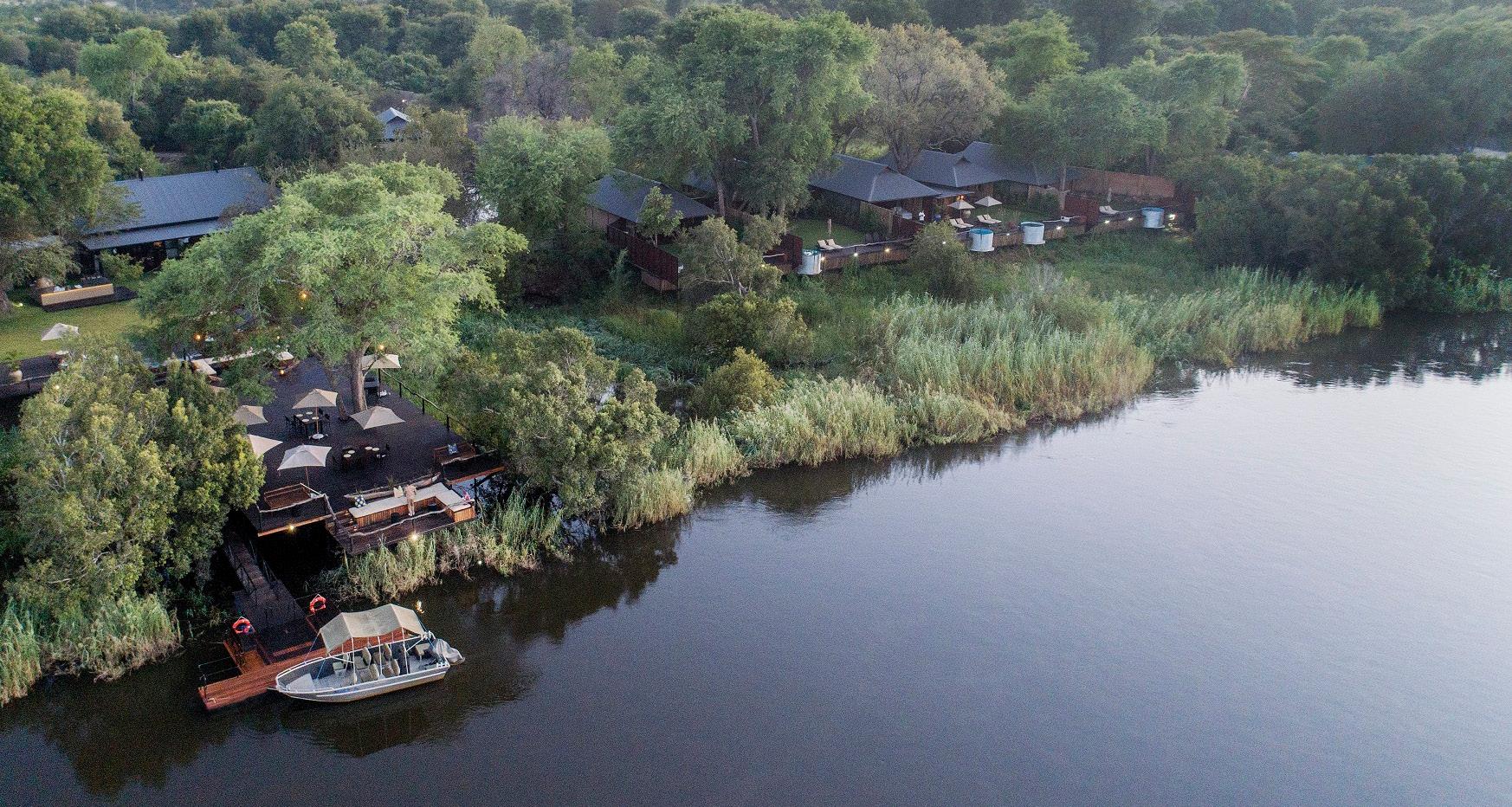
Mukwa River Lodge is a brand-new luxury African bush lodge that will pamper you with intimate exclusivity while also exposing you to the real, adventurous heart of Africa – all on the banks of the mighty Zambezi River in Zambia. The lodge recently opened its doors here, a 28-minute drive from Livingstone Airport and just 10km upriver from the thundering, smoking white waters of the magnificent Victoria Falls, one of the seven natural wonders of the world.
This exquisite boutique property has been built to blend easily with its natural surroundings and to create a truly unique experience for its guests. The original surrounding fauna and flora is part of the deal. Anyone familiar with The Residence in Houghton, Johannesburg, or Camp Ndlovu in the Welgevonden Game Reserve in the Waterberg in Limpopo, will immediately recognise the same meticulous attention paid to detail and service in this new sister property.
After five years of painstaking development, the newly launched finished product is exclusive and intimate, accommodating only 14 guests in six spacious, free-standing suites, including one 2-bedroom family suite. The lodge is seamlessly integrated into the lush, natural environment along the river.
Constructed around steel structures with glass and natural materials and decorated with local art, crafts and custommade furnishings, it is designed with comfort, sustainability and understated luxury in mind. All suites have private decks with double outdoor showers and a bath, pool loungers and
dining areas, as well as plunge pools with spectacular river or island waterway views.
Promising a culinary encounter to remember, Mukwa serves locally sourced and produced dishes, complemented by an excellent wine list. Chickens are kept on a dedicated site within the property to provide fresh eggs daily. The kitchen garden produces herbs, fruit and vegetables, and other fresh produce is sourced from local farms and the surrounding community. Mukwa River Lodge aims to preserve wildlife and local culture through community education initiatives and employment opportunities, wildlife conservation and sustainable practices.
Even as the new kid on the block, Mukwa River Lodge was voted the Best Relaxation Retreat in Africa in the 2022 Haute Grandeur Global Hotel Awards. The lodge offers sweeping views across the river into the Zambezi National Park, providing game viewing opportunities from its sprawling decks when animals come down to drink at the river.
Guests are encouraged to relax and embrace the luxury whilst immersing themselves in nature. The lodge’s gym also boasts views of the surrounding greenery, whilst the spa offers restorative treatments influenced by the indigenous products and culture native to the area. Or you may choose to take part in animal tracking, walking through the bush, viewing animals from the river on the lodge’s boat and immersing yourself in the surrounding river fauna.
Just imagine, after a hard day’s game viewing in specially equipped vehicles manned by knowledgeable guides, or a breathtaking guided game walk, or a canoe adventure
54 | Issue 1 | www.forerunner.co.za | FORERUNNER
along the island waterways of this iconic river, you relax on your deck with sundowners and snacks while watching a family of elephants frolicking close by in the river, as a vast colony of birds provide background music as they settle into the surrounding trees for the night. Or you could opt for sundowners on the lodge’s river boat while watching wildlife on the shore, as the setting sun sets the sky on fire.

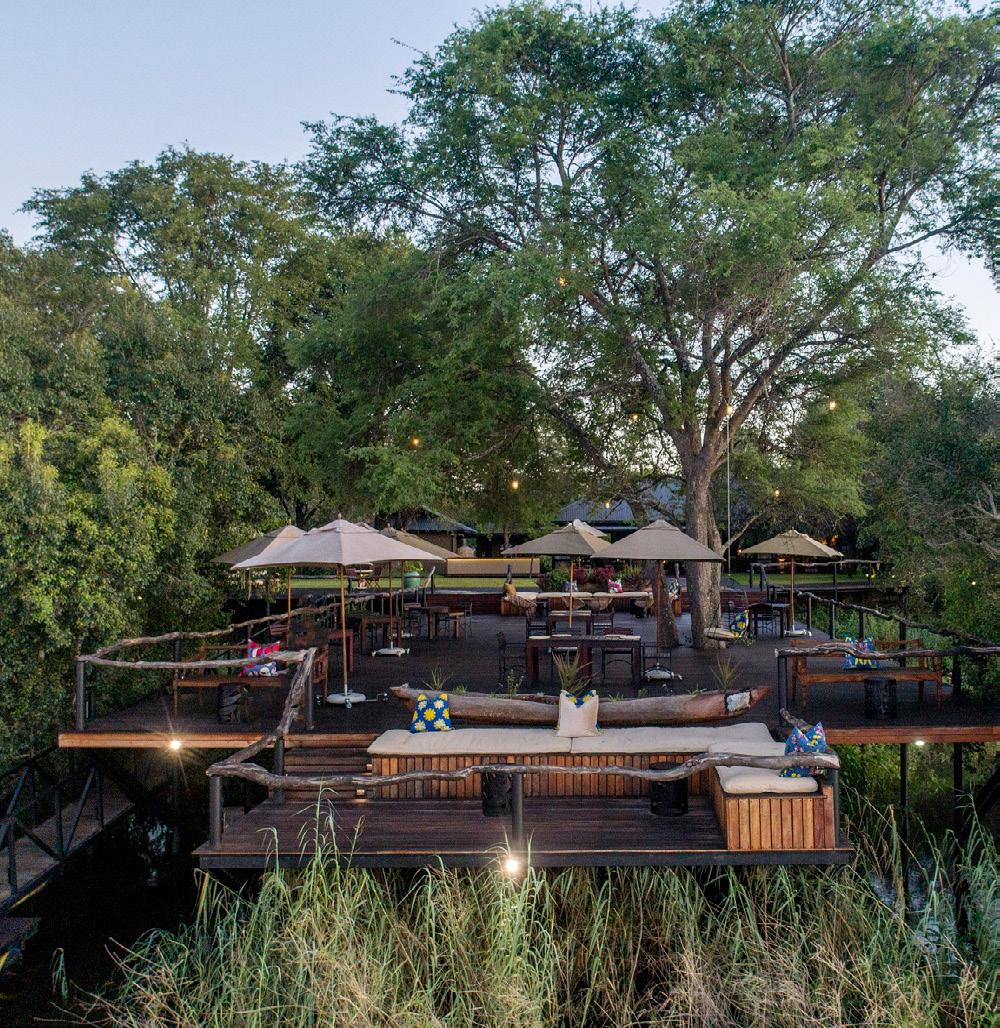
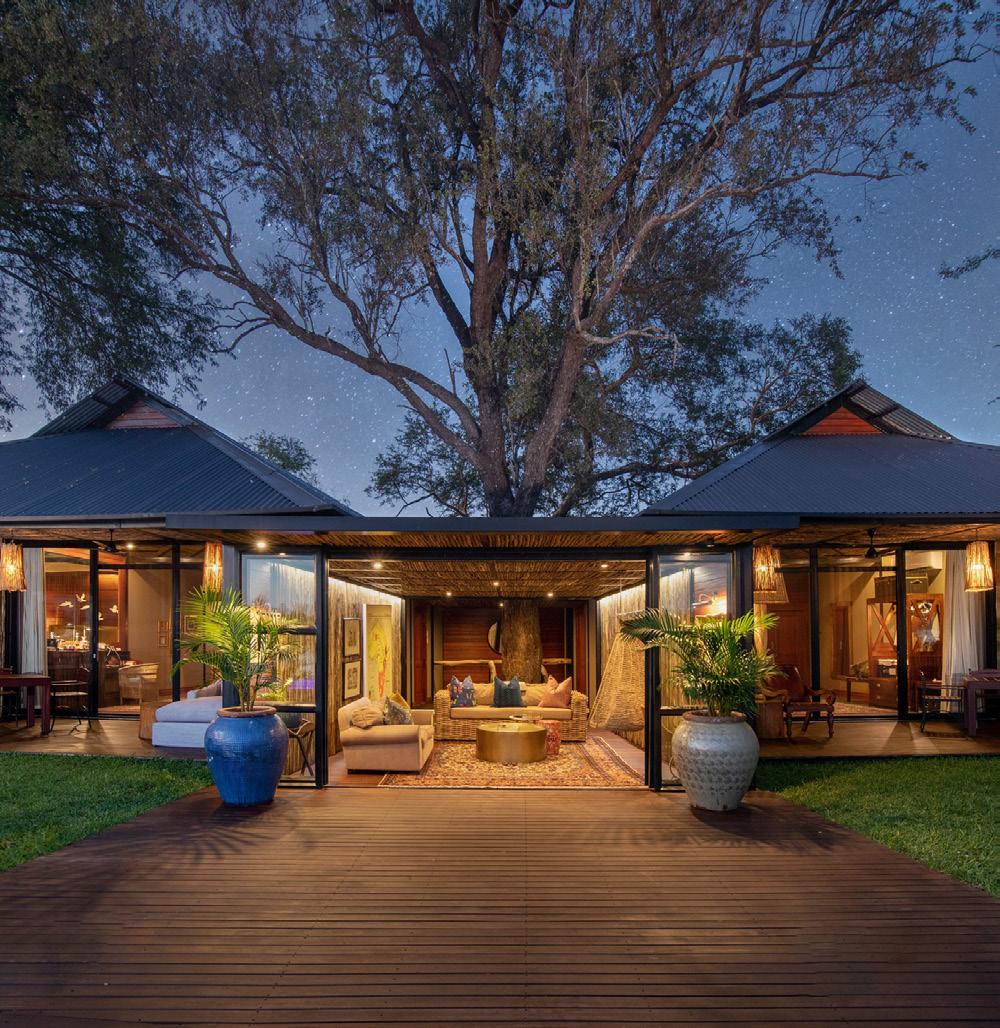
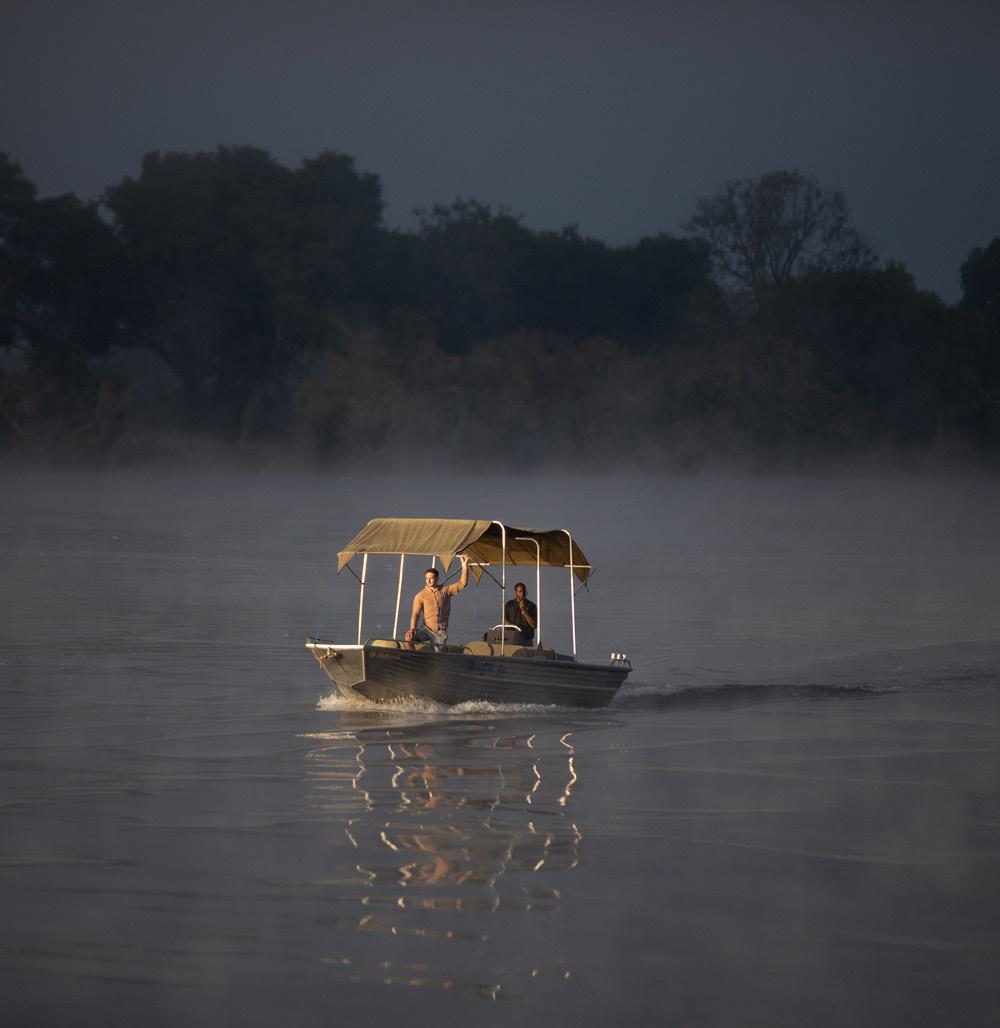
After an exquisite dinner you settle down for the night and drift off to sleep to the sounds of the jungle, with lions roaring nearby and the waters of the river rushing by. This is sheer paradise.
Contact details
Web https://theresidenceportfolio.co.za/homemukwa.html
Tel +260 21 332 5329
Email mukwa@theresidenceportfolio.co.za
Instagram https://www.instagram.com/ mukwariverlodge/
Facebook https://www.facebook.com/search/ top?q=mukwa%20river%20lodge
THE SPOTLIGHT FORERUNNER | www.forerunner.co.za | Issue 1 | 55
ENVIRONMENTAL, SOCIAL AND GOVERNANCE




ESG has seen explosive growth over the last few years. But what is it? And why does it matter? Broadly speaking ESG or Environmental, Social and Governance encompasses the non-financial risks and opportunities present in a company’s every day operation. From investors to employees, local communities to national and international regulators, stakeholders are interested in and want transparency on the potential impact of these non-financial risks and opportunities and how these are being managed and realised.
What is driving interest?


There are a range of factors at play driving stakeholder interest. The Covid-19 pandemic for example demonstrated and reminded stakeholders of the importance of resilience and long-term sustainability over short term profits. Alongside this resurgence of long term thinking and sustainability in the investment
decision making process, the impact of climate change no longer being debated, instead impacts both physical and financial are being felt. Extreme weather events such as the floods in KwaZulu Natal earlier this year clearly demonstrated the systemic risk climate change poses. In the face of this, regulators and governments are racing to ensure companies both understand and clearly disclose the actual and potential impacts of climate-related risks on their operations and their future strategies.
Alongside government and regulatory pressure there is also increased pressure and expectation from investors for information on ESG aspects. This is both driven by the risks noted above and a growing body of evidence which indicates that companies with strong ESG credentials and performance generally outperform their peers.
Providing environmental, social and sustainability solutions to the resources, infrastructure, energy and agriculture sectors globally.
info@digbywells.com | www.digbywells.com
And finally, there is economic opportunity in in managing risk and identifying opportunity. Focussing on companies that take advantage of rapidly expanding markets, global megatrends (such as the need for tech-metals and the move to renewables) and respond to customer demands is not philanthropy, it’s just good business.
What does ESG mean for mining?
Mining as an industry, has been scrutinised in the past and as such has long experience in identifying, considering and managing environmental and social impacts. Most jurisdictions have strict licencing and permitting processes that consider social and environmental impacts and require significant studies and planning. However, management plans and mitigation strategies are often developed for and restricted to site level. These processes ensure permits are obtained, laws complied with, and of course production proceeds. However they are rarely integrated into long term management and strategic business thinking which often results in key learnings or risks not being integrated at a higher level within the organisation.
Integration of environmental and social aspects into organisational and strategic thinking is now a standard market expectation. An example of this is the requirements of the Taskforce for Climate-related Financial Disclosures (TCFD), which asks companies to disclose against four key pillars; Governance, Strategy, Risk Management, and Metrics and Targets. Disclosure in line with the requirements of TCFD is or will soon become mandatory for all G7 countries, and is strongly supported in Australia and South Africa due to the decision useful and forward looking information it provides to stakeholders.
Alongside regulatory pushes climate change and the green transition is creating massive opportunity for mining particularly for tech metals and renewables. At the same time technology within industry itself has advanced to reduce its emissions and increase productivity. An excellent example is the Chrysos
PhotonAssay developed by MSALABS, which uses x-tray technology rather than energy intensive traditional fire assay methods reducing energy and thereby carbon emissions while producing a faster assay results.
More than just climate concerns
Mining, as an industry, rightly receives significant attention for its impact on the environment. However, the massive social impact of mining operations, both for local communities and host countries is often overlooked or undervalued by stakeholders, particularly investors and possibly under reported by miners. The industry needs to get better at showcasing the positive social impact of responsible mining. The sector has a vital role to play in the achievement of the United Nations Sustainable Development Goals, both in terms of supplying the commodities needed for the green transition but also, equally and if not more importantly, through the social value responsible mining provides. This includes taxes revenues and royalties to government, development and construction of vital infrastructure, the provision of jobs and training, the development of local supply chains and community investment initiatives to name a few.
Mining is arguably at the forefront of ESG integration by virtue of continued industry scrutiny, but the ESG landscape is fluid and keeping track of trends is not only essential in the eyes of stakeholders but also provides significant positive benefits to business.
With more than 25 years experience the Digby Wells team of integrated specialists can help develop a robust approach to ESG management aspects from site level management through to strategic advisory, market trends and expectations, and best practice disclosure.
Sarah Cooper, Digby Wells Environmental Group Sustainability Manager.
Info@digbywells.com
| www.digbywells.com EDITORIAL SUPPLIED
By Moses Mudzwiti

Will President Cyril Ramaphosa win a second term?
The stakes are high for President Cyril Ramaphosa who is expected to stand for re-election as ANC president at the ANC national conference in December, which could also secure him a second term as president of South Africa if the ANC remains in power after 2024. But first he will have to overcome the possible negative consequences of the ‘stolen dollars’ scandal
at his Phala Phala game farm, and secondly, ward of an attack from his opponents in the so-called RET Faction who will try to replace him at the conference with one of their own. We asked veteran journalist and political commentator Moses Mudzwiti, Editor of The Bulrushes, whether he thinks Ramaphosa will win a second term.
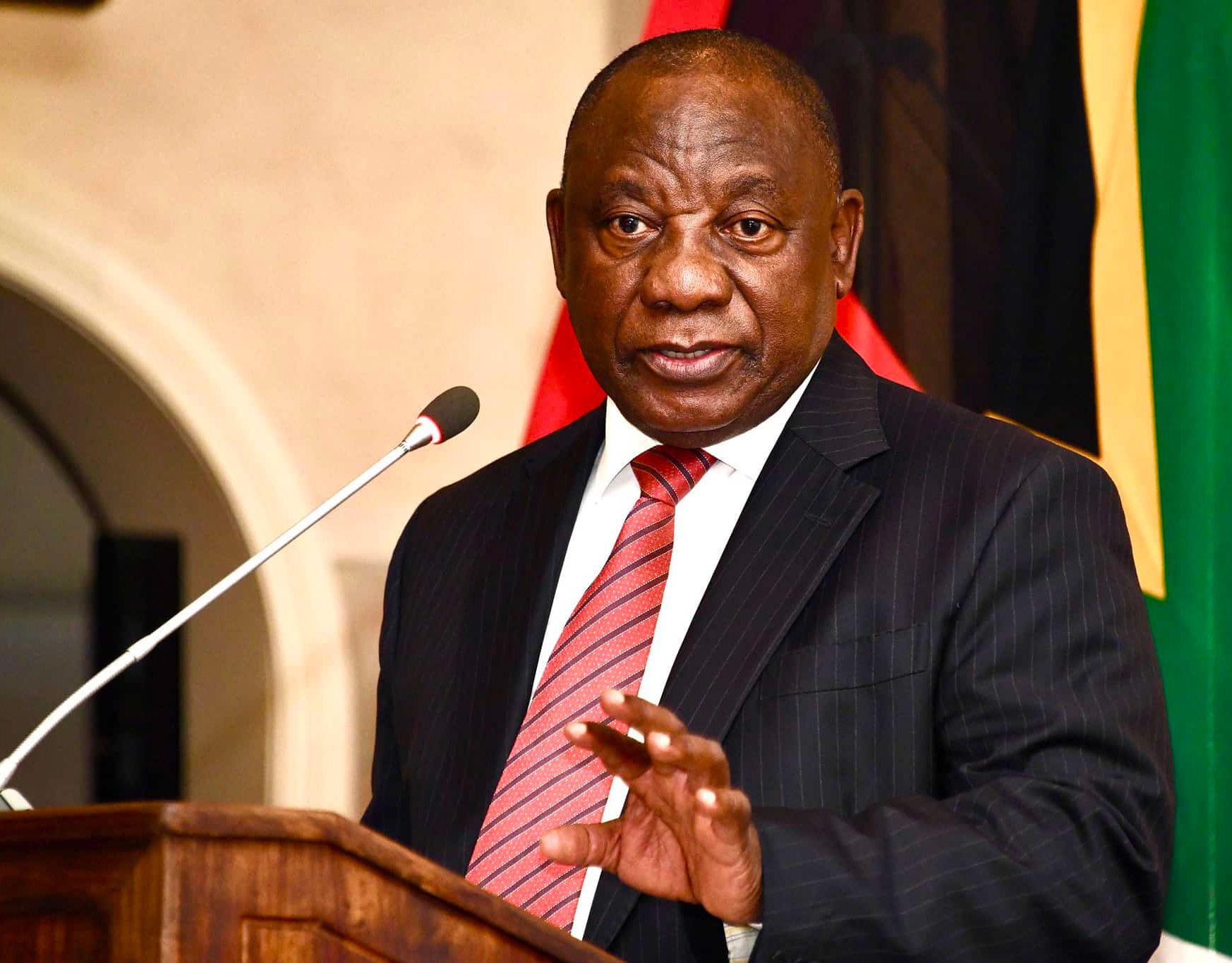
58 | Issue 1 | www.forerunner.co.za | FORERUNNER
Aweek in politics is a long time. So many things can happen.
In South Africa the pitfalls - real or imagined - are so many a week in politics can feel like a century.
Perhaps it is no surprise that since the advent of democracy, no president in South Africa has completed their second term in office.
Nelson Mandela declined a second term, Thabo Mbeki was forced out by party members in Polokwane, Kgalema Motlanthe was a stand-in president (25 September 2008 to 9 May 2009) and Jacob Zuma resigned under pressure before he could complete his second term.
Lately, murmurs of discontent over Ramaphosa’s leadership have grown louder from detractors within the African National Congress (ANC), which has a national conference in December, where new party leaders will be elected.
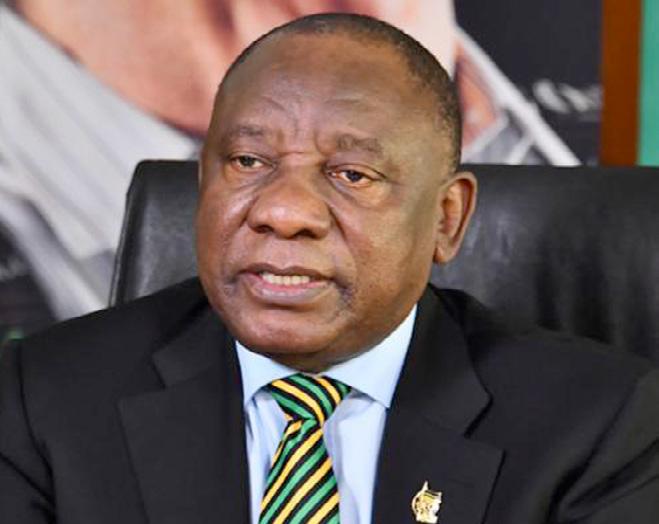
No doubt, Ramaphosa has traversed a rocky road that saw him successfully galvanise the nation to tackle the Covid-19 pandemic and the completion of the state capture inquiry.
But there have also been difficulties - Ramaphosa could not be drawn to condemn his BRICS ally, Vladimir Putin, who is involved in a special military operation in Ukraine.
A decade on, Ramaphosa has failed to shake off accusations - despite being cleared by the Farlam Commission - that he may have somehow contributed to the police fatally shooting 34 striking mineworkers at Marikana.
Every year in August - without failthe Marikana massacre accusations against Ramaphosa are resurrected, re-examined, and reburied again.
The accusation was there when Ramaphosa secured his first term after
serving out the remainder of Zuma’s term. It’s anyone’s guess how much weight will be attached to massacre accusations in future elections.
Trying to predict Ramaphosa’s chances of a second term is not so easy.
Firstly, he has never publicly declared any intention of taking on a second term.
Without access to Ramaphosa’s palms, the art of Palmistry - in which the future is predicted based on lines and mounts in the hand - is not possible.
What is evident though, is that every time the lights go out, social media, radio, television, and print media create a groundswell of blame that inevitably ends up at Ramaphosa’s door.
He is the first one to be blamed for rising crime, illegal immigrants, gender-based violence, joblessness, corruption, inability to pay salaries on time at the ANC, the jailing of former president Jacob Zuma for contempt of court, filthy hospitals, dysfunctional schools, and many other ills that plague South Africa.
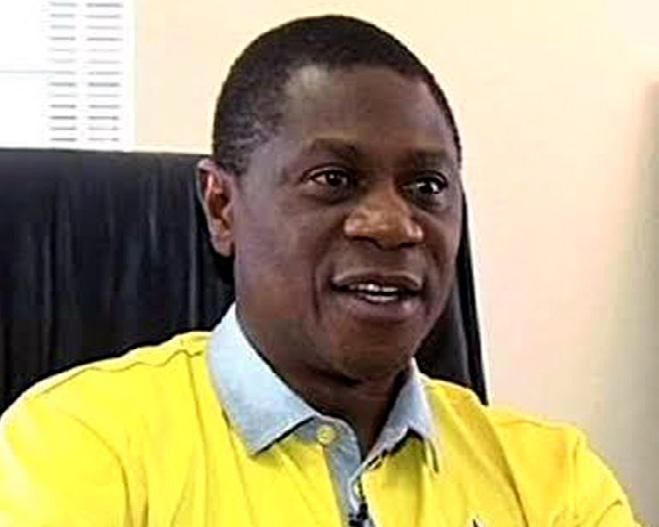
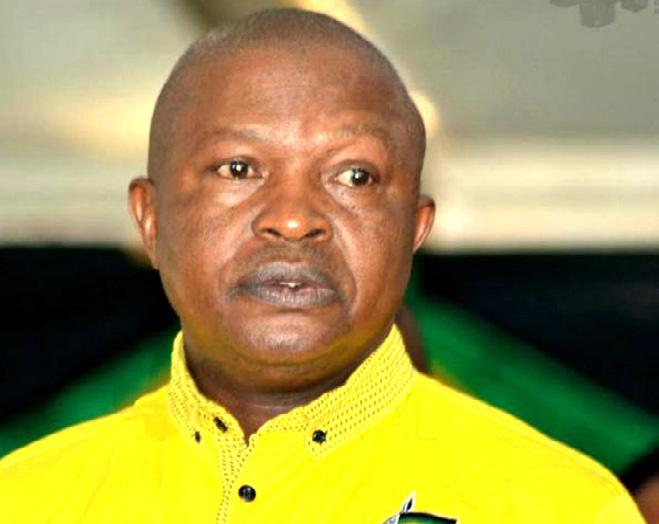
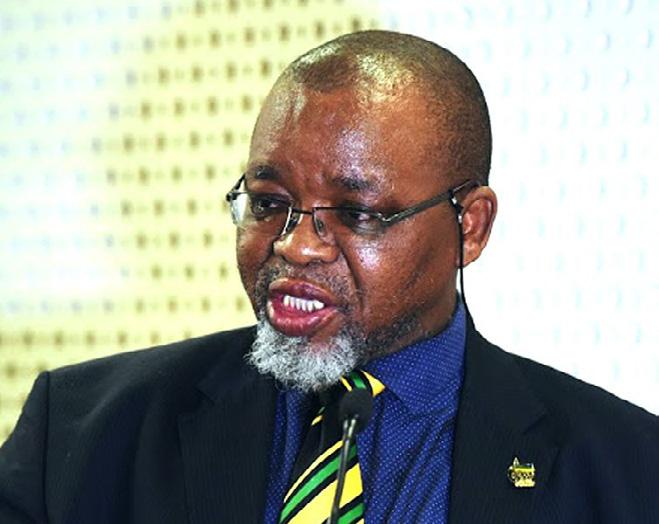
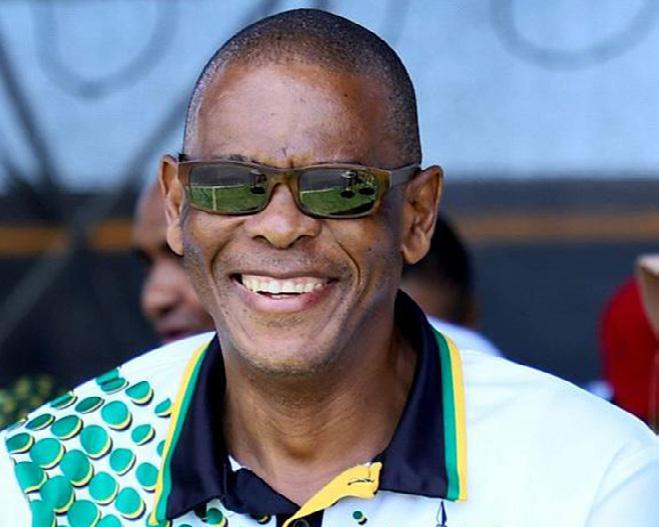
No matter how high the volume of disgruntlement rises, not everyone gets to choose the leader of the ANC and by extension president of the country.
The last time there was a leadership contest in the ANC, the party of Madiba had less than a million members in a population of about 60 million.
Those that get to decide the party leaders at the conference are even less - just a few thousand.
If one is not a Sangoma, predicting Ramaphosa’s political fortunes is like correctly guessing six winning numbers on the lotto.
It gets even more complicated when one relies on the media to gauge Ramaphosa’s popularity or lack of it
POLITICS FORERUNNER | www.forerunner.co.za | Issue 1 | 59
within the ANC hierarchy, especially the ones with the vote.
Not so long ago, the former South Africa spy chief Arthur Fraser accused 68-year-old Ramaphosa of kidnapping and bribery in the wake of a burglary on his Phala Phala farm in 2020.
Fraser told anyone who cared to listen that he laid a complaint on the matter at the Rosebank Police Station in Johannesburg.
The former State Security Agency head honcho (between 2016 and 2018) even claimed he handed photographs, bank account details, and video footage over to the police.
Ramaphosa, who pegged his presidency on fighting graft and renewing the ANC, has since admitted that a robbery took place at his farm while he was away on government business.
The allegations related to the Phala Phala burglary have been relentless.
At the time of writing, Ramaphosa, who insists he did nothing wrong and that the matter should be left to law enforcement agencies to deal with, was
likely to face questions on the Phala Phala matter in Parliament.
There is also the matter of the noconfidence motion. In August, seven opposition parties announced they would bring a motion of no confidence in Ramaphosa.
Two months earlier, the African Transformation Movement tabled a section 89 motion to impeach the president on charges of breaching the constitution in matters linked to the burglary at his Phala Phala farm.
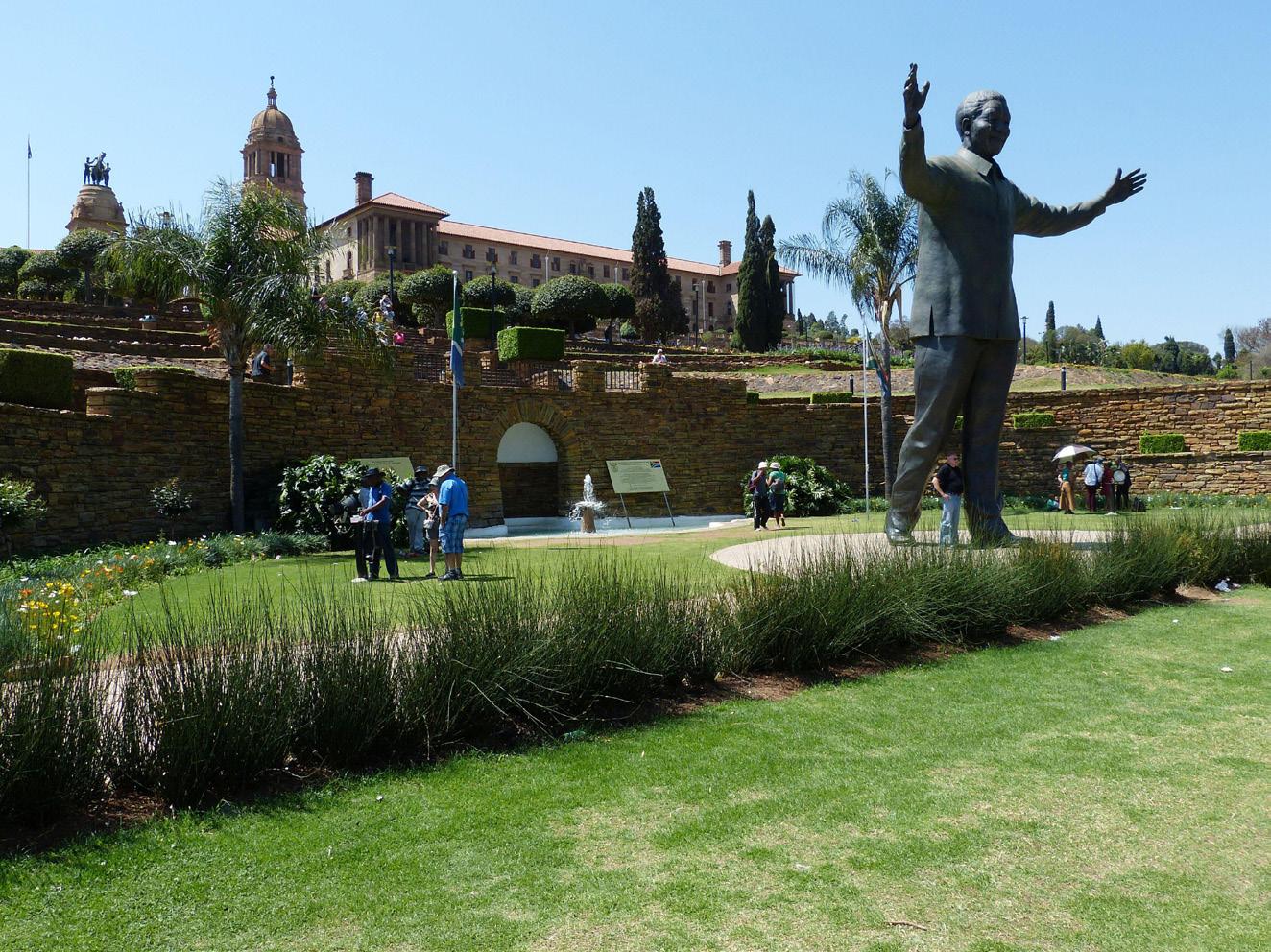
However, considering the ANC’s dominance in Parliament, it is unlikely the no-confidence motion in Ramaphosa will pass.
These days political analysts say anything on radio and television.
“The ANC is dead... there is no leadership in this country... the ANC opened the borders so illegal foreigners can come to take jobs and commit crimes in South Africa... ANC politicians are thieves,” they frequently say without being pressed for evidence.
Few of them remember that apartheid
was a system that survived on hatred for the other and its ugly tentacles remain evident today.
After the hated foreign immigrants have been hounded out of South Africa, the need to hate might not go away and will have to be directed elsewhere by those who thrive on dividing the populace.
But that hatred does not necessarily translate into a loss of popularity for any leader.
For now, Ramaphosa remains firmly in control of the ANC and the country. Predicting the fate of a man whose totem is an elephant remains a gamble. Perhaps, it’s time to take advice from Kenny Rogers when he sings:
“If You’re
boy You gotta learn to play it right You’ve got to know When to hold ‘em Know when to fold ‘em Know when to walk away Know when to run”
the
Our guest writer is Johannesburgbased veteran journalist Moses Mudzwiti. He is the founder and Editor of the online news site, The Bulrushes (www.thebulrushes.com). Moses is also Associate Editor at Techfinancials and has worked in senior editorial positions for the past three decades at the African News Agency (ANA), the Times (Daily), Sowetan, The Citizen, The Cape Times, The Star and Business Report newspapers. Many young journalists know him as a mentor and trainer who is an advocate of multi-media journalism.
gonna play
game,
60 | Issue 1 | www.forerunner.co.za | FORERUNNER
Commonly deployed underground mobile mining equipment –such as load, haul dump machines (LHDS) and utility vehicles – is often diesel-fuelled and critical for the production system. Unfortunately, such equipment subsequently compromises underground air quality. Air pollution is caused by solid and liquid particles and certain gases that are suspended in the air, with many of these stemming from underground mobile equipment and other moving machinery exhausts. The underground mining environment is unquestionably harsh. With confined spaces, minimal ventilation and underground vehicle emissions that compromise air quality underground, systems that monitor the surrounding air quality are critical for the health and safety of employees, as well as the environment.
HOW IT ALL STARTED
According to Deon Du Preez, founder and owner at Dispro Tech SA, the Mpumalanga province, and parts of Ekhurhuleni have been identified as potential hotspots for poor air quality. These conditions – as well as noting the black smoke emitted from vehicles from time to time – motivated Du Preez to look into solutions to these concerns.



Starting up was not easy and there were many challenges, including deals falling through; however, Du Preez’s persistence and determination eventually led to identifying a business opportunity that would see him improving air quality and protecting the environment as well.
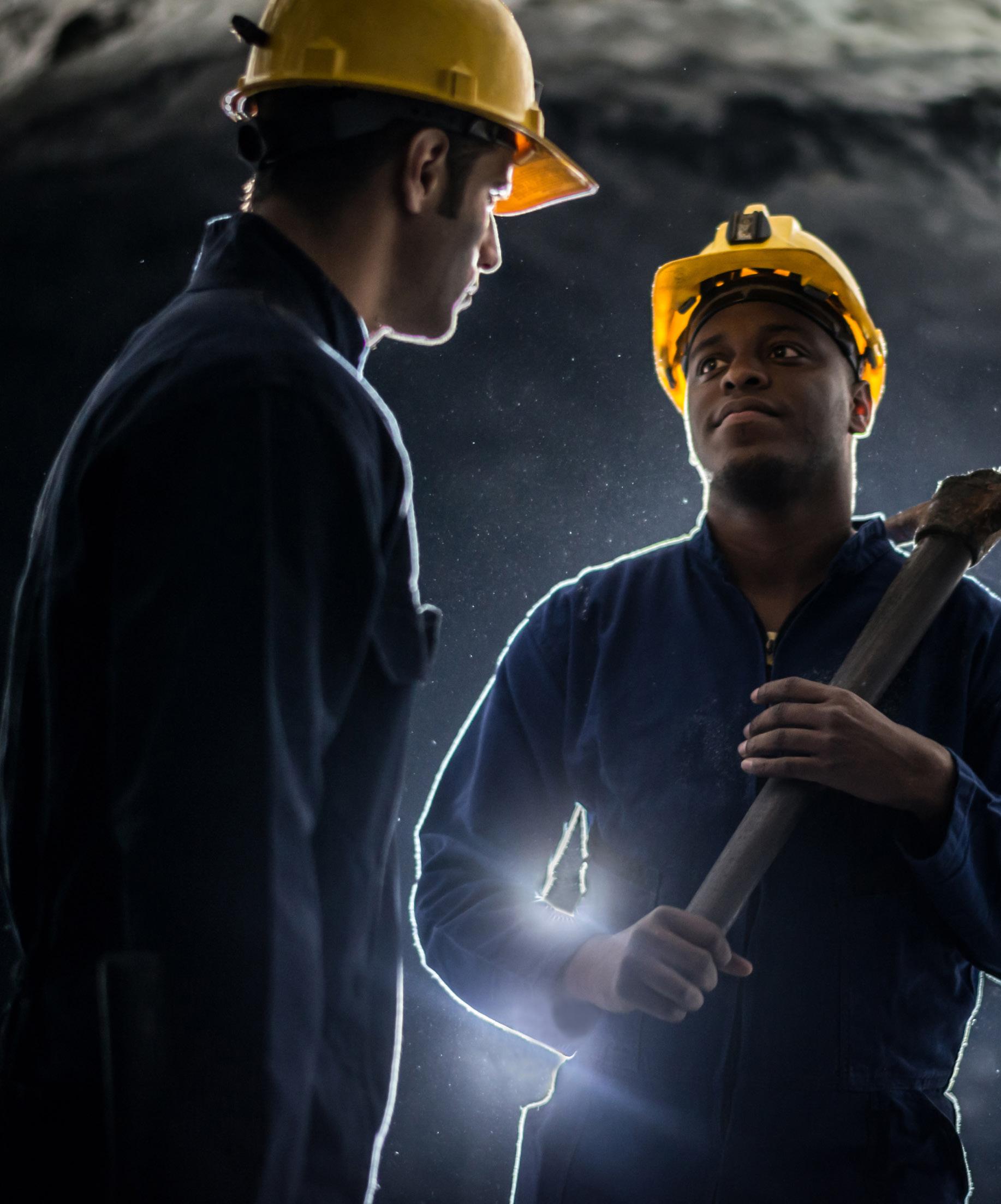
He proceeded to do research and found that, in addition to affecting the environment, diesel particulate matter (DPM) also had health-related consequences, affecting the lungs if inhaled. In addition, Du Preeze’s findings showed it was these emissions that resulted in hefty costs during vehicle maintenance. He also identified the need for a service offering in the mining industry, among others.
WORLD-CLASS TECHNOLOGY
“I asked myself, why is it not possible to measure diesel particular matter directly from exhaust in its raw undiluted condition?” Du Preez ponders. This question was the motivation for him to find partners to collaborate with in establishing an answer. Working together with the CSIR, Sasol, Anglo, Deutz Diesel Power and Saxon Junkalor, among others. Dispro Tech SA introduced a world-first technology that measures directly from an exhaust stack. “We ran a programme to see how accurate the equipment was,” explains Du Preez. A brief data sampling and evaluation can provide users with critical early-warning information pinpointing internal engine problems based on DPM, smoke density and opacity, and six-gas evaluation of the results, which also includes the correct diagnosis for diesel engines that are in a good and acceptable condition to receive such an exhaust aftermarket treatment system, such as a diesel particulate filter (DPF).
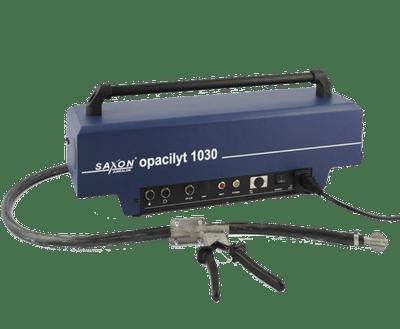
FOR MORE INFORMATION, CONTACT: DISPRO TECH SA: Telephone: +27 (0) 13 243 5753, +27 (0) 13243 1851 | Website: www.dispro.co.za
The Joburg Indaba will be back in person this year at the Inanda Club, Johannesburg on 5th & 6th October. It is a highly influential mining industry platform, renowned for its straight talk, refreshing insights and collaborative atmosphere. Since its inception, the Joburg Indaba has developed a reputation as a highly regarded gathering that unpacks a wide range of critical issues affecting all stakeholders in the mining industry.

This year celebrating its 10th Anniversary edition, the Joburg Indaba brings together CEOs and senior representatives from the major mining houses, investors, Government, parastatals, organized labour and experts from legal and advisory firms.

Plus, the Gala Dinner returns on 4th October, where we will be inducting new members into the SA Mining Hall of Fame!



M&D For sponsorship opportunities please contact us on: sponsorship@resources4africa.com +27 (0) 11 463 7799 // +27 (0) 61 421 9492 // registrations@resources4africa.com // www.joburgindaba.com REGISTER TODAY!
5 – 6 October 2022
us on the website for latest speakers and programme developments www.joburgindaba.com Joburg Indaba 2022 is proudly sponsored by: Lead Sponsor Premium Sponsors Mining Industry Par tners Networking Sponsors Corporate Partner Sponsor
LEAD SPONSOR Follow
LESSONS FROM SAUDI ARABIA
Saudi Arabia has been hailed by the International Monetary Fund and other leading global institutions as the world’s fastest growing economy in 2022 – having recovered quickly from the Covid-19 pandemic and outperforming all economies from the Asian giants to the G7 and all in-between.
By contrast, South Africa is lagging far behind. It is nowhere near the performance of Saudi Arabia or any of a large number of other major or emerging economies. Compared with 51 other nations, South Africa’s recovery has been sluggish, says the IMF, an observation echoed also in a report by Statistics South Africa.
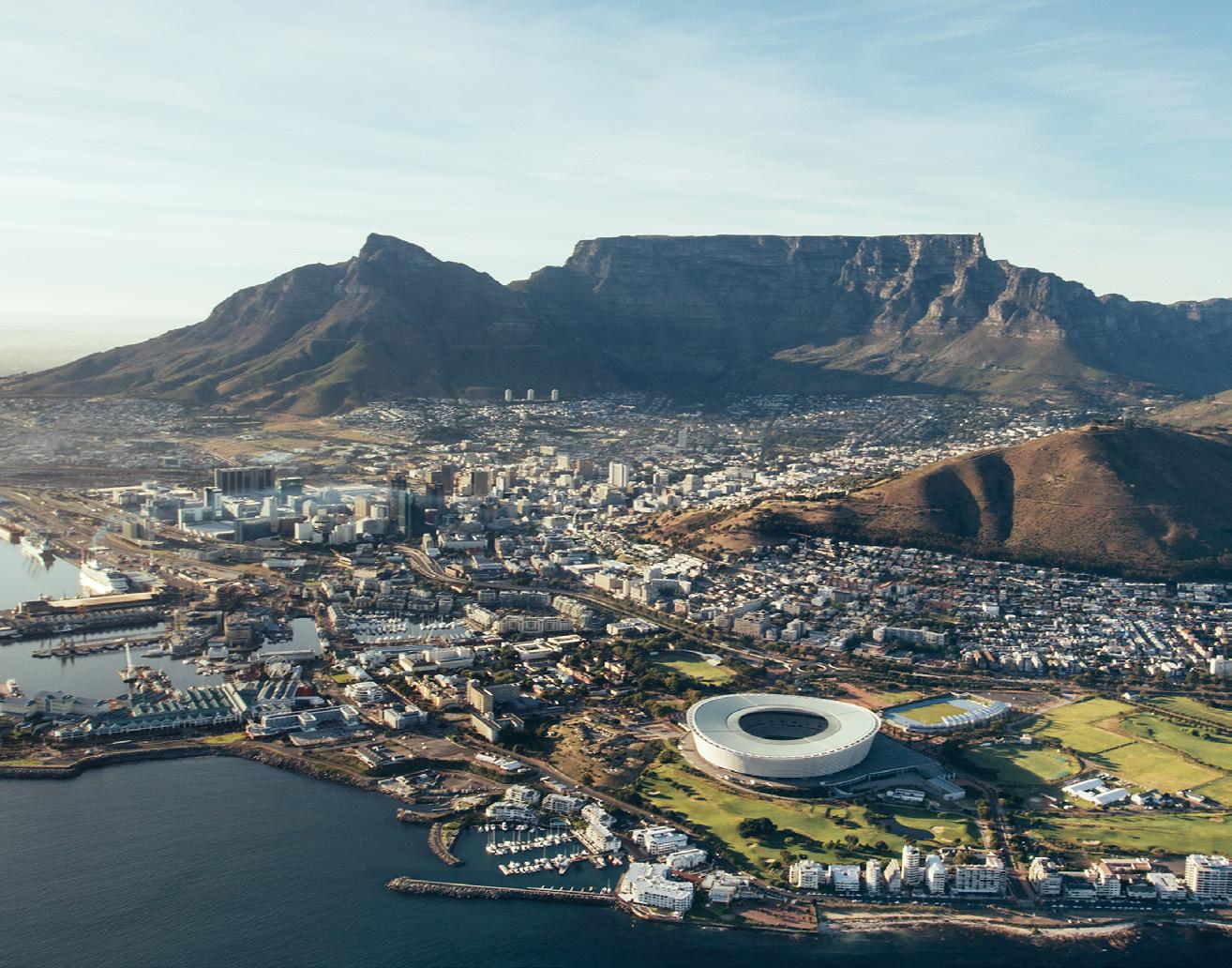
So, what is Saudi Arabia’s secret? There is no magic formula. It’s just getting the basics right, implementing a wide range of reforms to improve and make attractive its business
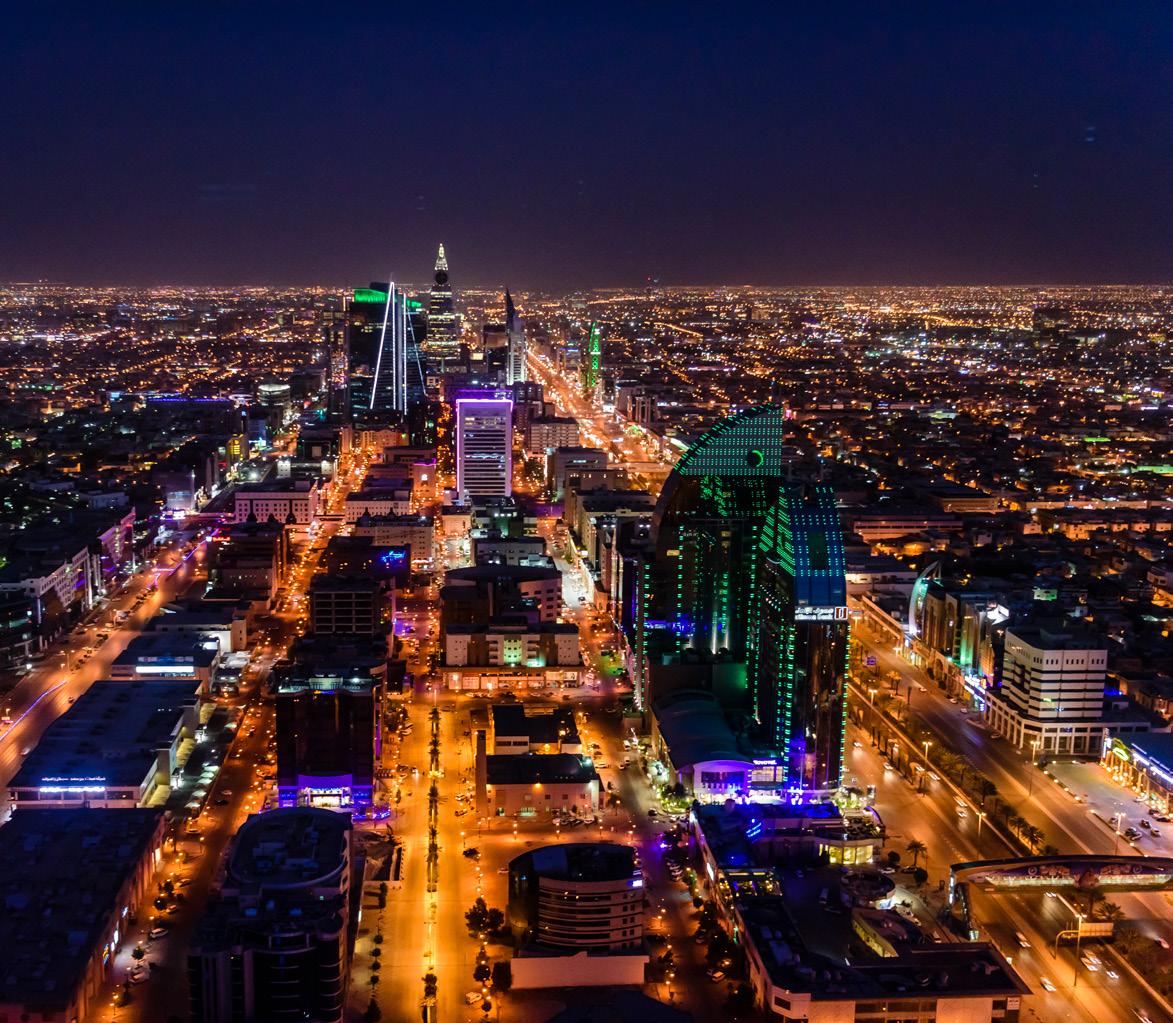
and investment environment, and implementing Saudi’s long-term growth plan called the Vision 2030 strategy. Therein lies a great many lessons for South Africa if it wishes to break out of its economic stranglehold and get President Cyril Ramaphosa’s Economic Reconstruction and Recovery Plan off the ground.
South Africa has been getting many of the basics wrong. It lacks proper structural economic reforms over and above the woefully inadequate ones currently on the table, while its own long-term plan, the National Development Plan 2030, has mostly been gathering dust since 2012.
And international agencies from the IMF to the World Bank and the Organization for Economic Co-operation and Development (OECD), global credit rating agencies,
ECONOMY FORERUNNER | www.forerunner.co.za | Issue 1 | 63
and local business organisations and economists, have all been telling Pretoria this for years… and have suggested appropriate remedies. Such as exactly those remedies that Saudi Arabia implemented.
What Saudi has achieved (compared to South Africa)
• Saudi recovered from the Covid-19 pandemic quicker than most other countries (it has a 72% vaccination rate compared to South Africa’s 32.7% and the global average of 63.3% - South Africa’s economic recovery is lagging).
• This year Saudi Arabia will be the world’s fastestgrowing economy, says the IMF and others – on a list of the 20 major economies Saudi is achieving the fastest GDP growth (South Africa is not in that list but its BRICS partners are.
• Saudi Arabia has significantly outperformed China, India, Indonesia, South Korea, and the G7 countries in 2022 (while South Africa has significantly underperformed against them).
• Real GDP growth is expected to reach 7.5% in 2022, Saudi’s fastest growth rate since 2011 (the IMF projects GDP in South Africa to grow by only 1.8% this year).
• Saudi Arabia has an unemployment rate of around 6.9% (compared to South Africa’s 33.9% in the second quarter of 2022, projected by the IMF to reach 35.2% this year).
• Saudi’s gross public debt in 2022 is projected to be 24.3% down from last year’s 30% of GDP (in October 2020 already the IMF calculated South Africa’s debt to GDP ratio at 82.76% of GDP, while South African government debt accounted for 67.4 % of the country’s nominal GDP in March 2022 and is expected to worsen).
How Saudi got there
In 2022 and beyond, economic growth in Saudi Arabia is expected to remain supported by strong pro-business reforms with key facilitating policies, systems and infrastructure in place. This will facilitate higher levels of domestic and foreign private investment into a wide range of sectors, says the Economist Intelligence Unit (EIU), basing its views on the IMF report.
“Saudi Arabia is taking impressive steps to improve the business environment, attract foreign investment and create private-sector employment. These initiatives, combined with governance and labour market reform, have made it easier to do business (a business can be registered in just three minutes), increased the number of industrial facilities, and raised female participation in the labour force,” says the IMF report.
Saudi Arabia’s economic outlook is strong, says the IMF, and maintaining the Kingdom’s long-term prosperity depends crucially on sustaining the reform momentum. This includes continuing with reforms and diversifying the economy; delinking fiscal policy from oil price fluctuations; liberalising energy prices; improving the business environment further to attract private investment; and continuing with climate adaptation and mitigation efforts.
Saudi’s implementation of its Vision 2030 policies has helped it to diversify and liberalise the economy and thus pave the way to more stable growth, and it will continue doing so. In contrast South Africa has yet to start implementing its NDP 2030 fully and with determination…a decade after it was unveiled.
Of course, the country, economic and political dynamics in Saudi differ substantially from South Africa, and some might say it is like comparing apples with pears. But in essence it boils down to Saudi taking the right steps and implementing structural reforms to achieve a desired result – rapid economic growth – while South Africa is not doing so.
Staff Writer
64 | Issue 1 | www.forerunner.co.za | FORERUNNER
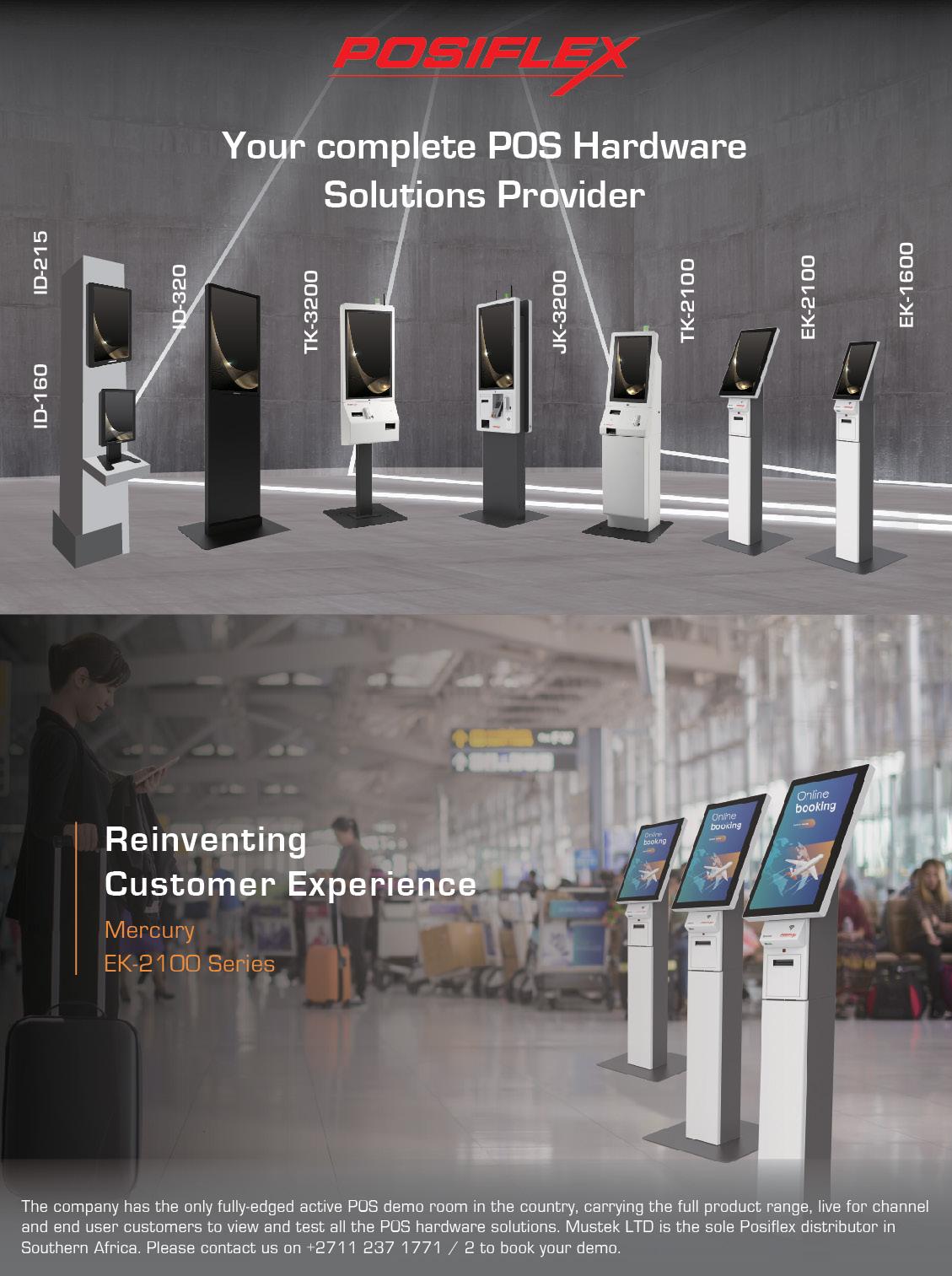
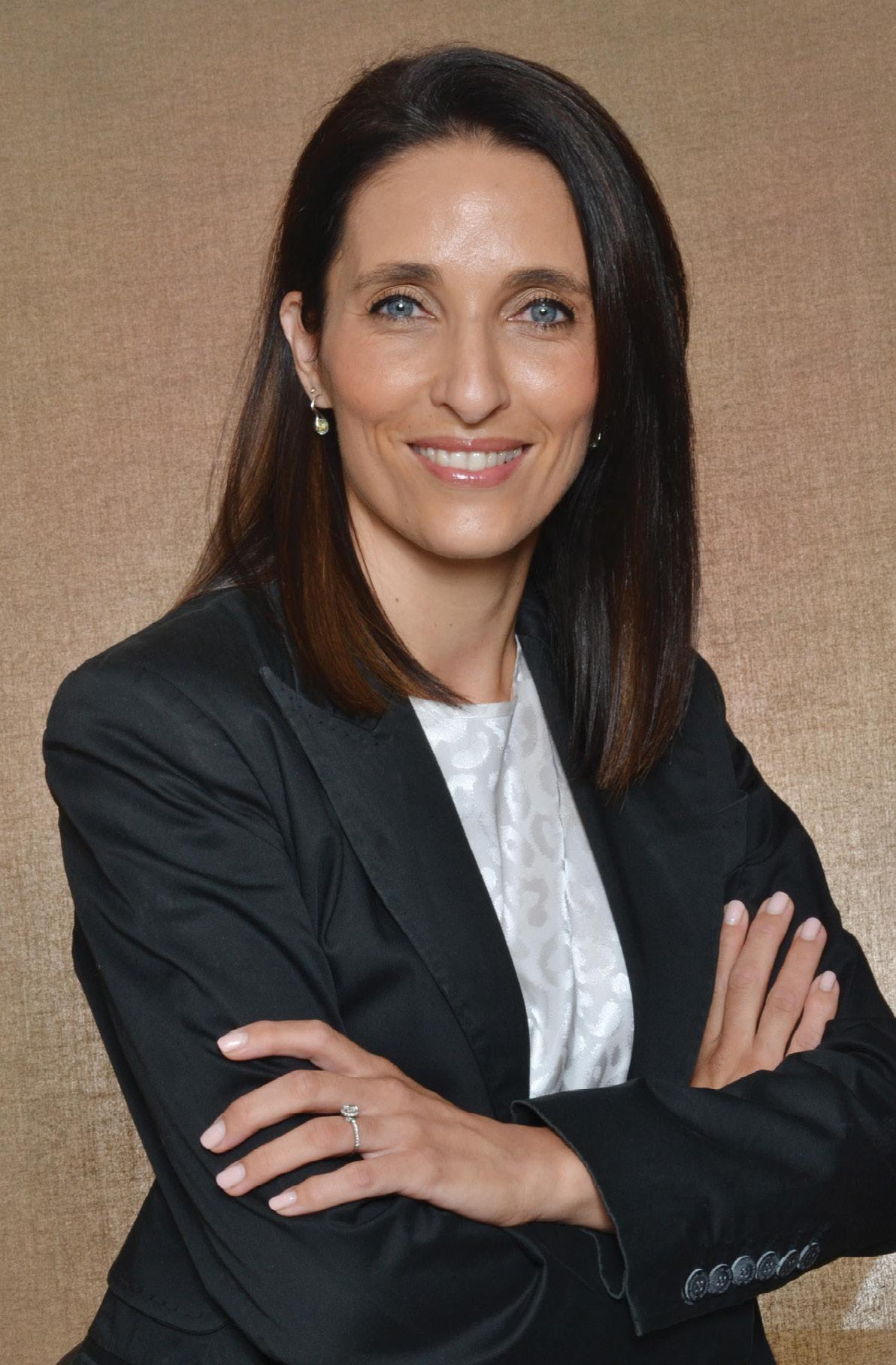


Contact our specialist tax consultant: Carina Fourie (PR0107273) T: (011) 887 4713/4/6 E: carina@orelowitz.co.za www.orelowitz.co.za • Dispute resolution with SARS • Customs and excise • Penalty and interest remission applications • Voluntary disclosure programmes • Deferred payment arrangements • Compromises • Write offs and suspension requests • Transfer pricing • Tax opinions, ruling applications, tax structures • Dispute resolution and engagements with SARS • Tax inquiries • Preservation orders • Search and seizures • Review applications • Third party appointments • Employment Tax Incentive Act issues TAX SERVICES AVAILABLE:
SOLVING THE ELECTRICITY CHALLENGE IS VITAL FOR SOUTH AFRICA’S INVESTMENT DRIVE (WE WILL WORRY LATER ABOUT POWER IN YOUR HOUSE OR BUSINESS OR FOR YOUR ELECTRIC CAR)
Dear Fellow South Africans and Illegal Aliens,
A few days ago, I met with US President Joe Biden in Washington to discuss several issues of concern to both our countries, including peace and security, climate change and food security. I must admit, it was quite a welcome relief getting away for a bit from load shedding and all the problems at Eskom, that is, until Pravin, Gwede and Andre started WhatsApping me non-stop, telling me I should come home. It’s quite irritating. I don’t know what I pay these guys for, but let’s just leave it at that. Anyhow, the moment they put the Queen in her tomb, I got on that plane and here I am. With a new plan to fix Eskom. Yes, another one. How did you like my previous one?
But first, back to Joe and myself. Most importantly, we discussed ways to deepen trade and investment between our two countries. Behind China and the European Union, the United States is South Africa’s third largest trading partner and is the second largest destination of our country’s exports. I did tell Joe, however, that while I appreciate the US doing business with us, he shouldn’t expect me to throw my pal, Vladimir Putin, under the bus. I know we get very little from Russia – they actually take more than what we get from them, and they are chasing a lucrative nuclear power deal with us – but we have been friends for such a long time that it doesn’t really matter. So, I told Joe, never mind the alleged human rights slip-ups and the illegal war – we’ll look the other way and so should he. Who among us world leaders have not been naughty on occasion? And I know that Ukraine was part of the old Soviet Union that we in the ANC and Vlad so loved, but so what. Integrity is not a political thing, you know.
Vlad has always been a good pal. I mean, just look how he took care in Moscow of David Mabuza’s health issues – does anybody know what those are? - and before that he took care of Msholozi’s poisoning scare. And long before that, when Vlad was still a KGB guy stalking CIA people in shady East Berlin, we, the ANC, used to send our best cadres to Moscow to get military training and university degrees. I never could quite understand, though, why our people had to attend the Patrice Lumumba University for Africans – now known as the People’s Friendship University of Russia – which was separate from their own universities. Like they wanted to keep us apart?
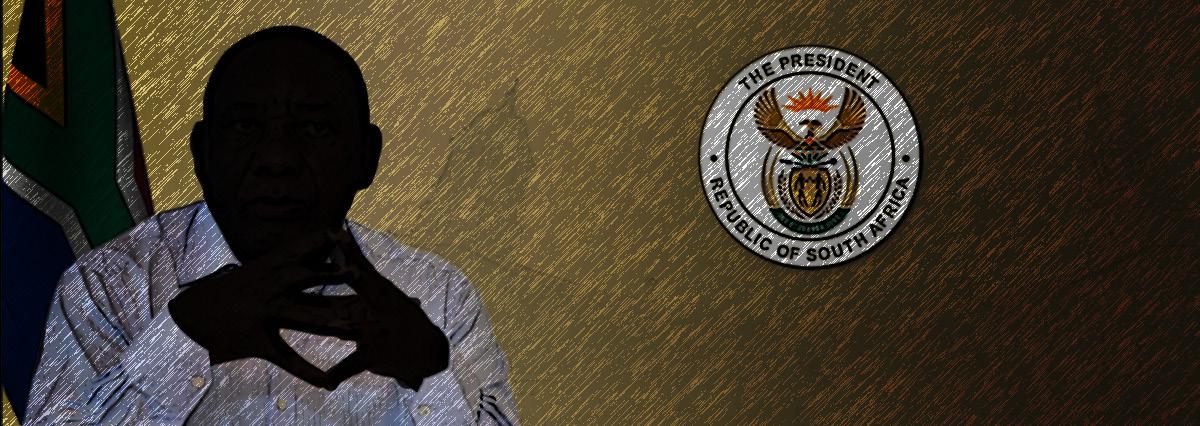
Nonetheless, there are around 600 US companies in South Africa. And over the years an increasing number of South African companies in sectors as diverse as mining, energy, chemicals, banking, health and wellness, and luxury goods have expanded their footprint into the US. We agreed with President Biden that we must do more to increase business between our two countries and have set up a joint task force on trade and investment to provide focus and direction to our efforts. Well, of course we will have to run this by our comrades in Beijing, New Delhi and Moscow, and also give old Bolsonaro over in Rio a slice of the pie, even if he’s a silly old rightwing kind of guy. Afterall, we are a member of BRICS, you know.
And yes, I know it could have been much more than 600 US companies by now if we had done certain things that everybody has been telling us to do. But I explained to Joe that he must understand, that our allies are the SA Communist Party and COSATU and we have a faction in the ANC fixated on radical economic transformation. I therefore cannot simply ignore them or anger them. And, after all, I need these guys to vote for me at the end
SATIRE
The President’s Desk FORERUNNER | www.forerunner.co.za | Issue 1 | 67
From
of the year when we have our national conference to elect new leaders. Joe said he understood, he knows how politics works when he can remember it, and then told me a long-winded story about his father back in the day that I didn’t quite get. And then I had to run for my plane to London.
But while in Washington, we also spoke to several US business leaders who expressed a keen interest in investing in South Africa. The visits we undertake to various countries, be they working visits, state visits or trade missions, are crucial for promoting investment and trade. They bring in investment and they create jobs. They also improve our relations with the countries we visit thus creating great opportunities for our country. But we like those opportunities coming our way, rather than the other way around.
Building strong partnerships with other countries is important, but it is not enough. That is why we are working to make our economy more competitive, more efficient and more attractive to both international and local companies. I just need to get this past the commies in my cabinet, you know… Gwede, Ebrahim, Thulas, Blade, Pravin and a few others. I tried telling Joe it’s hard doing the things that will please those capitalist Americans with all their money when you are sharing a bed with communists, deployed ANC cadres who know nothing, and what’s left of Msholozi’s state capturers. Joe said he cannot imagine how I do it. That made me feel good, coming from the man….
But the lefties and the grafters aside, first and foremost, I told Joe, we have to overcome the electricity crisis. Since late last week, Eskom has been forced to implement load shedding due to…oh hell, you know all the reasons by now – we’ve all heard them a million times before. So, here’s the thing. Solving the electricity crisis is necessary if we are to realise the potential of our economy. In 2018, we launched an ambitious investment drive to raise R1.2 trillion in new investments over five years. To date, and with still a year to go, we have raised more than 90% of that amount in commitments from both domestic and foreign investors. Okay, all right, I know not all of these were new investments in reaction to our drive; some of these commitments were just rehashed old ones, some were already being planned long before we thought of our investment drive.
Last week, I was at the launch of an automotive component manufacturing site in KwaDukuza in KwaZulu-Natal. I like launches and cutting ribbons. It’s better than having to deal with Andre’s electricity problems. Anyhow, the facility will create more than 4,000 jobs, nearly doubling the existing workforce. We just have to keep the next round of riots and looting in KZN at bay.
The company will supply components to a big American motor company which made a commitment at the South Africa Investment Conference in March to invest around R16 billion to expand the local production of their next-gen bakkie. And so on and so on.
Boring stuff. Much more fun selling wild animals and cattle with massive horns to, well, mystery buyers who pay with suitcases stuffed with dollars, and then playing hide and seek with those dollars. Now that’s fun! But I don’t want to dwell too much on that. As you know there’s an investigation going on and on and on and on and eventually everyone will forget about it and it will just disappear and maybe I can have Arthur Fraser put in one of those jails he used to run. When I sensed Joe was going to ask me about all of that, I brought up Hunter and Ukraine, so he quickly changed the topic. Knowledge is power (thanks Donald Trump).
Since this year’s South Africa Investment Conference, a total of 10 projects have been completed or launched to the value of R15.3 billion. Now this is what I call progress! See what can be done if you let the private sector do it and keep some of my colleagues out of it? Let that be a lesson to them. The recent launches of new investments and expansion projects show that both domestic and foreign investors see South Africa as a favourable place to invest and to do business. Okay. Sometimes. Admittedly, when they are not being mugged or murdered, or their factories and warehouses are not being burnt down by rioters and looters, or a thousand other little things. Do I really have to go on? It’s quite painful you know. Can we just skip this part?
All you, my dear fellow South African, needs to know, is that these companies recognise the progress we are making in several areas of reform, such as telecommunications, energy, water provision, freight rail and ports. The Presidency is working with several departments and other partners on cutting red tape in critical regulatory processes. That is why, if you now apply to Gwede’s department for a mining licence, instead of waiting fifteen years, it will only take ten until you get it… or a letter of rejection. That’s fast hey, don’t you think?
Anyhow, moving on. Despite the many challenges our country faces, the recent inflow of foreign direct investment from the US, Sweden, Japan, United Kingdom, Ireland, Germany, China and others is a vote of confidence in our economy. That’s good news, right? Now I just need you to vote for me and the ANC in the next election se we can destroy what’s left. Uh oh, sorry, I meant to say, so we can rebuild what’s left. Together, your votes and these investments make a clear statement that there is a great future for companies that do business in South Africa and that the case for investment is growing ever more compelling and, I daresay, a little more dangerous and uncertain.
With best regards,
Cyril the Ssquirrel
68 | Issue 1 | www.forerunner.co.za | FORERUNNER
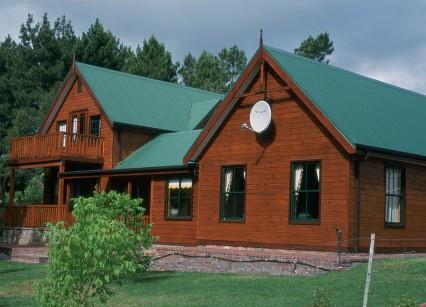
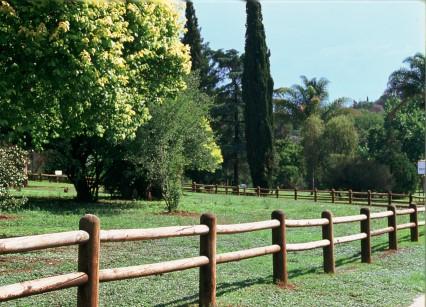
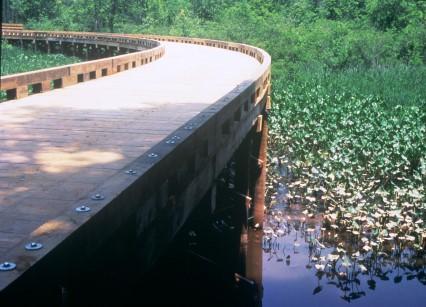
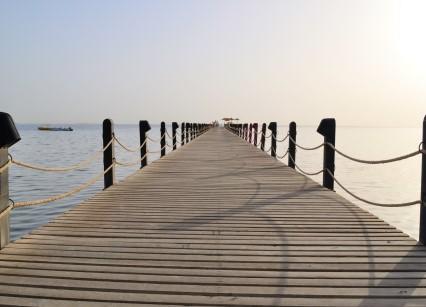

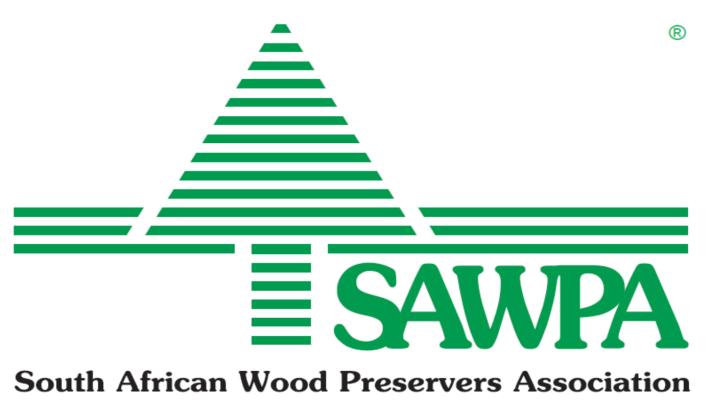
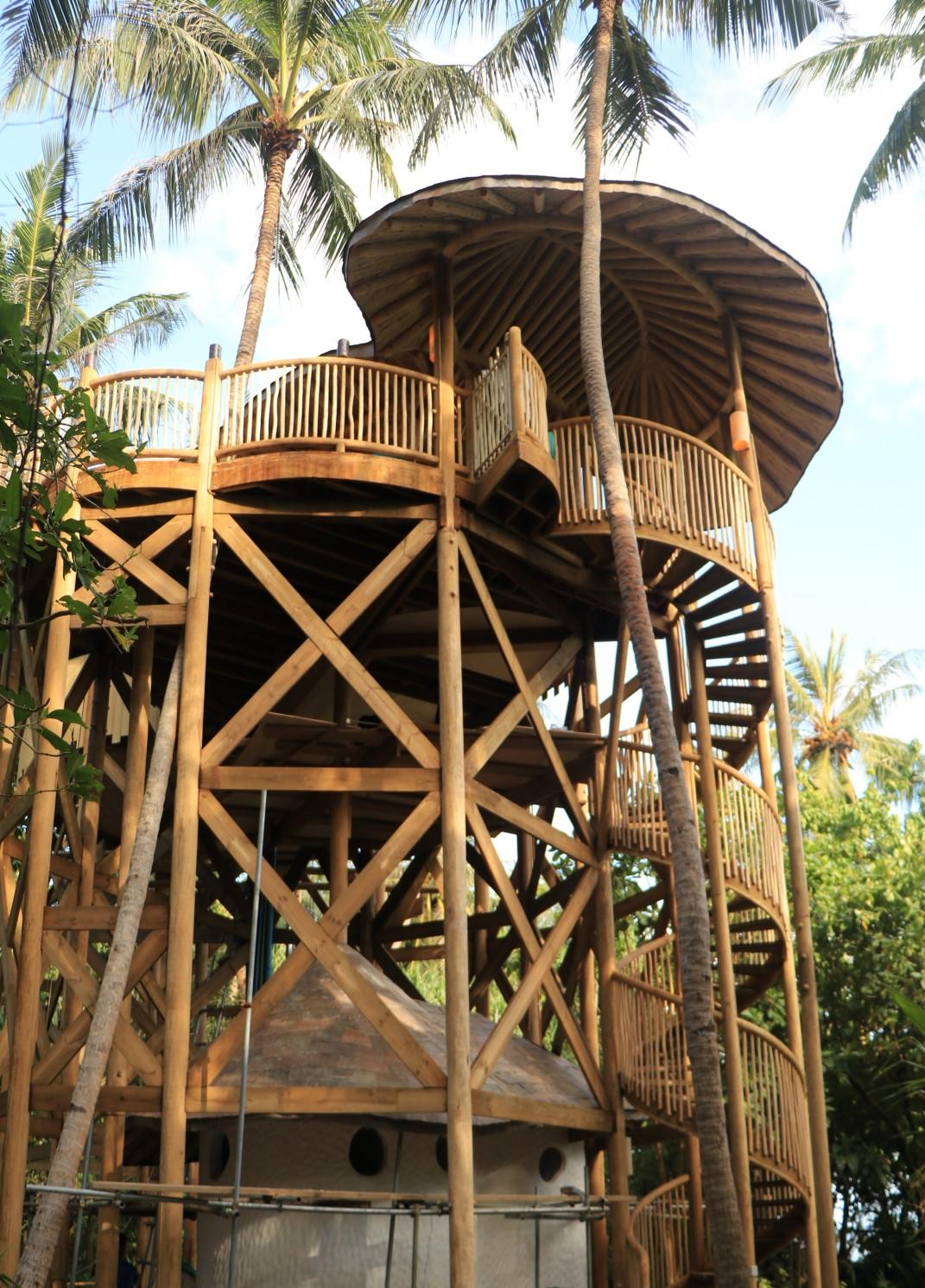
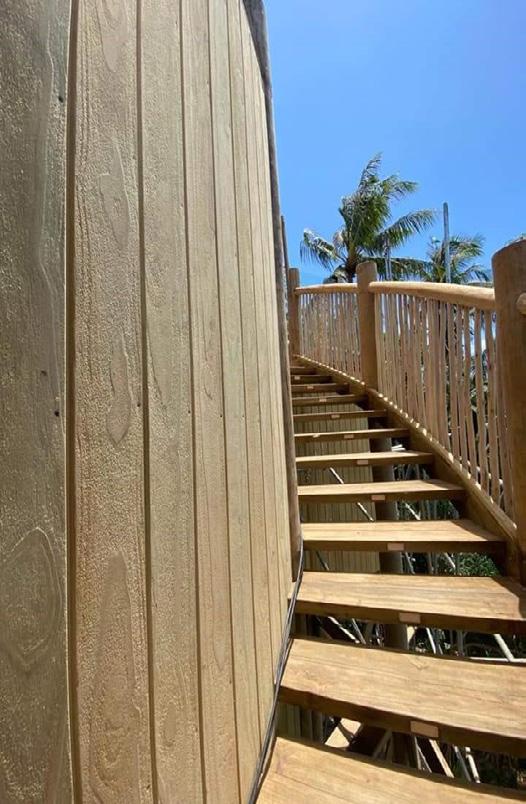
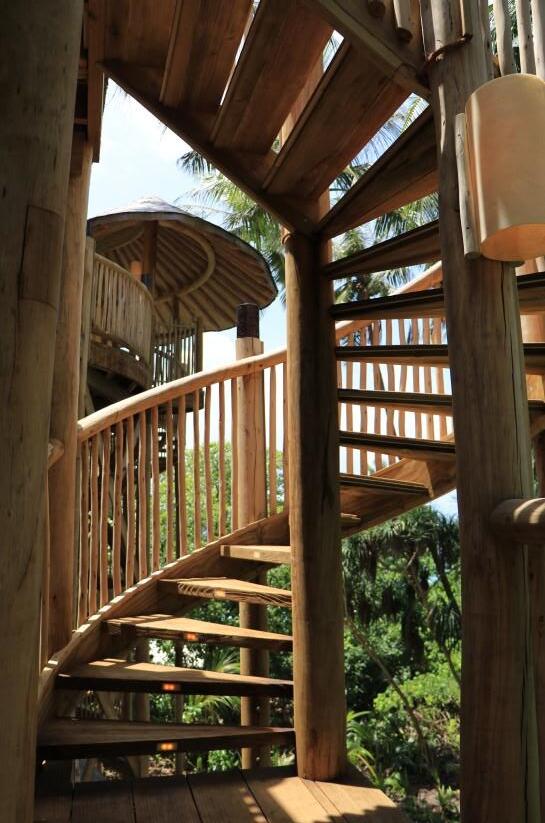
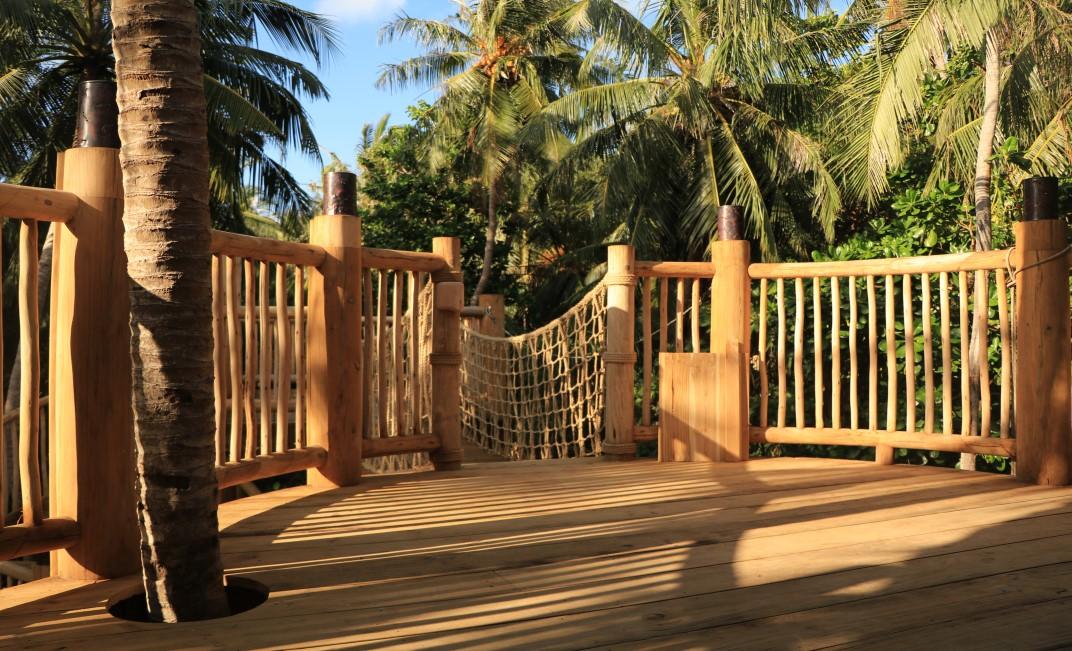
H2 H3 H4 H5 H6 Tel: 011 974 1061 admin@sawpa.co.za www.sawpa.co.za PROMOTING TREATED TIMBER PRODUCED BY SAWPA MEMBERS PROMOTING THE USE OF PRESERVATIVE TREATED TIMBER
POLITICUS
New national anthem for South Africa
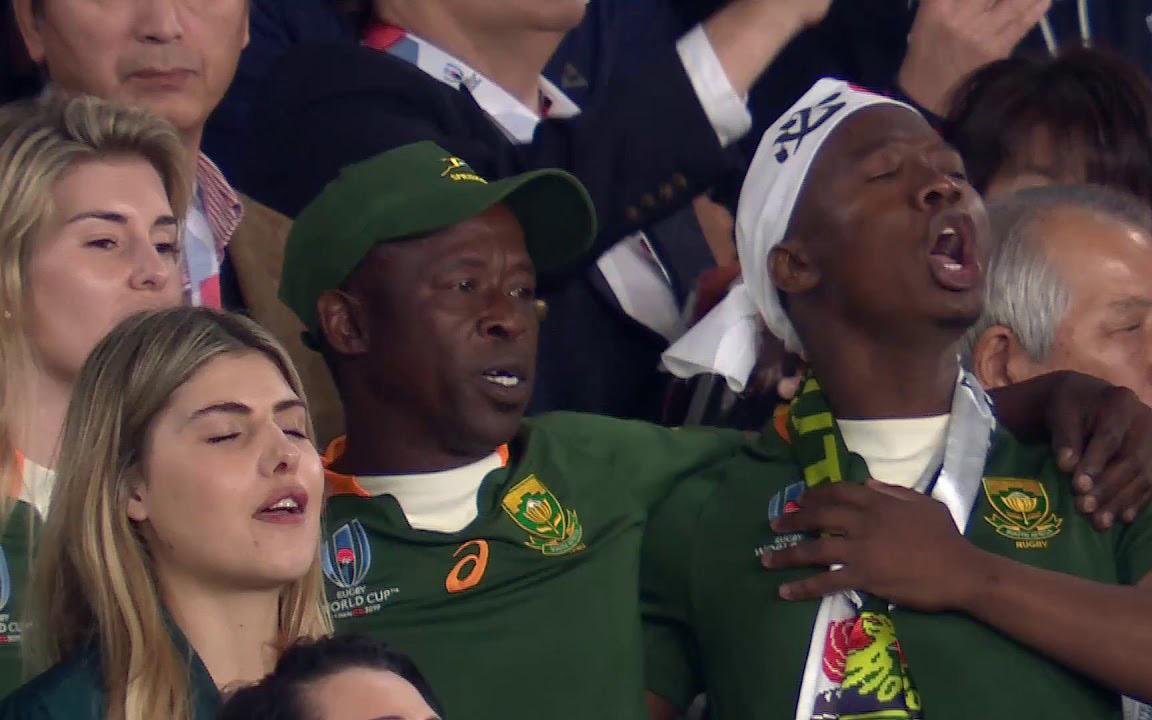
For several months now there has been a big and furious debate in the ANC around a new national anthem for South Africa. Back in the 1990s, Nelson Mandela extended a reconciliatory olive branch to Old South Africans (read whites) by insisting to his ANC comrades that their erstwhile national anthem, Die Stem, be included at least partially in a new anthem for the new South Africa – this resulted in a merger of Die Stem and Nkosi Sikilel’ iAfrika which should, perhaps, have been called The Rainbow Song. New South Africans (read blacks) happily agreed… until the ANC’s then Youth League leader, Julius Malema, was reborn and reinvented himself as an Economic Freedom Fighter who knows what’s best for everyone. His mission now was to hate and destroy Old South Africans – shooting their farmers and so forth - and banning everything white. It is rumoured his

bride was not even allowed to wear a white wedding dress, and got married in an orange and purple outfit, while blackface makeup was apparently compulsory for Julius’ white wedding guests, some of whom are wellknown in the dark cigarette trade. Nonetheless, Julius and his Fighters – not to be confused with the Foo Fighters – decided Die Stem had to go. Losing votes to the Fighters and not
wanting to be outdone by them with an election coming up, the ANC now also wants a new national anthem for South Africa. When the party recently voted on several proposals for a new anthem for South Africa, the song “I’m so broken,” first recorded by Thomas Whitman, won hands down. A close second was the song “I’ve never been so broken” sung by Eric Erdman. Both can be found on Spotify.
70 | Issue 1 | www.forerunner.co.za | FORERUNNER
ANC also adopts an anthem for the party
Talking of songs and anthems, during the same deliberations in the ANC over a new national anthem, a proposal was put forward by a delegate from Kraaipan in North West that the ANC should also adopt a new anthem for the party. It was argued by the delegate that the song, ‘Kill the Boer, shoot the farmer’, used to be the ANC’s anthem until “the EFF shamelessly stole our song even claiming they had been real freedom fighters once who sang the song in their bush camps – eish!” The delegates agreed and several proposals were then put forward and voted on. A song proposed by the ANC’s Ace Magashule Branch from the outer Free State hamlet of Vlooifontein, received the most votes. The song is called, “I’ll step aside”. The song was first recorded in 1946 by Idaho Call and His Sun Valley Cowboys, whereafter a succession of artists recorded versions of it, including Johnny Bond, Ernest Tubb, Hank Thompson and Brook Benton. However, “I’ll step aside” could not be played at the gathering of ANC cadres as the only copy they had, a fairly valuable old vinyl LP record from the 1950s, had somehow mysteriously disappeared. But if interested, you’ll
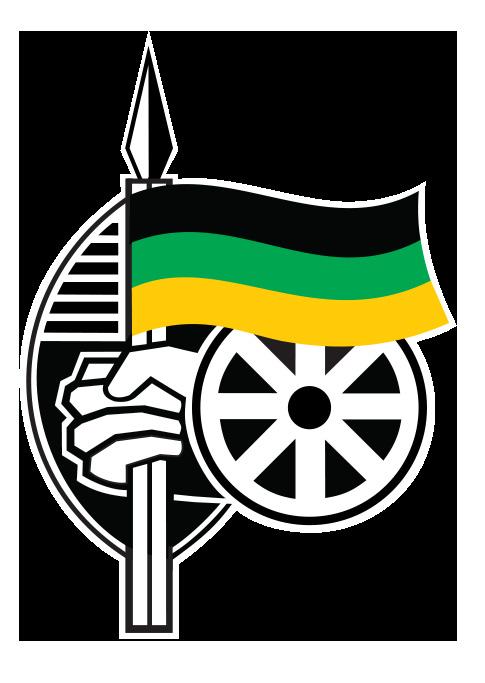
find it on SecondHandSongs and Spotify where all missing songs eventually turn up.
The world according to Julius
With apologies to Garp, Politicus brings you the world according to Julius Malema, the would-be freedomfighting Ceasar who hopes to rule South Africa as an egalitarian paradise for the next one thousand years – at least. Of course, to do so, his pal Jacob Zuma would have to call on JC to speed up his return to earth so the presently governing ANC can step aside as promised - remember? “The ANC will rule until Jesus comes”? Our impeccable sources in the EFF tell us the enigmatic Julius has already scripted his own crowning in the Union Buildings, which rather austere buildings he will declare to forthwith serve as his personal palace. Most likely it will be spruced up a little with some bling and glitter. A big party with Kanye West, Lil Wayne, badass Lady Skollie, Zodwa, Kim Jong-un, the other Kim (Kardashian), Grace Mugabe and many other celebrities is being planned for the big day. A relatively unknown band, Dali and the Advocates, has been booked to provide music. For lead singer Dali this will be as big a day as for Julius when he gets to whine into a celeb microphone for several hours deep into the night. Meanwhile, Julius has determined that his full title from that day on will be: Julius the Great, Emperor for Life, Lord of the Flies and of All the Beasts of the Earth and Fishes of the Sea, Conqueror of the British and American Empires, Duke of Darkness and Successor to Amin, Protector of the Realm of Cigarette Merchants, and The Only Other Man who can Walk on Water. Insiders say the plans for his grand crowning stipulate that there will be thundering overhead jets (if they are operable on the big day), military
parades with goosestepping soldiers dressed in red overalls, rolling tanks that will eradicate all the potholes, billions of balloons in the skies bearing likenesses of Robert Mugabe and Hugo Chavez, clouds of illicit cigarette smoke, fireworks that will be seen as far away as Vladivostok, lengthy Castro-like speeches that go on for days, and lorry loads of pap-en-vleis and KFC for all (plus of course the odd bottle of Chivas or Dom Perignon thrown in). At long last South Africa will be saved, and that horrible man, Ramaphosa, will be banished back to his game farm and his hidden dollar bills. Or so say the insiders who leaked this information. Meanwhile, befitting his great skills and talents that make him the ideal emperor, Julius even knows what goes on in the heads of former presidents like Thabo Mbeki, even if they don’t know themselves. Which is why Julius knows that Thabo Mbeki – who has an axe to grind – was working with former super spy Fraser, Arthur Fraser (just call me double o twenty something) to frame President Ramaphosa with suspicious hidden dollar bills and have Ramaphosa jailed instead of Zuma, but Mbeki knows nothing about this. Oh well, maybe Mbeki was just having a Biden moment.
The battle of the cockroaches (or, what not to call a politician)
What is it with this cockroach thing in beautiful Mzansi? All energised and freshly back from his Mazzotti family-sponsored all-expenses-paid

SATIRE FORERUNNER | www.forerunner.co.za | Issue 1 | 71
trip to Ecstasy Paradise, the rave party island of Ibiza, Julius Malema couldn’t wait to drag former convict turned businessman and politician Kenny Kunene off to the Equality Court for calling him an “irritating cockroach” and “that little frog”. Some people just never learn, do they. Way back in 2010, it was Malema who called the then DA leader Helen Zille a cockroach. He only apologised to her five years later after he was himself called a cockroach by the former National Assembly Speaker Baleka Mbete, who also had to apologise. When it comes to likening people to creepy crawlies and four-legged specimens or things that jump and go quack, Malema is a quite the veteran, having once called Public Enterprises Minister Pravin Gordhan “a dog” in Parliament. At least white South Africans are getting off lightly – they are only called “land thieves” by the inveterate Malema. In South Africa, however, cockroaches definitely rule the roost. But Politicus is a little uneasy about the derogatory use of ‘cockroach’, even when applied to dear Julius, for it featured prominently in the Rwandan genocide. But “that little frog” … well, look at him dammit. I never could understand what Julius’ beautiful wife, Mantwa Matlala, saw in him! Lastly, the irony of Julius and Kenny fighting – they were once cockroaches in arms (or is it comrades in arms?) in the EFF before Kenny defected to the Patriotic Alliance. In the latter party there are no cockroaches, only former convicts, if that means anything.
Bheki Cele to the rescue, even if
Bheki Cele, our esteemed Minister of Police of shut-up-and-get-him-out-ofhere fame, also known as something of a Mad Hatter who once styled himself a general although never having served, has gone and done it
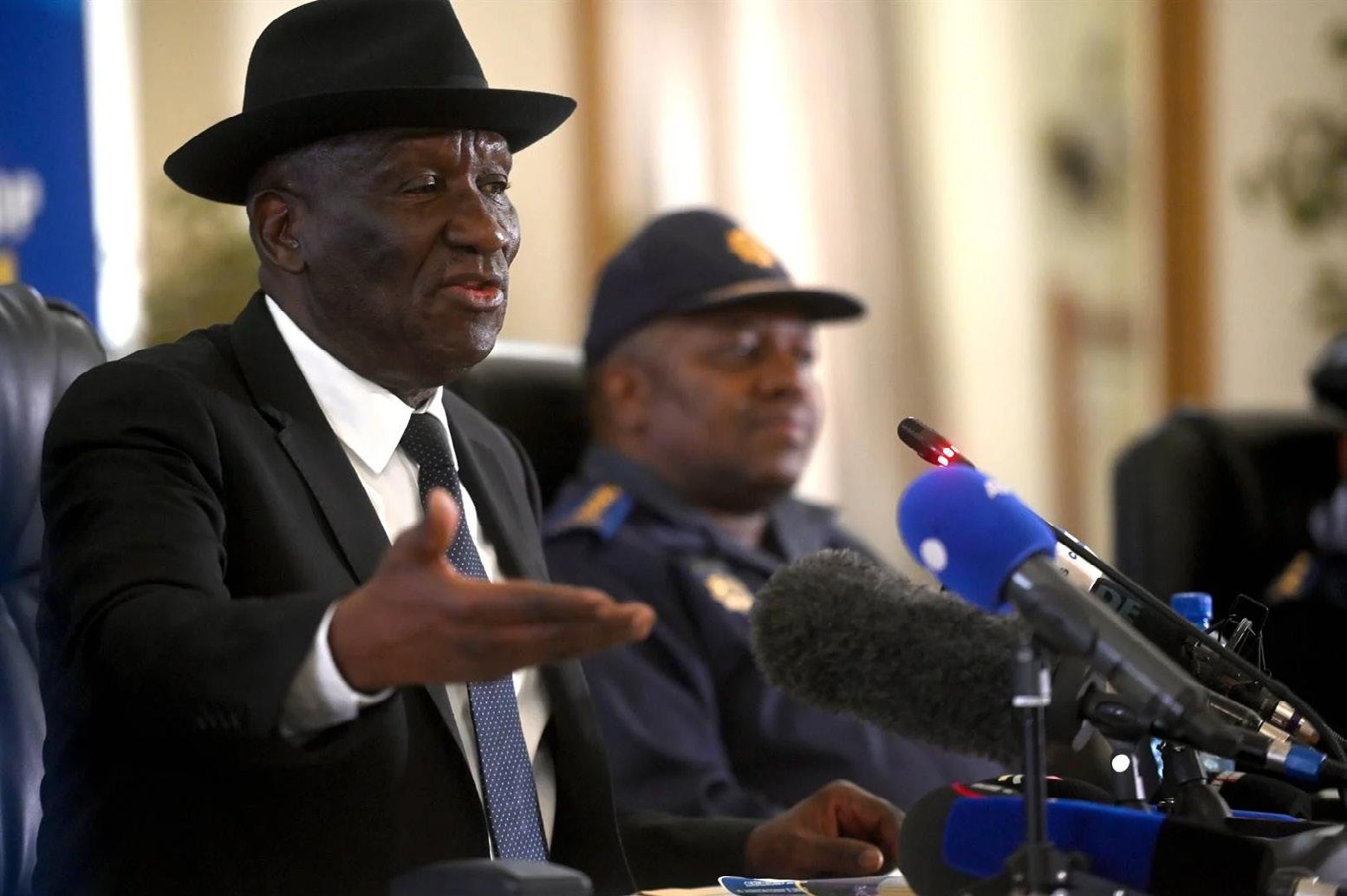
again. Following months of multiple attacks on long-distance buses in the Western Cape and Eastern Cape, accompanied by violence, arson and extortion, Cele finally held a media briefing to announce the formation of a specialist police task force to deal with this. Yet at the same briefing Cele could not help himself and added that these attacks were a transport matter and really had nothing to do with the police. So… why create a special police task team?
Politicus is certain the answer is hiding somewhere under one of those fancy fedoras or behind that well-worn face. Perhaps Cele does not really care what he says at a media briefing as long as he can have one. Because his love of media publicity is no secret. Perhaps he was leaving the door open for another lover of such briefings, Transport Minister Fikile Mbalula, to have his own one in front of the cameras. Nonetheless, who can forget when Covid-19 and the lockdown were in full swing – with his rock-and-roll buddy Nkosazana Dlamini-Zuma having banned all cigarettes and booze – it was Cele who summoned the news hacks and
their photographers to road blocks manned by himself, where, to the deafening clicks of cameras he would haul hapless drivers out of their cars, make them open their boots, and lick his lips as he confiscated their Mazzotti cigarettes and bottles of wine without labels, in a perfect imitation of Butch the Bulldog. That’s what police ministers do, dumb ass. This was after all, Prohibition Version 2.
• Disclaimer: This is sheer unadulterated satire where all names and places are real, and all incidents have been changed to protect the unfortunate nincompoops. Noone should construe any of this as being the truth whatsoever, even if it seems close. Opinions are those of the author and all puns and insults are intended… or, on second thoughts, maybe not. Identities of sources cannot be revealed because they don’t exist; they are all just whistling little birdies.
it’s only a transport matter
Politicus 72 | Issue 1 | www.forerunner.co.za | FORERUNNER
A CFO’s best friend - Level Up with Sage Intacct
Haven’t switched yet?
Here’s why you should consider Sage Intacct:
Cloud-native from day one
Sage Intacct is built from the ground up to fully embrace the advantages of the cloud. Save on IT costs, experience unparalleled flexibility, escape the chains of software maintenance and rest assured your financial system is secure.
Key features and benefits
Sage Intacct integrates with existing tools and automates tedious processes to free your team.
Accounts payable & receivable: Streamline workflows and get paid faster.


Billing: Automate complex revenue and billing processes.
Let’s get you running your company like a boss!
65 Phillip Engelbrecht Ave, Meyersdal Office Park Meyersdal, Alberton, Gauteng, 1448


Cash management: Track multiple accounts with real-time visibility.
General ledger: Consolidate multiple entities, currencies, and geographies in minutes.
Order management: Automate and accelerate cash-to-quote cycles.
Purchasing: Achieve speed, accuracy, and visibility with structured transactions and approvals.
Dashboards & Reporting
Unite your data: Get greater visibility across multiple data sources.
Dimensional, predictive analytics: Gain full visibility for real-time decision making.
Build new dashboards in minutes: Analyse business metrics on-demand.
Choose from over 200 prebuilt visuals: Edit them, or create your own.

Partner +2710 109 6124 info@osholdings.co.za
Biography
Being forced to take two “gap” years while studying because of a shortage of funds did not hold Busie Yekwayo back.
Instead, she used the experience as inspiration when her parents gave her the opportunity to study again.
She now advises and assists young people to avoid what she went through.
Busie holds an Accountant designation (Professional Accountant), Economic Empowerment Professional, MBA and is a member of the Institute of Internal Auditors South Africa.
She is also a director of the accounting firm, Emiyoli Consultants.
Broad-Based Black Economic Empowerment legislation has enormous potential to lift many thousands of South Africans to a new level of economic prosperity.
The Assurance Verification Agency will do everything it can to assist people and companies to participate positively in this arena, boosting ownership of assets, generating jobs and creating long-term inter-generational wealth.
Key values
• Integrity
• Trustworthiness
• Transparency • Accountability
• Customer-first Mission
• Stimulate revenue growth
• Client satisfaction
• Reduce unemployment
• Empower black youth
Enabling transformation of the economy
The Assurance Verification Agency does important work in promoting South Africa’s B-BBEE strategy, enabling black people to own companies and hold management positions.
Managing Director
Services
AVA facilitates transformation by assessing, verifying and validating the B-BBEE contributions that are made by entities in supporting the B-BBEE strategy.
Among the services that AVA offers are:
• Issuing of B-BBEE certificates to audited EMEs, QSEs and large entities upon completion of the verification process which assesses compliance on black ownership of the company, management control, skills development, enterprise and supplier development and socioeconomic development.
• Verifying enterprise and supplier development contributions, complex ownership structures, including JSE-listed companies, and issuing B-BBEE reports.
• Issuing of Joint Ventures B-BBEE certificates.
• Training of individuals and companies.
Staff
More than 80% of AVA employees are young black women with Accounting, Auditing, Law, Human Resources and Administration qualifications, the key expertise required in the B-BBBEE field. Staff are trained and encouraged to start their own businesses.

SANAS compliance
AVA is compliant with SANAS R4703 and adheres to Department of Trade, Industry and Competition standards. AVA is allowed to issue B-BBEE certificates and reports to small, medium and large entities, public entities and state-owned entities.
Your efficient and accurate partner.
Growing the economy
AVA plays a key role in terms of the national B-BBEE strategy, which has enabled black people to own managed companies and hold management positions in big companies.
This has also enabled skill transfers, access to procurement, enterprise development and socio-economic development.
Company history
Company founder Busie Yekwayo was on a path to become an accountant but became intrigued by the possibilities the B-BEEE sector offered to uplift black people economically.

As she recalls, “I wanted to assist in reducing youth unemployment by employing more youth and teach ing them skills so they could own their own companies.”
The competitive market when the firm started out in 2011 proved challenging, but support came from family, friends and associates and slowly the company grew and achieved brand recognition.
Today, some of AVA’s clients are JSE-listed companies.
Busie outlines the qualities that have served her well in building AVA as a business: “I was willing to make mistakes and learn from them.
The most vital thing is to have you main objective and your own 'why' for doing something.”
Your efficient and accurate partner.
CONTACT INFORMATION
Email: Info@assuranceva.co.za
Tel: 031 942 6604
Cell: 071 493 9423
Website: https://assuranceva.co.za
SPINACH KING Lufefe
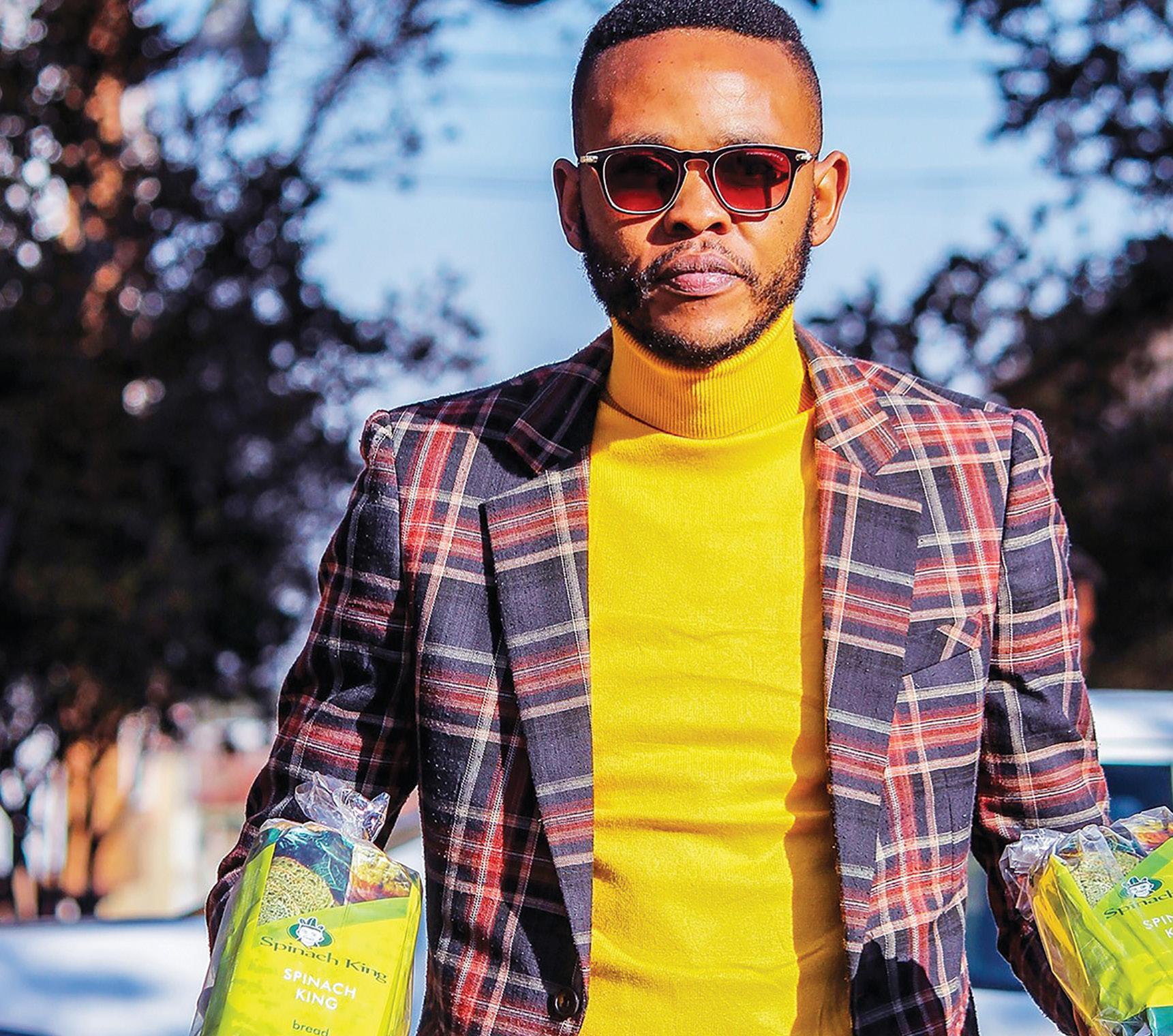
Nomjana 76 | Issue 1 | www.forerunner.co.za | FORERUNNER
About Us
Spinach King was established by Lufefe Nomjana, from the RAA UCT graduate school of business. The aim of the company is to promote the consumption of spinach and other veggies by producing innovative spinach products. Spinach contains all six major classes of nutrients, and it is one of the most highly affordable vegetables in the world. Spinach Kings wants to make theses nutritious products more easily accessible.
The Story Behind
“My neighbour agreed that I could use her oven during the evening if I was out of the kitchen by early morning. I only had R40 capital, so I started by baking three loaves of bread per night and going around the community during the day selling door-to-door. I used one loaf for sampling and sold the other two.”
Areas of specialization
Spinach King specializes in all areas within the industry. We like to focus on the initial set up of business and run with clients, to give a more hands - on approach. And ensure the success of our products in store.
Our Core Products
Gluten Free Products
Gluten Free Spinach Roll
Low GI Spinach Bread
Low GI Spinach Roll
Green Smoothie
Green King Burger
Green Queen Sandwich
Freshly Squeezed Bottled Juices
Spinach King Burger
Our Branches
• Spinach King Khayelitsha
• Spinach King Philipi
Missio n
We s trive to be a strong and reliable partner i n all areas of our business activities.
Vision
To become the number one supplier o f gluten free bread and nutritious products in South Africa and the rest of the world.
Values
Ho nesty, Integrity, reliable, profess ional and quality service
Our Commitment
We dis tinguish ourselves from the co mpetitors by delivering prompt and accurate service to our clients in the most professional, efficient and reliable manner. And we also give our clients the assurance that we will be there when they need us.
• Spinach King Waterfront
• Spinach King Langa (Social Franchise)
• Spinach King Johannesburg
Our Clients
• Wellness Warehouse Food store chain (nationally, but we are currently supplying Gauteng and Western Cape)
• Spar Store food chain (nationally, but we are currently supplying Gauteng and Western Cape)
• Deli stores such as Organic touch, Organic living, Nutricoach, Michael’s Kitchen etc
• Shoprite & Checkers Commercial Farming contract
Note: The total number of our current store supply is 80 and growing by 3 and 4 stores each month
FORERUNNER | www.forerunner.co.za | Issue 1 | 77 Company Profile Showcase: Spinach King
Social entrepreneur Lufefe Nomjana’s business model is as fresh as the superfood he advocates.
Creating a value chain to benefit business and residents in South Africa’s informal townships requires skill and perseverance, but that is the incredible success story of entrepreneur Lufefe Nomjana with his Spinach King franchise. Nomjana has grown his business
from an initial stake of R40 ($2), four bunches of spinach and the use of a neighbor’s oven in 2011, into a franchise operation that currently has five stores, and growing, and distributes products into selected retails outlets in the Western Cape and Gauteng provinces of South Africa.
And it is all built around the concept of nutritious eating and promoting a healthy lifestyle,
something Nomjana believes is under-valued by township retailers.
“With Spinach King, we are not changing what people are eating, but providing a healthier version of it,” Nomjana tells FORBES AFRICA. “For example, our spinach bread, our green burgers and sandwiches.
“We are not saying to people, don’t eat burgers. We are rather saying when you do, have it inside a gluten-free spinach roll and with a spinach smoothie instead of a soft drink.
“People assume that healthy eating is not important to residents in the townships, but that is not the case at all. Attitudes are changing and people are seeking healthier options.”
After the instant success of the business, Nomjana was nominated by the United Nations for a scholarship at the University of Milan in Italy, where he enrolled for a course centered on nutrition and food sciences that he ultimately finished at the University of Cape Town. It armed him with the skills to take his business to the next

78 | Issue 1 | www.forerunner.co.za | FORERUNNER
level, which was to open a retail outlet in Khayelitsha, Cape Town.
“It is a bakery from which we produce and supply our products, but also has a café and juice bar set-up for retail. That was in 2016 and it is still doing very well, even through these tough times with Covid-19.”
Soon afterwards, a Dutch student doing an MBA visited Cape Town and caught onto the concept, providing Nomjana with his first franchise opportunity.
“He loved it so much that he pitched it to the University of Amsterdam as an outlet for their students and we set that up in 2017. It was doing very well until Covid-19, when campuses were closed, but they pay royalty fees every six months and it has been a great learning curve to have the brand in another country.”
Nomjana also has an outlet at the Old Mutual head offices in Cape Town that service their 9,000 staff members, another success, and has just launched a fourth store in Philippi Village, also in the Mother City, a 6,000 square-meter business space where entrepreneurs can run their operations at a fraction of the cost of normal retail rental and overhead rates.
“Usually we speak to schools who have available land, or residents, who become part of our value chain.
“We have got around 50 ‘gardens’ in the townships from where we source our ingredients directly and so this is a large value chain that not only benefits us as a business, but also the wider community.”
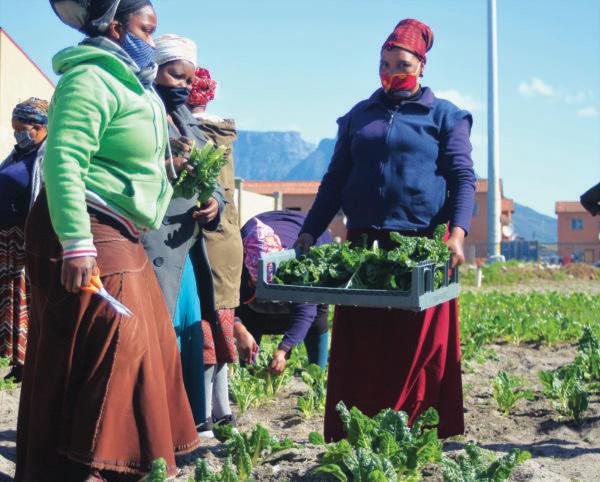
Nomjana has also recently developed a distribution warehouse and café in Maboneng, Johannesburg, from where he now sells his products into Spar, Wellness Warehouse and other outlets in Gauteng.
“That will keep us busy for the rest of 2020,” he says. “But in 2021, the plan is to grow into the Eastern Cape and KwaZulu-Natal [also in South Africa], they have great potential.
“And, of course, ultimately we would like to franchise this concept into Africa in the coming years. Where you have the space to grow vegetables, you can turn that into a thriving business. What we have done with Spinach King is proof of that.”
Tel: 084 362 4252
Email: info@spinachking.co.za
Web: www.spinachking.co.za
“They grow the ingredients for us and we buy from them for our retail operations, but we also assist them in selling what we don’t use into retail stores. So it is a win-win, we get our ingredients at a good price, but we also help to keep our suppliers sustainable.
CONTACT US Green Health Innovations t/a Spinach King SA
FORERUNNER | www.forerunner.co.za | Issue 1 | 79 Company Profile Showcase: Spinach King
WAYA WAYA GLOBAL MEDIA
Where We Build Your Visions
Waya Waya Global Media is an ICT business prepared to learn so as to grow from partnering with well experienced businesses in our field of interest, registered with the prominent aim of competing in the economic stream building social structures in the whole country and the world if need be. We patriotically and confidently feel that any project relating to our experience and field of specialization will be efficiently conducted timeously, as will be expected.
Waya Waya Global Media was the first ICT company in the rural Sekhukhune to train and supply computers, printers to tribal authorities and telecommunications accessories.
1. What is the nature of my business?
Waya Waya Global Connection is a multifaceted kind of business that is asically in consulting and financial services. It is not limited to its subsidiaries hence the name “global”.

80 | Issue 1 | www.forerunner.co.za | FORERUNNER
2. What is your most recent Success with Waya Waya?
My most recent success is when I signed a two (2) year contract to give financial loans to private and public mega infrastructures globally. And the contract is signed with an investment company in the Middle East. We are financing without collateral, and our ROI is paid back at 2.5% interest charges annually. We received six (6) private applications from South Africa, Lesotho, Kenya, and already one private project named Smart House Africa was approved for R4.7 billion
3.The history of Mr. P. Phala
Patson Phala is a born from the family of eight children, himself last born who completed his matric in 1999, Mpilo High School, Marulaneng in Sekhukhune District, Limpopo Province. I have not been to tertiary education because I never trusted the system of education in S.A. Self trained entrepreneur who attend short courses and workshops in entrepreneurship with “Edu North” in Limpopo and other institutions scattered around South Africa.
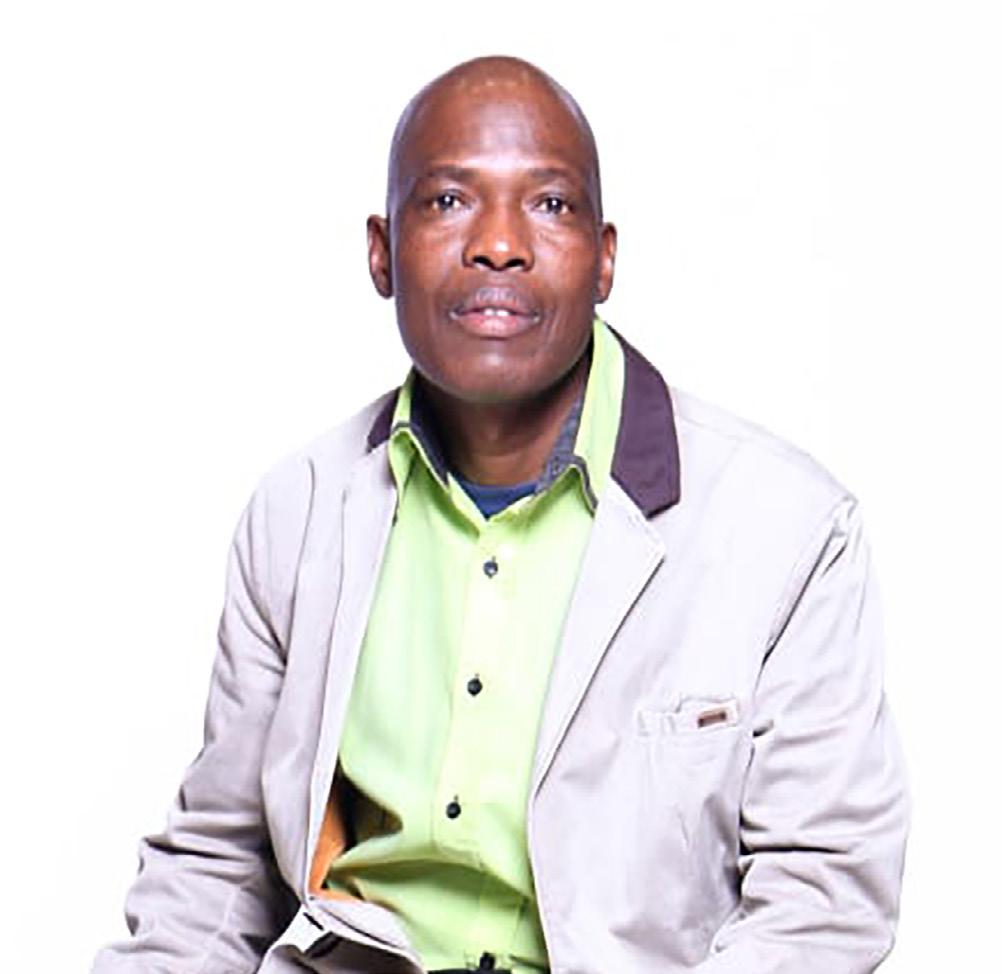
I am an author (Who Am I: Blacks Awakening) motivational Orator, Media Commentator, Comedian (with CD recorded), Civil Right Activist, published many articles and am not a card carrying member of any political organisation in the world. Public speaker on education and was invited to University of Leiden inn Holland (see pictures attached). Wrote a document to the Ministry of Education in 2016 August; on the topic “Education and Skills Mismatch” in South Africa. ( Attached copies). I organise Career Expo to Grade 12 and university graduates as I believe that “Career” is never a choice since
it comes from within. It is God’s gift.
4. My journey as Ceo been like?
My business was registered as Waya Waya Communi-cation in 2000, as close corporation and later in 2014; upgraded it to Waya Waya Global Connection now as pty ltd, and since then, I moved to Jane Furse Plaza to do printing and graphic works. It was challenging because to comply with rules of the game such as labour laws, and how to hire and employ the right employees was challenging in rural areas. Being the Ceo at my age then was so hectic because people never believed I am the one, and at times they would ask to meet my “boss” and I then decided to hire a personal Assistance (PA) which solved lot of questions and protected me against harsh words from so called “highly educated” people. They thought I was working for some Nigerians as my business was the busiest, most frequented small business in my area because of my well branded ladies staff, and how professional I trained them in customer care services.I created a good relationship with all the big four banks in
 Mr. P. Phala
Mr. P. Phala
Company Profile Showcase | Waya Waya FORERUNNER | www.forerunner.co.za | Issue 1 | 81
my area, such that people thought i had some stake in them (banks).
5. How have I handled my challenges to date?
I approached big companies such as Eskom, the banks, and the Prepaid company. With Eskom we started donating pre-used computers to rural schools in 2010.
Banks: We signed some working relationships in servicing organised burial societies when opening club accounts to go via my office, and my workers never walked to the bank to open savings accounts, but my manager was tasked to call the bank into my office to open them savings accounts while on duty.
The Prepaid Company: my agreement with them was to sell sim cards in bulk to our tribal/ traditional offices and all High Schools in Sekhukhune and later data and airtime to them (Community of Sekhukhune). It was the biggest contract negotiated by a small business from a rural area and unfortunately people in the higher authority did not like it. Three weeks after the launch, I received an email lying to me that 22 out of 24 Rica machines had factory faults and the Prepaid Company sent some to collect in order to service/fix them, and had promised to return them in good order and they were never returned.
6. My Leadership style?
I am one kind of a leader who believes in open engagement with my team, irrespective how junior staff they are. I encourage individual creativity. My team normally holds staff meetings every wednesday from 8hr to 11hr, and chairing the meeting is rotational.
7. My goals as CEO?
My company slogan: “Investing Tomorrow Today”. I never believe in just making money from business to grow, but also taking my team along. I encourage my team members to participate in the broader debate of business growth.
I am working in opening consulting offices in Dubai, Malta and the UK.
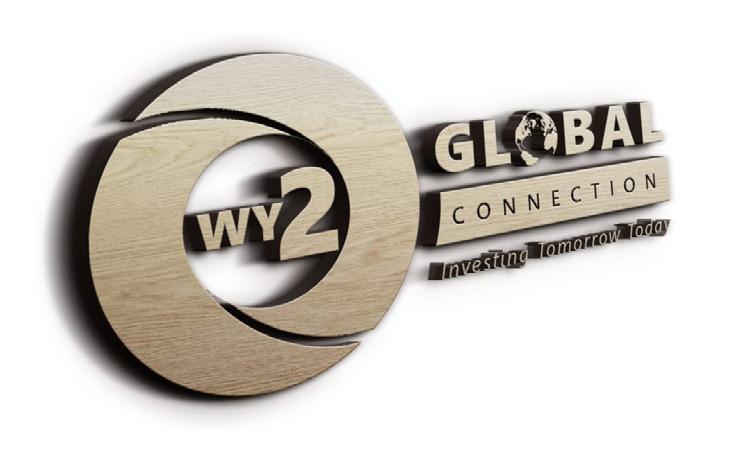
8. Where do I see Waya Waya in the future?
The name “Waya Waya” is a global brand, in Sepedi language meaning “go go”. My eye is on the global stage as at the moment, I am patending “ WhoAmI -the App’ in the US to become an App which will solve the problem of unemployment and reduce divorce rate. Save the government a lot of money on bursaries and scholarships and increase production in the workplaces. The App will be launched before the end of 2022, with my “Waya-Waya Sneakers’’ brand and the book; “Who Am I: Blacks’ Awakening ‘’ published with Amazon.
Contact Details TEL: 079 125 1300 078 649 0106 EMAIL: patson@wayawayaglobal.co.za 82 | Issue 1 | www.forerunner.co.za | FORERUNNER

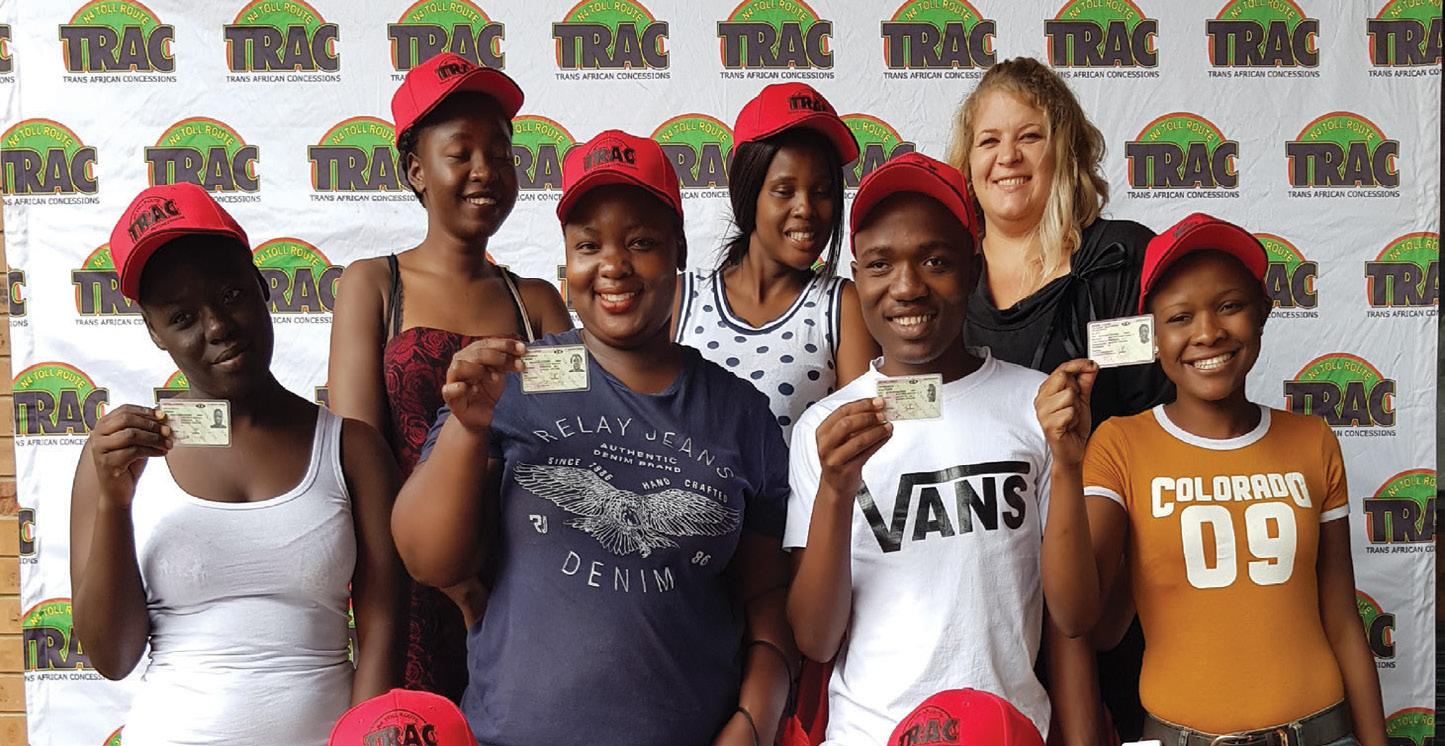
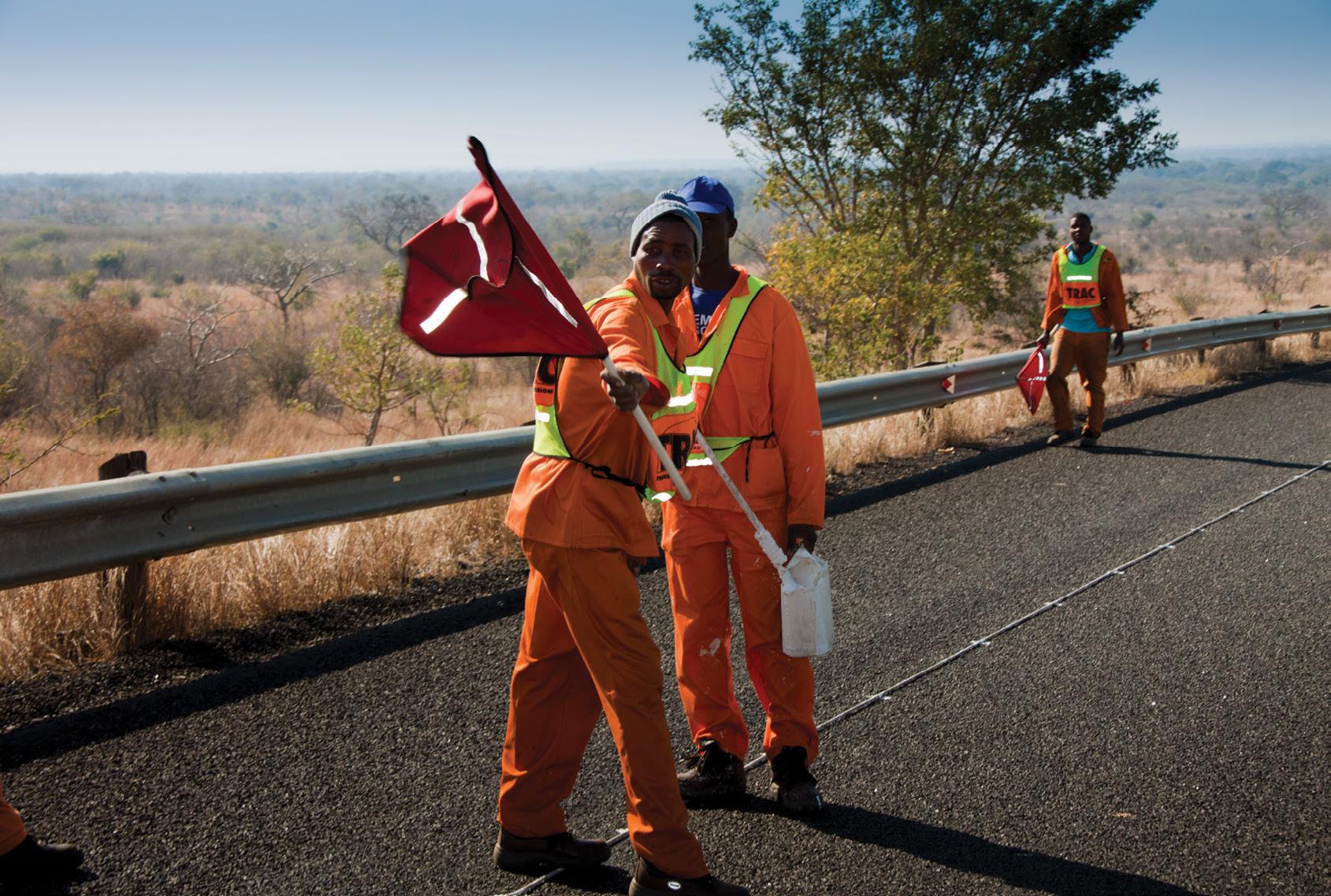

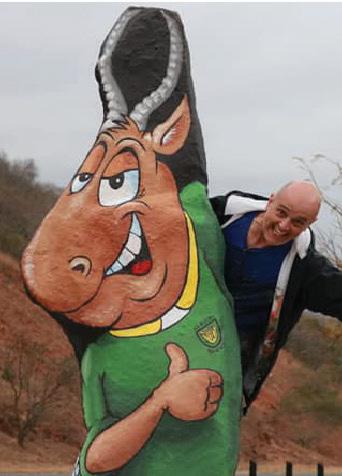
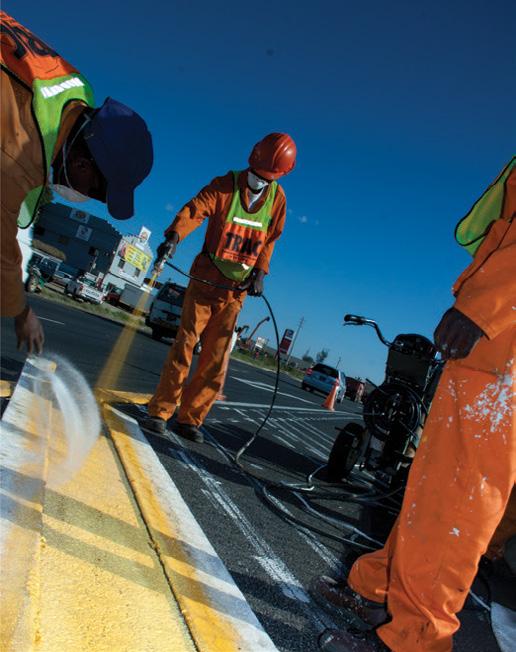
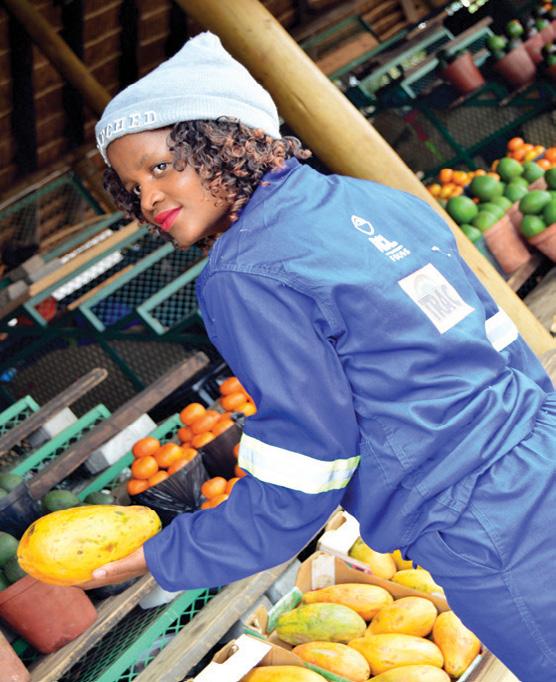
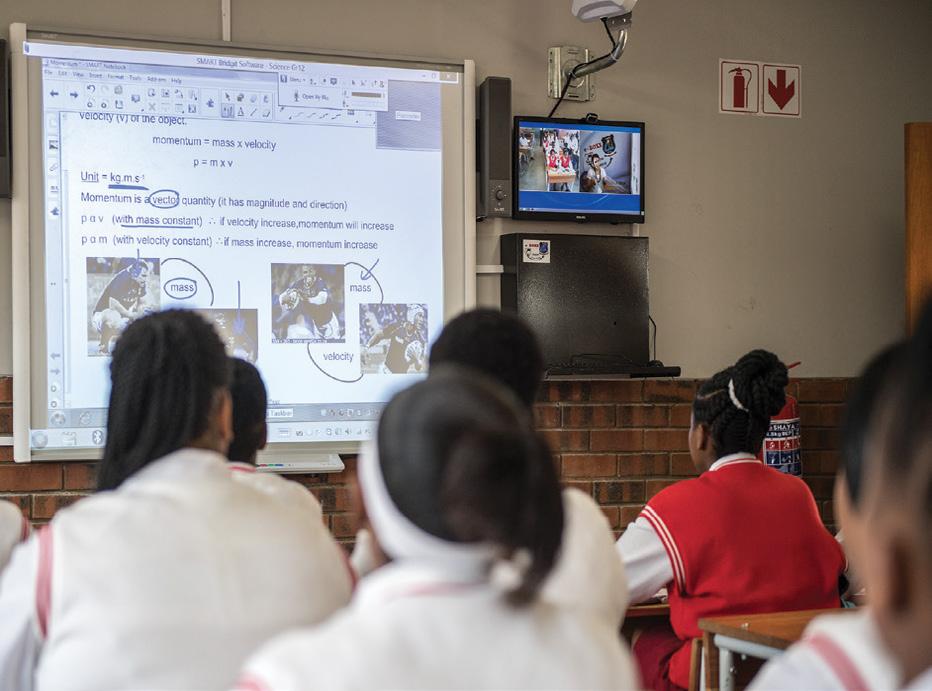
more than just a road UPLIFTING, EMPOWERING & ENRICHING 0800 87 22 64 (SA) 800 9022 (MOZ) Social responsibility is more than just financial support – it is about people – how to benefit and empower them in the ways they need most. Social responsibility is also about establishing valuable, long-term partnerships and closing the divide in communities. TRAC is passionate about uplifting, empowering and enriching the communities along the TRAC N4 Route














Contact Tel: 011 726 5543 Cell: 079 567 4416 Email michael@mcpelectical.co.za carlos@mcpelectrical.co.za player@mcpelectrical.co.za info@mcpelectrical.co.za 8 Pound Rd, West End, Kimberley Electrical Engineering MCP Electrical CC




















































































































































































































 Mr. P. Phala
Mr. P. Phala






















